

Vol. 15 1technation.com ADVANCING THE BIOMEDICAL / HTM PROFESSIONAL 12 Professional of the Month Gerceia Lee, CBET 42 Roundtable Ultrasound 50 Cover Story Focus On the Future: Imaging Service Career Path 78 The Future Training to Repair Emerging Health Devices MAY 2024 AAMI eXchange GUIDE TO THE PAGE 56




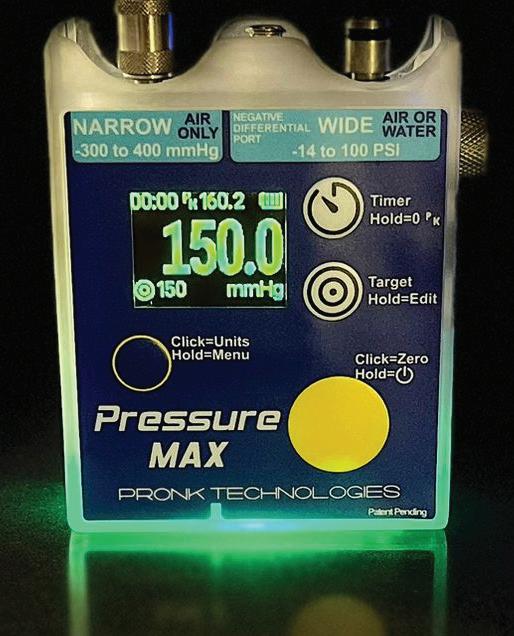


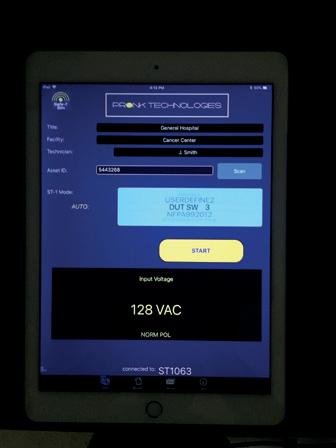





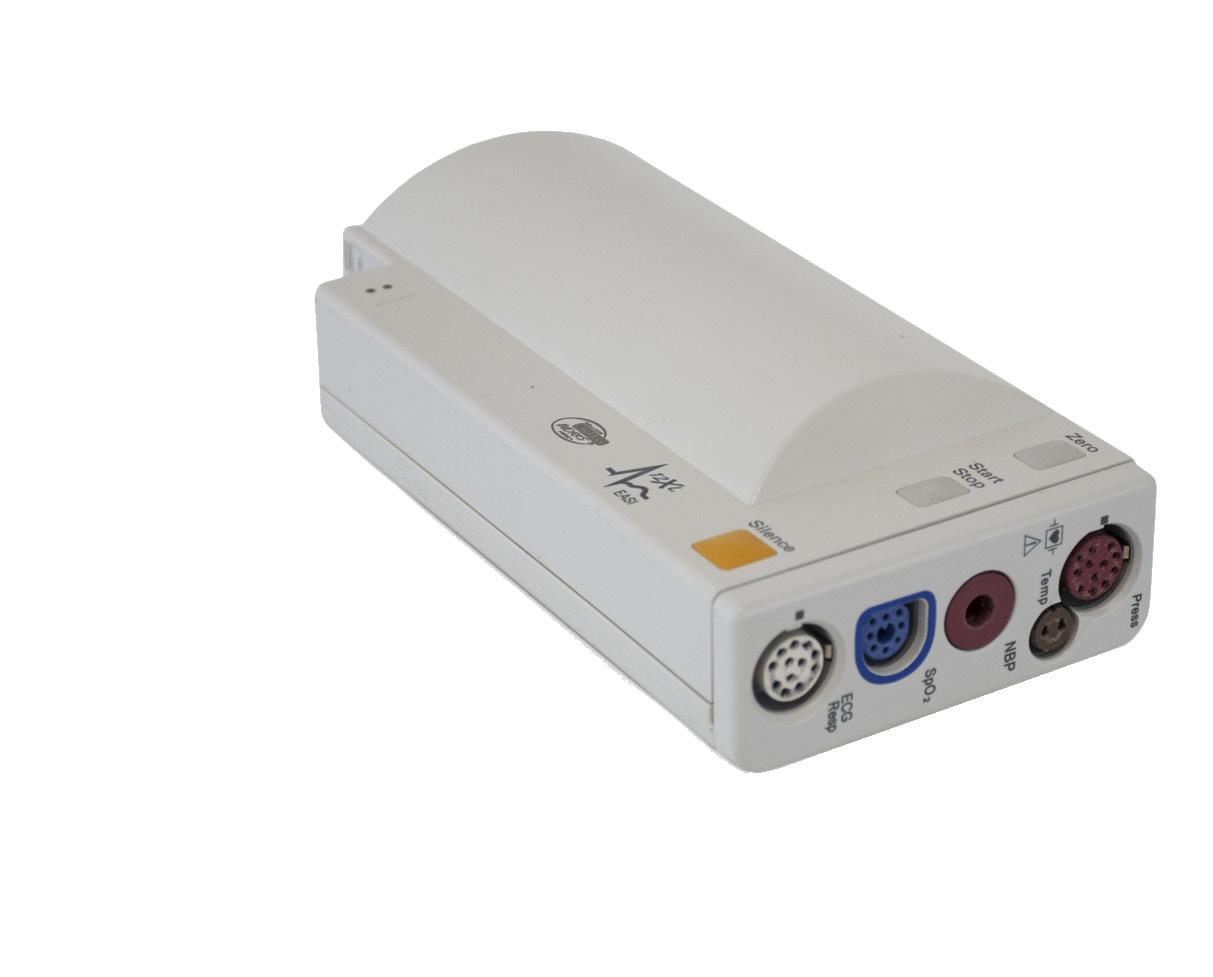
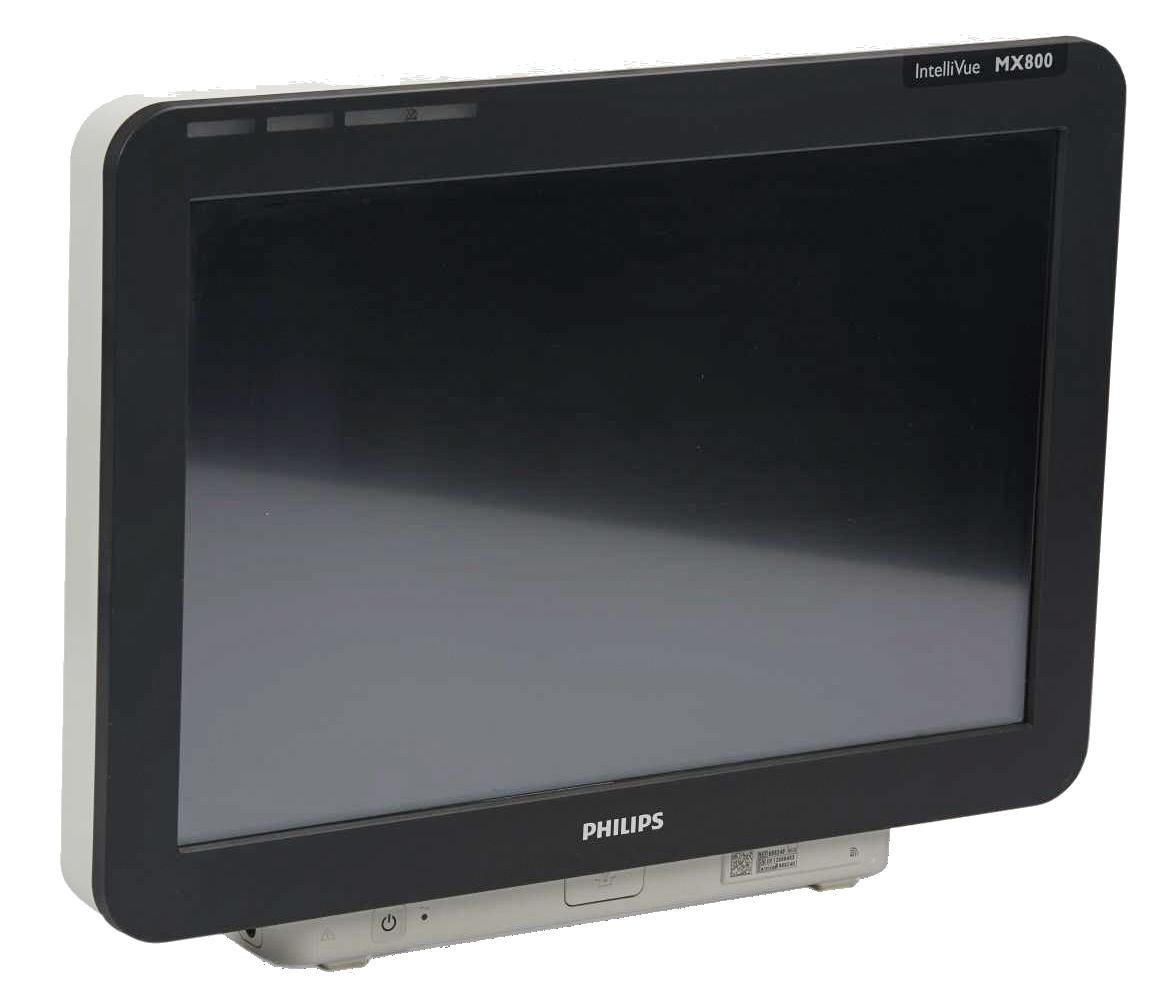
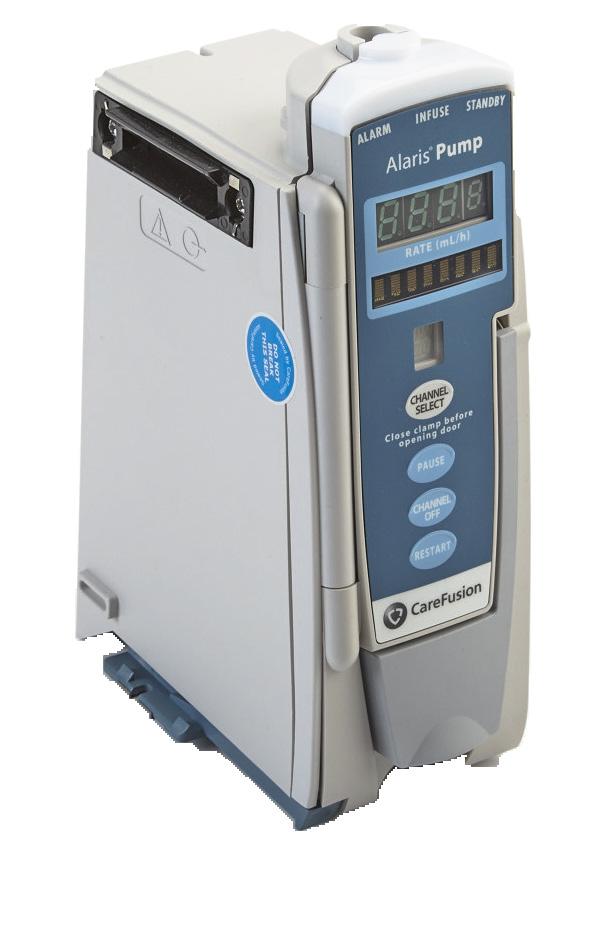
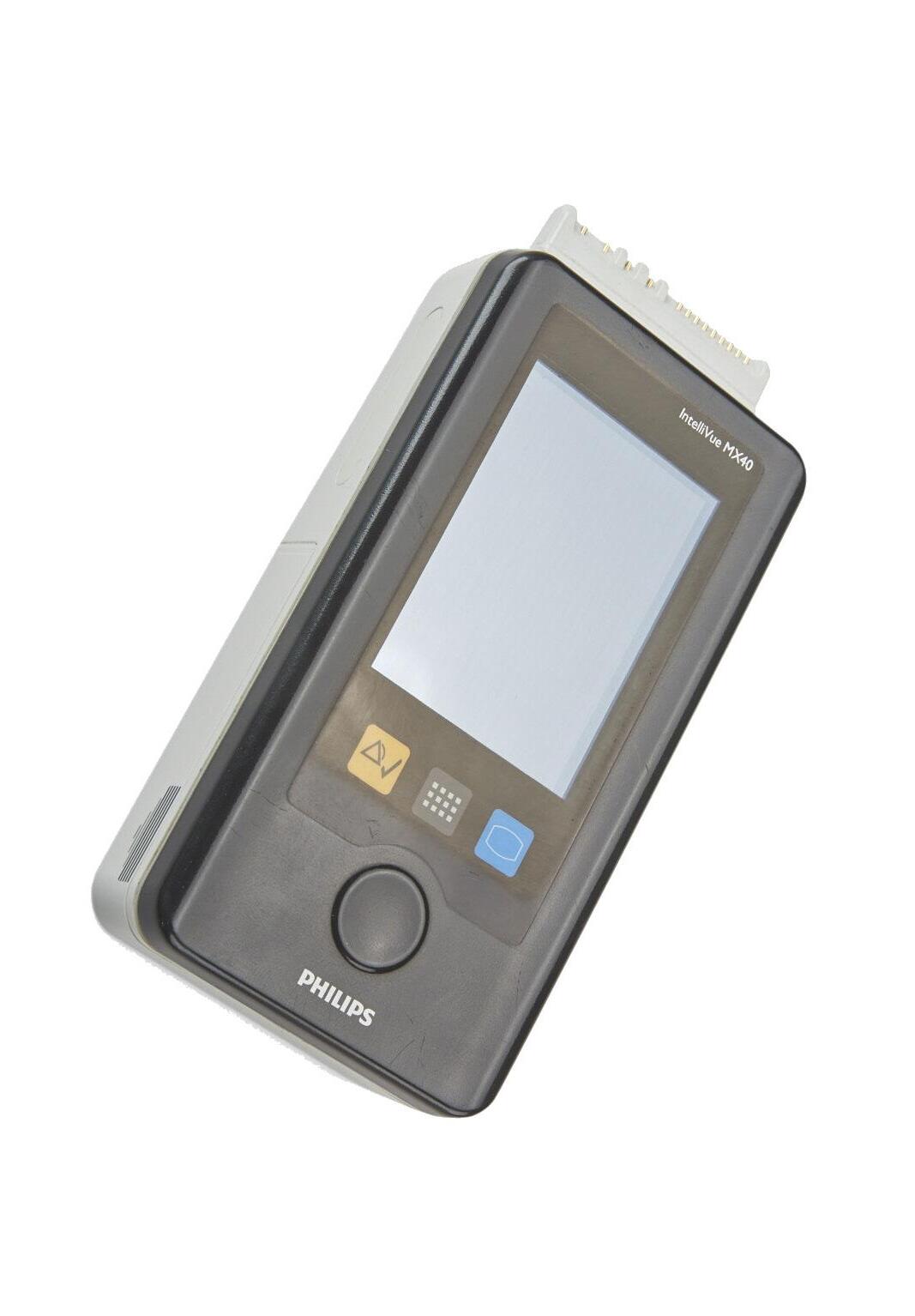


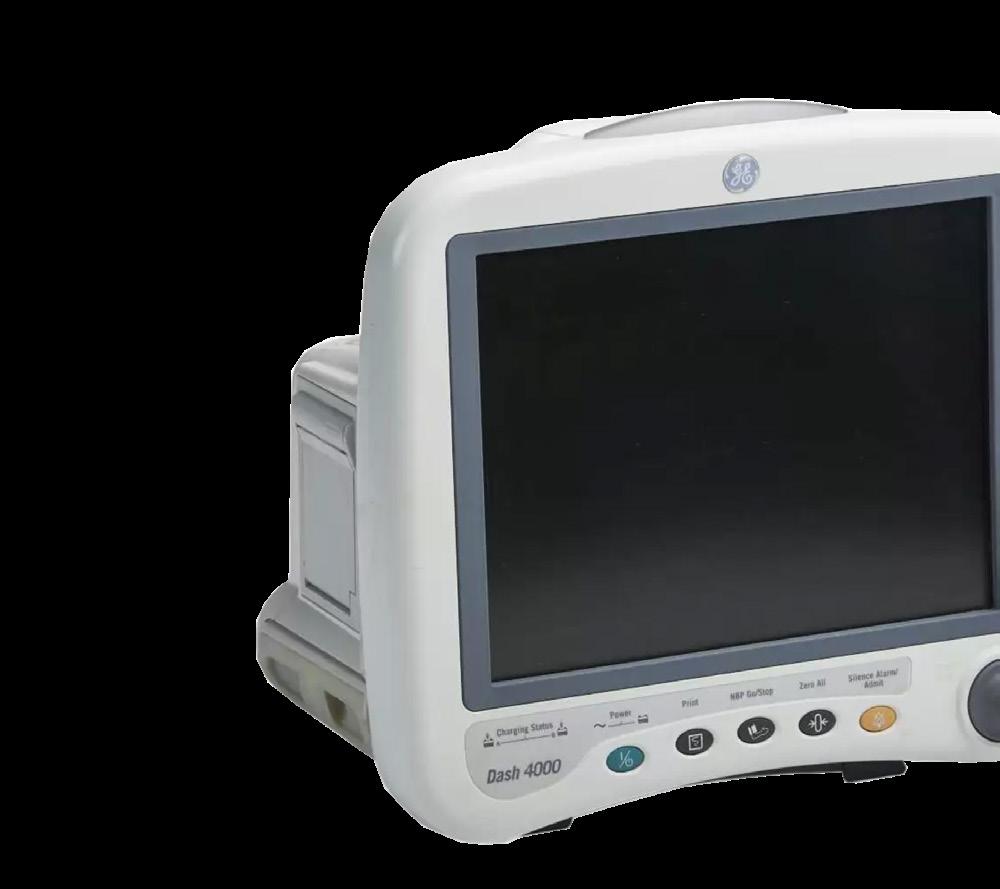
NEW YEAR’S SALE CONTACT US TODAY FOR ALL YOUR DEVICE NEEDS! CALL: 1.855.888.8762 VISIT: USOCMEDICAL.COM SIMPLE SOLUTIONS FOR COMPLEX DEVICES REPAIRS & RENTALS ON-SITE BLENDER OVERHAULS TRAINING CLASSES 2 LOCATIONS TO SERVICE YOUR REPAIR NEEDS
Chad Senior Technician
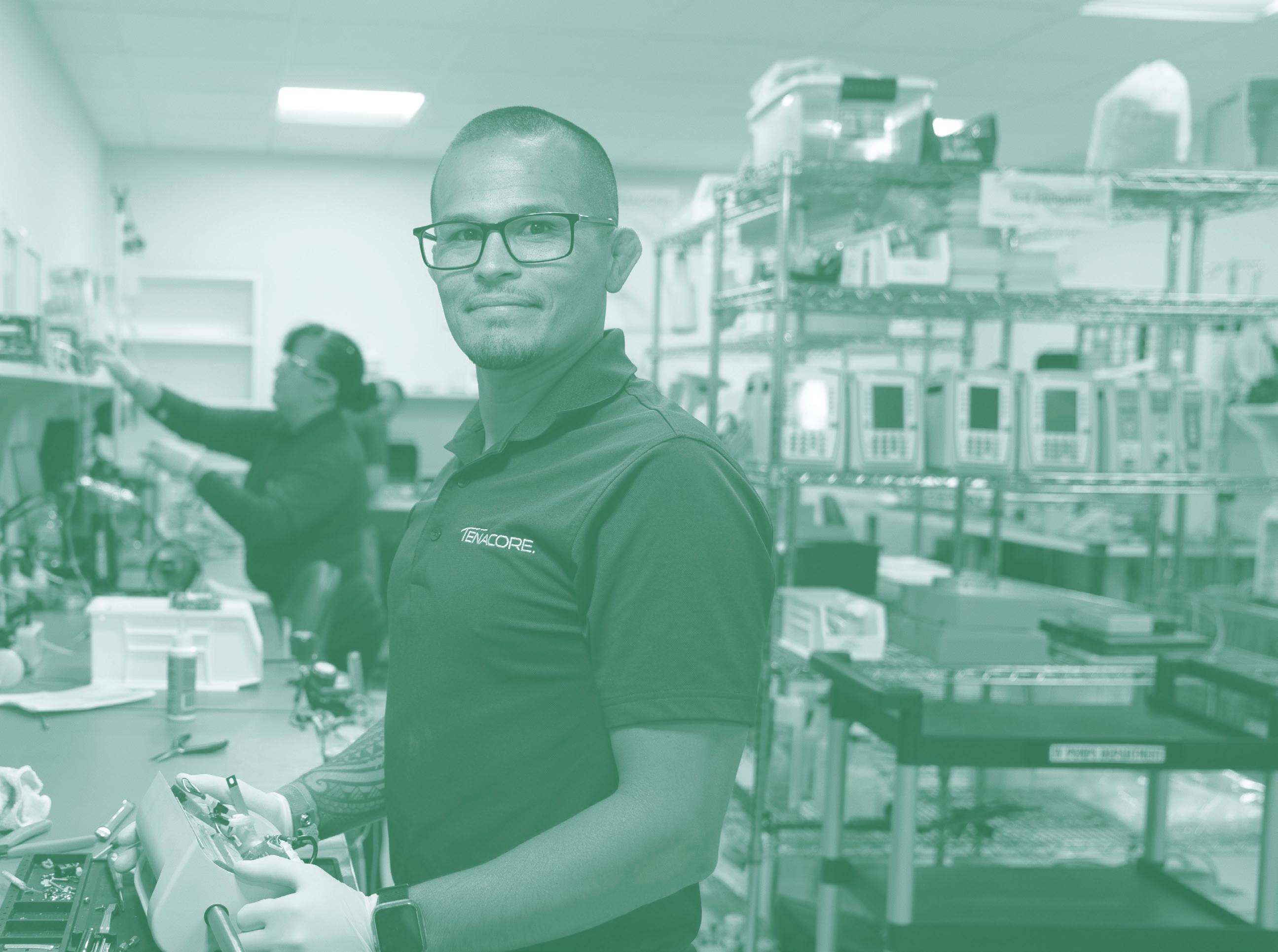

LEASE OR BUY!
Monitors | Modules | Telemetry
Infusion Pumps | Defibrillators | ESU


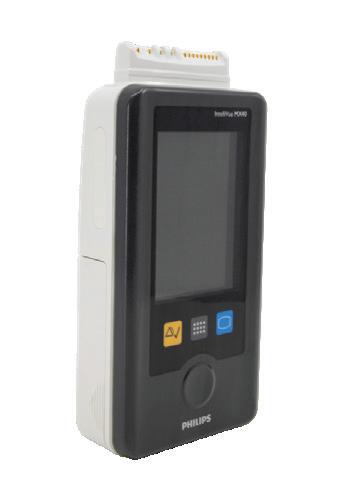
You need to know it’s right. Who’s in your corner?
Our technicians know what’s at stake and are trained on a wide variety of OEM equipment. Our rigorous standards and inspections ensure that pre-owned equipment meets final approval before being labeled “T.Certified” and heading out the door. We understand the needs of healthcare professionals and work to provide the most efficient, detail-oriented solutions.
We’re in YOUR corner. Call today to schedule repairs, purchase parts or lease equipment.
800.297.2241 | Tenacore.com


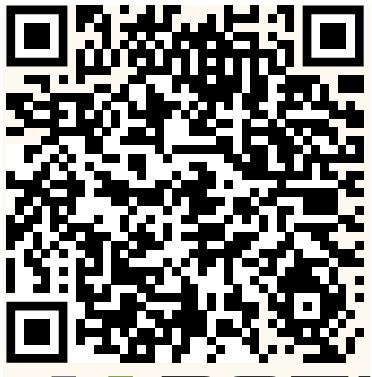



CHECK OUT COURSE CALENDAR! rsti-training.com | registration@rsti-training.com Register online at rsti-training.com/register or call 440-349-4700 Improving the quality of diagnostic imaging service through knowledge, education and Fully Engaged Hands-on Learning™. ISO 9001:2015 Certified (IQC Certificate No. Q-1158); State of Ohio Reg. No. 93-09-1377T

Centers of Excellence for Ultrasound Probe and MRI Coil Repair, and Design & Manufacturing Innovatus Imaging vs. XYZ Probe Repair Which is best for you, your patients, and your budget? Take the Probe Repair Challenge and find out! 844-687-5100 customercare@innovatusimaging.com Scan here to see how our clients are optimizing their uptime and budget with Innovatus Imaging. Visit us at booth 43 at the HTM Mixer in Indianapolis on May 2nd and 3rd
CONTENTS
P.12 SPOTLIGHT
p.12 Professional of the Month: Gerceia Lee, CBET
p.14 Department of the Month: Cape Fear Valley Health System Clinical Technology Services Department
p.16 Next Gen: Andres Torres Pina
p.18 Shifting Gears: Miles for Myles
P.20 INDUSTRY UPDATES
p.20 News & Notes
p.28 AAMI Update
p.31 Ribbon Cutting: Interlight
p.32 ECRI
p.35 Welcome to TechNation
P.36 THE BENCH
p.36 Biomed 101
p.37 Tools of the Trade
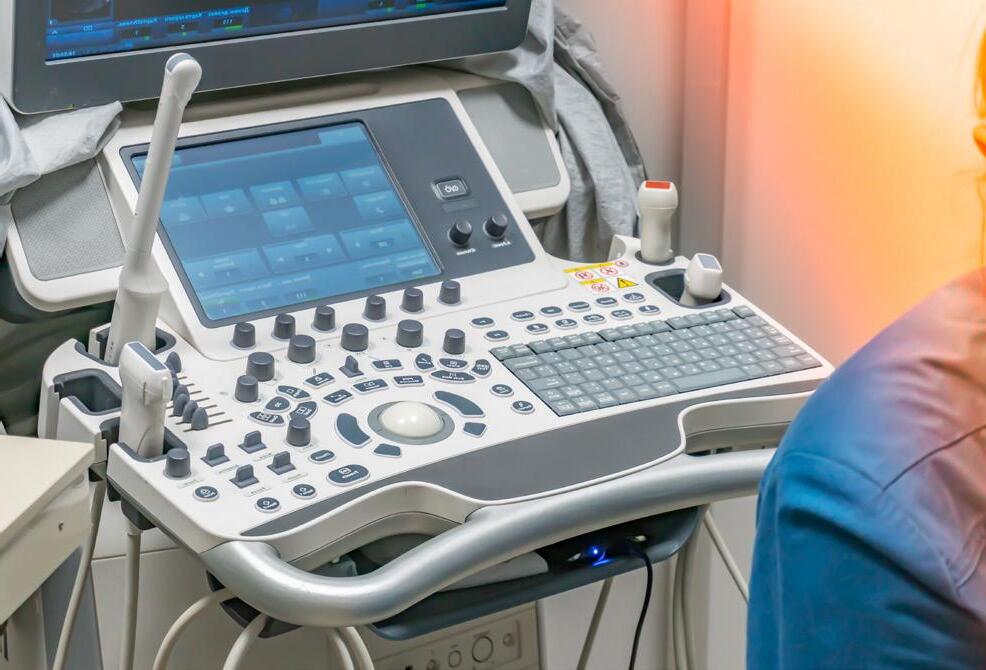
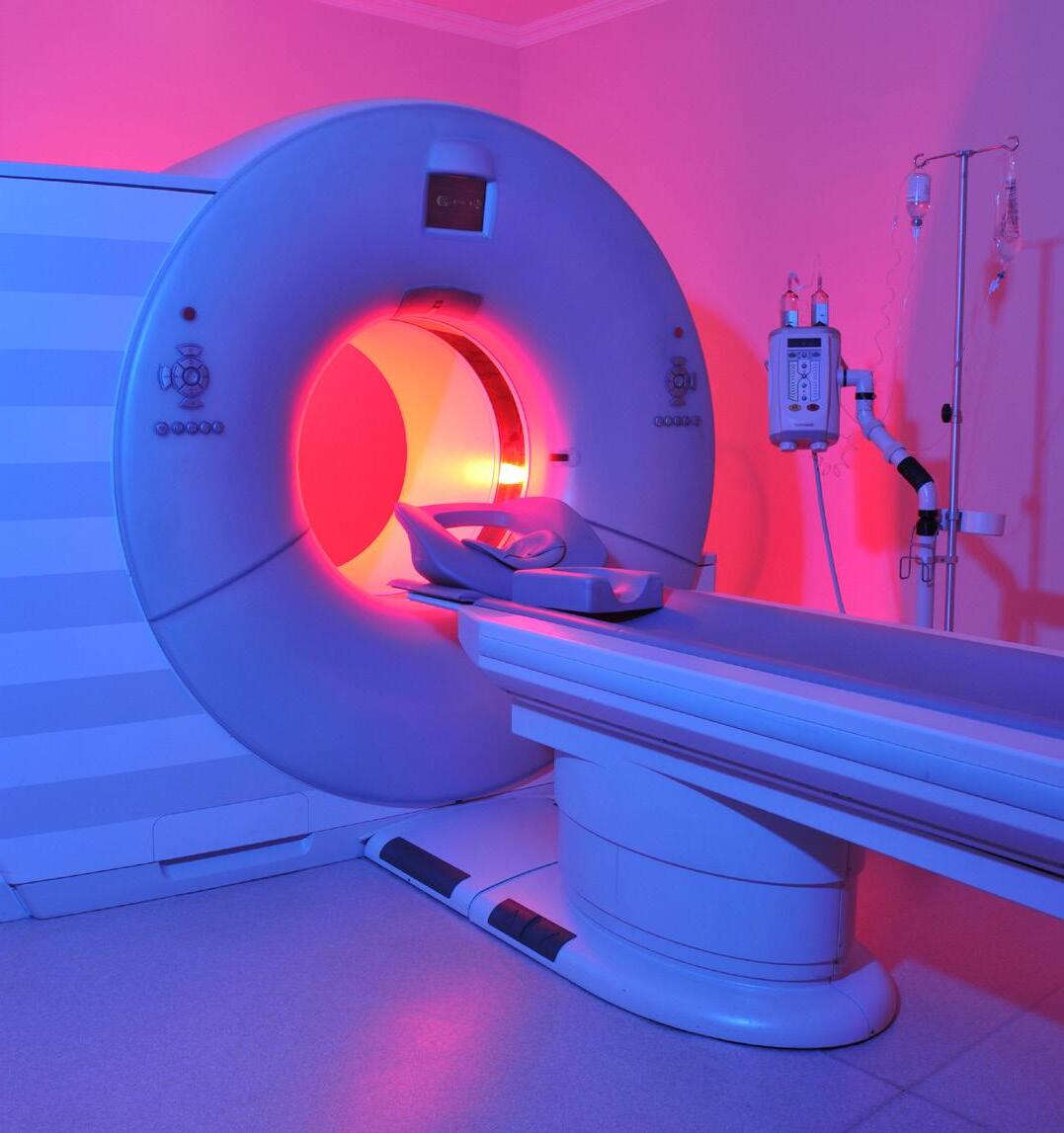
p.38 Webinar Wednesday 50 42
FEATURE ARTICLES
p.42 Roundtable: Ultrasound
p.50 Cover Story: Focus On The Future: Imaging Service Career Path
p.56 Guide to AAMI
P.67 EXPERT ADVICE
p.67 Career Center
p.68 SPONSORED: Innovatus Imaging
p.70 Networking Notes
p.72 SPONSORED: Emeritus
p.74 Cybersecurity
p.76 Health-ISAC
p.78 The Future
TechNation (Vol. 15, Issue #5) May 2024 is published monthly by MD Publishing, 1015 Tyrone Rd., Ste. 120, Tyrone, GA 30290. TechNation magazine is dedicated to providing medical equipment service professionals with comprehensive, reliable, information concerning medical equipment, parts, service and supplies. It is published monthly by MD Publishing, Inc. Subscriptions are available free of charge to qualified individuals within the United States. Publisher reserves the right to determine qualification for a free subscriptions. Every precaution is taken to ensure accuracy of content; however, the information, opinions, and statements expressed in the articles and advertisements herein are those of the writer and/or advertiser, and not necessarily those of the publisher. ©2024
May 2024 | TechNation 9
PUBLISHER John M. Krieg
VICE PRESIDENT Kristin Leavoy
VICE PRESIDENT Jayme McKelvey OF SALES
EDITORIAL John Wallace
CONTRIBUTORS Roger Bowles
K. Richard Douglas
Jim Fedele
Joie Marhefka
Manny Roman
Steven J. Yelton
ACCOUNT Megan Cabot
EXECUTIVES Emily Hise
ART DEPARTMENT Karlee Gower
Taylor Hayes
Kameryn King
DIGITAL SERVICES Cindy Galindo
Kennedy Krieg
Haley Wells
EVENTS Kristin Leavoy
WEBINARS Linda Hasluem
HTMJOBS.COM Kristen Register Sydney Krieg
ACCOUNTING Diane Costea
CIRCULATION Joanna Manjarrez
EDITORIAL BOARD
Rob Bundick, Director HTM & Biomedical Engineering, ProHealth Care
Carol Davis-Smith, CCE, FACCE, AAMIF, Owner/ President of Carol Davis-Smith & Associates, LLC
Jim Fedele, CBET, Senior Director of Clinical Engineering, UPMC
Bryant Hawkins Sr., Site Manager, Children’s Hospital of New Orleans
Benjamin Scoggin, MBA, MMCi, Director, Clinical Engineering | Biomedical Operations, Equipment Distribution, Clinical IT, DHTS, Duke Health Technology Solutions
Allison Woollford, Biomedical Equipment Specialist at Duke University Health System
DIGITAL ADVISORY BOARD
Bryant Hawkins Sr., HTM on the Line, Trimedx Site Manager at Children’s of New Orleans
Dr. Brian Bell, HTM Workshop, Faculty Biomedical Engineering at St. Petersburg College in St. Petersburg, Florida
Carlos Villafane, BMET Latino, Certified Biomedical Engineering Technician III, Baycare Health Systems
Chace Torres, Bearded Biomed, Lead Technician SPBS, Dallas-Fort Worth Metroplex



MD Publishing / TechNation Magazine 1015 Tyrone Rd., Ste. 120, Tyrone, GA 30290 800.906.3373 • Fax: 770.632.9090 Email: info@mdpublishing.com www.mdpublishing.com Proud supporters of P.80 BREAKROOM p.64 TN Poll p.65 Bulletin Board Sponsored by MedWrench p.80 Biomed Brainbuster p.86 #ShowUsYourShop p.81 Service Index p.85 Alphabetical Index 86 Like us on Facebook, facebook.com/TechNationMag Follow us on LinkedIn, linkedin.com/company/iamtechnation Subscribe to TechNation TV, youtube.com/@TechNation_TV
To learn at 10 TechNation | May 2024
New Terms every 6-Weeks
New Terms every 6-Weeks
CBET’s
CBET’s
education and training programs are designed with quality and flexibility in mind, tailored specifically to the needs of working adults.
We
To











210.233.1102 | www.cbet.edu | admissions@cbet.edu Take the next step in your HTM Education and Career Journey
online
offer 1 100% online
that include immersive VR
for BMET technician education
training.
programs
lab experiences
and
learn more, contact an Admissions Representative at 210.233.1102 or visit www.cbet.edu/apply-now. Degree 210.233.1102 | www.cbet.edu | admissions@cbet.edu Take the next step in your HTM Education and Career Journey
online
education and training programs are designed with quality and flexibility in mind, tailored specifically to the needs of working adults.
100%
include immersive VR lab
for BMET technician
We offer
online programs that
experiences
education and training.
more, contact an Admissions Representative at 210.233.1102 or visit www.cbet.edu/apply-now. BMET & HISM Skillbridge Approved VR Labs Technical Training Certificate & AAS Degree Programs
learn
PROFESSIONAL OF THE MONTH Gerceia Lee, CBET Making a Tremendous Impact
BY K. RICHARD DOUGLAS
G
erceia Lee, CBET, is a Tech III at Children’s of Alabama in Birmingham.
“My decades of experience as an HTM/ biomed have provided me the opportunity to grow professionally, personally and, more importantly; spiritually,” says Lee.
Lee works in the biomedical engineering department at Children’s of Alabama. His statement embodies everything that an HTM professional could hope to take away from the profession.
Lee’s introduction to HTM happened while in college.
“While attending Central Alabama Community College in Alexander City, Alabama, my oldest brother gave me a catalog of the programs offered at University of Alabama at Birmingham (UAB) School of Health Professions. I discovered the biomedical equipment technician program in the catalog. It was intriguing, being that a couple of my brothers and myself always tinkered with electronics amongst other items,” he says.
After entering the program, he says that he received training on electronics and certain biomedical instruments during labs and students were responsible for building certain electrical circuits.
“Also, we had clinical rotations during surgical cases at UAB Hospital where we observed the operations of various medical apparatus, assisted with repair and maintenance at UAB Callahan Eye Clinic and the Lakeshore Rehab Foundation,” Lee remembers.
His biomed career started off with an internship at Carraway Methodist Medical Center in Birmingham, Alabama in 1991. After that, he moved to East Alabama Medical Center in Opelika, Alabama, until mid-1995. He worked as a Clinical Engineering Technician I.
For the next two years, Lee worked as a Rad-Tech X-ray field service technician and also did some diagnostic imaging service before moving to his present employer in August of 1997.
THE BEST POSSIBLE SERVICE AND REPAIR
Lee made good use of his HTM thinking cap to return a specialized device to service. He was also up to the challenge when his department took on special projects.
“The biggest challenge that I have encountered is getting parts and/or service needed for equipment that could have a negative impact on patient service/care. Several months after the COVID-19 pandemic began, the Gait Biometric System in our PT/OT department began to malfunction and eventually became dysfunctional. The main function of the Gait system is to capture the step patterns of the patient walking across a platform composed of heavy aluminum plates using video images from the camera system,” Lee says.
He explains that the collected data from the platform system is converted into a mathematical equation which is used to treat the patient’s rehabilitation process.
“There are several factors that influence the collected data such as the type of injury the patient is recovering from, footwear, or fatigue of the patient to name a few. Most importantly, the primary determinant of a patient’s gait is their skeleton. The vendor of the
SPOTLIGHT
12 TechNation | May 2024
system is based in Switzerland, and the service rep was not able to render service at the time because they were not allowed to travel out of the country,” Lee says.
He says that in order to get the system back up and running in a timely fashion, without canceling additional appointments/ services, the rep expedited the aluminum plates — four that weighed about 100 pounds each — directly to the department. Instructions on how to replace the aluminum plates were emailed ahead of the delivery.
“After receiving the parts, and some lifting help, the system was repaired in five to six hours – so we thought. After the system was powered on, it was discovered that a fuse was blown on the computer system that we did not have on hand. Thank God for our local Forbes Distributing Company in Homewood. They had the fuse on hand that was needed. I traveled to Forbes and purchased the fuse; the rest is history,” Lee says.
He says that the biggest special project he remembers participating in was preparing for the opening of the Benjamin Russel campus in 2012 and a GE Carescape monitor project.
“In 2012, our department worked many long days and weekends to inventory all of the new equipment and enter the items into the database along with handling scheduled maintenance and service calls. Also, our department worked in teams to assist the different intensive care units when patients were being transported to the new facility just in case there was equipment malfunction,” he recalls.
He says that during the GE Carescape monitor project, the department worked in teams to inventory all the new devices, build new alarm boxes, enter devices into the equipment database, deinstall the old equipment and install the new equipment.
“There were challenges that presented themselves during the process and our HTM/biomed, with the assistance of HTM/ biomed interns, made the necessary adjustments to achieve the goals that were set by the Children’s of Alabama Healthcare System as a whole and one of the core values of the system came together; ‘Teamwork,’” Lee says.
He says that an award he received last year could not be topped.
“Receiving the September 2023 Impact Award, here at Children’s of Alabama, I feel is the greatest,” Lee says.
Off the clock, Lee enjoys grilling, fishing and yard projects around his yard.
“Also, I love antique cars, classic muscle cars and attending drag racing events when time permits,” he says.
Lee says he has a big family.
“Married to my wonderful wife, Sandra, and I have one daughter, Endya, who is truly daddy’s girl. I still have my parents (role models and heroes), siblings (two sisters and four brothers), nieces, nephews, and great nieces and nephews,” he says.
After a 33-year career in HTM, Lee says that while working with HTM professionals his focus has always been to “ensure the best possible equipment service and equipment repair in order for the patient to receive safe and quality medical care.” Nothing more needs to be said.

BIOMETRICS
FAVORITE BOOK: Bible
FAVORITE MOVIE: “300”
FAVORITE FOOD: Fish and ribs
HIDDEN TALENT:
Ability to work with different personalities and make people smile.
FAVORITE PART OF BEING A BIOMED?
Knowing that my work is a vital component that will assist with making a positive difference in a child’s life.
WHAT’S ON MY BENCH?
1. Electrical Safety Analyzer 2. Optivisor 3. SimCube 4. Tool bag 5. Snacks .
May 2024 | TechNation 13
DEPARTMENT OF THE MONTH
Cape Fear Valley Health System Clinical Technology Services Department
BY K. RICHARD DOUGLAS
Wilmington, North Carolina, sits in a region which has had the nickname “Cape Fear” since 1585, when an English explorer’s ship was trapped in a bay there. Fayetteville, North Carolina, which sits north and west of Wilmington, has businesses, a museum and a high school, which have adopted the name.
One of them is the Cape Fear Valley Medical Center. The center opened its doors in 1956, and today is part of North Carolina’s 8th largest health system.
The system’s clinical technology services (CTS) department consists of 28 members and manages a large inventory of medical devices across seven facilities with a total of 1,028 inpatient beds.
Those facilities include Cape Fear Valley Medical Center, Cape Fear Behavioral, Highsmith-Rainey Hospital, Hoke Hospital, Bladen County Hospital, Betsy Johnson Hospital and Central Harnett. The system also includes 81 clinics, plus 23 more in the near future, the Center for Medical Education with a state-of-the-art simulation lab and the School of Medicine Building, in partnership with Methodist University.
The CTS team includes Director Nathan Brauer, Manager Ryan Whitted and a biomedical equipment team with two lead technicians and 11 BMETS. There is also a project team with two project managers and an ECD team, which includes one team lead and three ECD techs.
The imaging team leader is Johnny Simpson and the imaging team includes one imaging specialist, two imaging technicians and two imaging/BMET hybrids. The CTS team’s equipment coordinator is Joel Adams and its CMMS analyst
is Glenn Chandler.
CTS plays a big role in service contract management.
“The CTS leadership team works in coordination with purchasing, the device manufacturer, legal, nursing administration, and hospital leadership to establish new contracts, modify existing contracts or terminate contracts as needed,” says Jody Booth, BMET I.
CTS is on top of its game with data collection and equipment management.
“Data collection is accomplished through multiple modalities. The safety improvement report process is utilized across the health system to capture potential risk, near misses and sentinel events for staff and patients. Any reports involving medical equipment are assigned to the CTS department for investigation and follow-up. The health system utilizes a centrally managed computerized maintenance management system to track planned maintenance activities, repairs, recalls and special projects. The CTS department also utilizes One Recall by Inmar Intelligence for recall notification and reporting,” Booth says.
The team includes members with a specialized focus, including three technicians assigned to anesthesia, one MRI specialist, one cath/interventional radiology specialist and one CT specialist.
NEW CONSTRUCTION PROJECTS AND TROUBLESHOOTING
New construction planning and equipment management have been among the special projects that the team has undertaken. The system opened the doors of the Dorothea Dix Adolescent Care Unit in 2022 and the team was an important part of that project and others.
“The CTS department played an integral role in standing up the Dorothea Dix Adolescent Care Behavioral Health Center. Only adolescent inpatient psychiatry unit, not only in Cumberland County, but also the surrounding communities
SPOTLIGHT
14 TechNation | May 2024


She says that in addition to that, the medical center started a child and adolescent residency clinic, which is an outpatient program, for children awaiting regular outpatient treatment.
“The CTS department played an integral role in standing up the new hospice house for terminal and life-limiting illness. Less than five miles away from the main campus, the Valley Hospice House is a newly renovated 6,000-squarefoot inpatient space with eight private ‘home-like’ patient rooms,” Booth says.
She says that Cape Fear Valley Health anticipates the facility will care for over 350 patients annually.
Another big project the CTS team supports is the Harnett Health Cancer Center.
“The CTS department will play an integral role in completing the new 17,000-square-foot cancer center within the medical arts complex on the campus of Central Harnett Health. Proposed features CTS will assist with [include] their new linear accelerator, CT scanner and infusion bays with new IV pumps,” Booth says.
On the problem-solving front, the team has brainstormed to find solutions to help clinical counterparts and patients.
One of those challenges involved sending 12-lead ECG strips to the EMR.
“To meet the requirements for our cardiology accredita-


tion, there was a need to look at the process for obtaining and interpreting 12-lead ECGs for our cardiac patients coming through the emergency department,” Booth says.
She says that the CTS department worked closely with nursing leadership, the IT department and patient monitoring vendors to come up with a solution.
“We were asked if our Nihon Kohden monitoring system would be able to send 12-lead ECG strips to our Philips ECG interpretation server. After doing some research, and coordinating with both Nihon Kohden and Philips, we were able to find a company that offered a software that we could install on the Nihon Kohden server that would capture the 12-lead ECG strip, convert it to the appropriate format, and then send it to the Philips ECG interpretation software for the cardiologist and emergency physicians to review,” Booth says.
She says that this has greatly reduced the amount of time needed to obtain 12-lead ECGs and provide appropriate care for the patients.
Outside the workplace, team members also participate in the state’s biomed community through their affiliation with the North Carolina Biomedical Association (NCBA) and AAMI.
Unlike those English sailors in the 1500s, this Cape Fear is a place of healing and the system’s CTS team members are there to make certain that happens.
Members of the Cape Fear Valley Health System Clinical Technology Services Department participate in hands-on training.
Biomeds are seen during the 2023 HTM Week Dress to Impress Day.
May 2024 | TechNation 15
Walter Perry and Mark Iaconis replace a heat engine in a NICU Panda warmer.
NEXT GEN
POWERED BY YP AT MD
Andres Torres Pina
Texas native Andres Torres Pina holds an associate degree in biomedical equipment technology and currently works as an endoscope technician 1 with Baylor Scott and White.
TechNation recently found out more about the member of the Next Gen of HTM and how he first discovered the amazing world of biomedical engineering.
Q: WHERE DID YOU GROW UP?
A: I was born and raised in Waco, Texas.
Q: WHERE DID YOU RECEIVE YOUR HTM TRAINING/ EDUCATION?
A: I received my HTM education from Texas State Technical College (TSTC).
Q: HOW DID YOU FIRST DISCOVER HTM?
A: I first discovered HTM in high school in my engineering class. My teacher at the time brought in a biomed that showed us what she did for a living. She even let us put our hands on an old infusion pump.
Q: HOW DID YOU CHOOSE TO GET INTO THIS FIELD?
A: I choose to get into this field because I wanted to help people but also to do something I enjoy, which is fixing all sorts of electronics and gadgets.
Q: WHAT DO YOU LIKE MOST ABOUT YOUR POSITION?
A: The thing I like most about my position is my coworkers. Without them I would not be able to sharpen my skills on repairing endoscopes.


Q: WHAT INTERESTS YOU THE MOST ABOUT HTM?
A: The thing that interests me the most is being able to help people by fixing the equipment hospitals need available to take care of their patients.
Q: WHAT HAS BEEN YOUR GREATEST ACCOMPLISHMENT IN YOUR FIELD THUS FAR?
A: My greatest accomplishment so far is being accepted into the scope tech position.
Q: WHAT GOALS DO YOU HAVE FOR YOURSELF IN THE NEXT 5 YEARS?
A: A career goal would be to move up to scope tech 2 or higher.
FUN FACTS
FAVORITE HOBBY: Playing the bass guitar
FAVORITE SHOW OR MOVIE: Any Marvel movie
FAVORITE MEAL: Tacos!
WHAT WOULD YOUR SUPERPOWER BE?
Super intelligence or being a fast learner.
1 THING ON YOUR BUCKET LIST: Indoor skydiving.
SOMETHING YOUR CO-WORKERS DON’T KNOW ABOUT YOU:
Something my coworkers probably don’t know about me is I played in a mariachi band in high school.
SPOTLIGHT
16 TechNation | May 2024
PROBO MEDICAL
PROBO MEDICAL
Your Ultrasound Partner
Your Ultrasound Partner
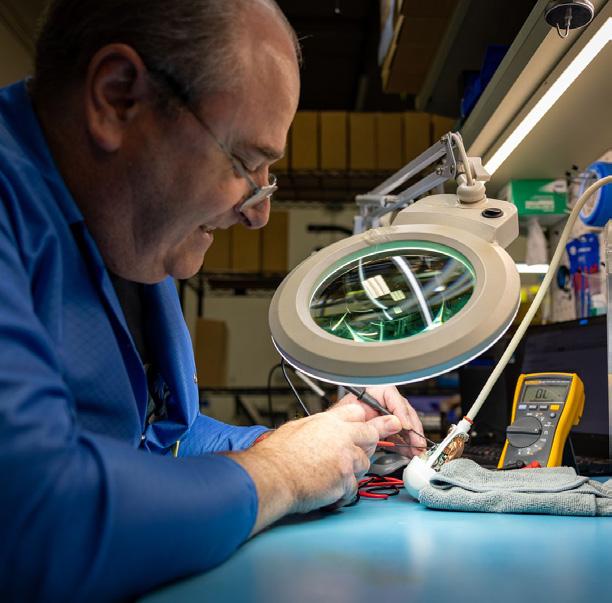

FREE TECH SUPPORT
FREE TECH SUPPORT
QUALITY, TESTED PARTS
QUALITY, TESTED PARTS
ULTRASOUND SERVICE TRAINING
ULTRASOUND SERVICE TRAINING
PROBE REPAIR WITH FREE LOANERS
PROBE REPAIR WITH FREE LOANERS
NEXT DAY RENTALS
NEXT DAY RENTALS
SERVICE ACROSS THE US
SERVICE ACROSS THE US
Mention this ad for 10% OFF your next part or repair.
Mention this ad for 10% OFF your next part or repair.


HAVING PROBLEMS WITH YOUR ULTRASOUND PROBE?
HAVING PROBLEMS WITH YOUR ULTRASOUND PROBE?
Scan the QR code and get an instant quote by using our free ultrasound probe evaluation tool.
Scan the QR code and get an instant quote by using our free ultrasound probe evaluation tool.
WWW.PROBOMEDICAL.COM
WWW.PROBOMEDICAL.COM
SHIFTING GEARS Miles for Myles
BY K. RICHARD DOUGLAS
America has a crisis that is not often spoken of. Mental health conditions, among adolescents, are on the rise; both in the U.S. and in other countries. Anxiety, depression, suicidality, feeling insufficient and loneliness are all offshoots of a culture that has isolated and addicted many to their ever-present smartphones.
These mental health issues aren’t just increasing; they are skyrocketing. In 2021, 42 percent of adolescents reported feelings of sadness and hopelessness – which can be indicative of depressive disorder – up from 28 percent in 2011, according to a CDC report.
Today, kids and teens are fixated on likes, shares, bullying and disparagement, social media popularity; life that is defined through a screen, and more social isolation compared to previous generations.
In an interview, the popular TV personality Dr. Phil said that when smartphones came on the scene in 2008, “kids stopped living their lives and started watching people live their lives.”
Parents protect their kids, from infants on to adulthood. They give them advice, take them to the doctor for wellness check-ups and to address acute illnesses. Parents try their best to keep their children out of harm’s way. With mental illness, the best intentions of parents are often hindered. There can be hidden wounds, hidden feelings; hidden pain.
A biomed senior manager and his family, in Western Michigan, experienced the profound sadness in 2021 that is caused by this unseen turmoil, when his 18-year-old son lost his battle with mental illness. It is an experience that no parent should have to endure.
In response, Jeffrey Ruiz, CHTM, has taken steps to convey a clarion call for awareness. He describes his son Myles as “the best son any father could ever have hoped for.”
“Myles passed on right in the middle of the pandemic. He loved his classmates; he loved marching band and orchestra; he thrived on social interactions. With so many restrictions stemming from the pandemic, it crushed him. With his history of depression, we thought with the current treatment plan we could make it through this challenge. The pandemic and the social isolation didn’t help his cause,” Ruiz says.
He says that you can’t tell if someone is struggling with mental health. It’s not an obvious medical condition that can be seen by the naked eye. Mental health is extremely challenging.
“Nothing challenges you more as a parent, or as a leader, when a loved one, or friend or colleague is facing a mental health crisis. We thought we did everything right for Myles, but it still wasn’t enough. And maybe in hindsight, some of the things we did for him did allow him to keep on pushing forward a little bit longer. No one will really know,” Ruiz says.
A GATHERING OF RUNNERS IN MEMORY
At his son’s funeral, Ruiz could not allow the tragic loss of Myles to be in vain. He had the attention of other teens who might be experiencing their own mental health challenges, or who have friends who are going through this struggle.
“In preparing for Myles’ eulogy, I knew I would be talking to many of his classmates. I had no Idea what I was going to say, and I needed to say something that would give the students hope. I prayed days before the funeral for the words to share. These are the words that came to me with the grace of God, that I shared with them that night,” he says.
He told the teens; “You matter, you will impact more people than you will ever know. If you are struggling, reach out for help. There are many resources, friends, family that can provide help. If you see someone struggling; offer support. Just offering an ear to listen to can make all the difference in someone’s life.”
“Check on your strong friends. Myles was such a comforting soul for so many of his friends, yet we all never knew the deep struggles he was battling. Be kind to others. You really don’t know the struggles others are facing today, tomorrow. Your kindness can be the one act that can give someone hope,” Ruiz suggested.
In describing Myles, Ruiz says that he was kind, caring, and
SPOTLIGHT
18 TechNation | May 2024



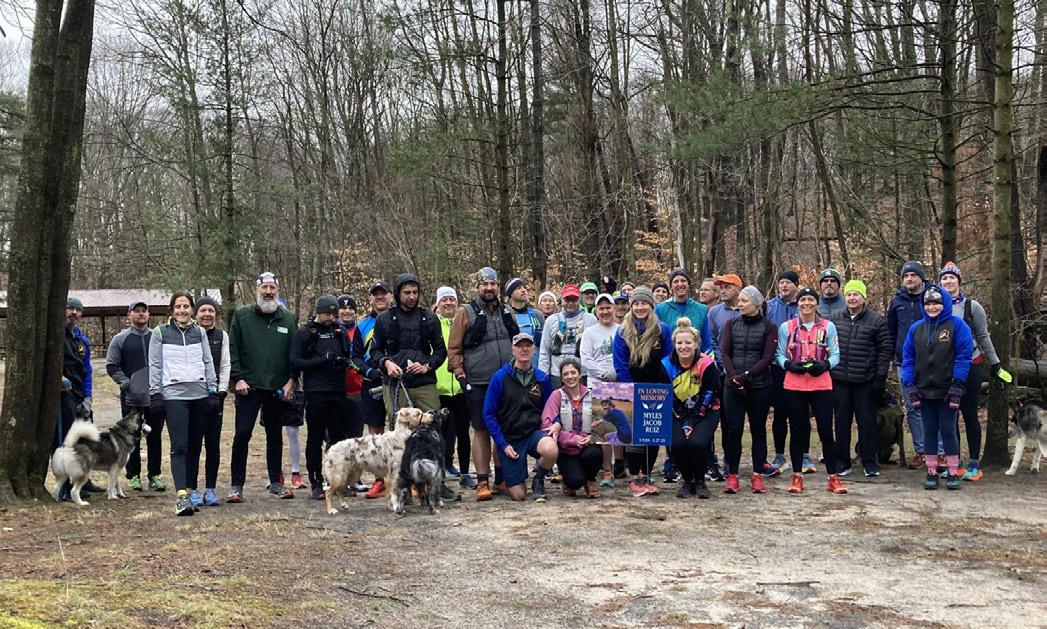
would provide a shoulder to lean on. He always did the right thing. He was brilliantly smart. Things came so easily to him. He was an excellent trumpet player and loved marching band.
“He also was a teaser and loved having fun, especially with his sisters, and his nieces and nephews. He was the glue to our family. Always having a caring and giving heart, making sure the family was happy,” Ruiz says.
He says that Myles also enjoyed biking.
“Every summer, we would go away for monster biking trips along the White Pine and Pere Marquette trails in Michigan’s northwestern lower peninsula. We would cover over 200 miles on these trips. He loved all the breakfast, lunch and dinner spots we would stop along the way. During the trip we would talk for hours, and other times we would be biking in unison enjoying the moment. These trips were more than spending time together, it allowed lessons to be shared from a father to son. And to show a son that anything is possible if you believe and work hard for it. And being thankful for the blessing of spending time together and living life to the fullest,” Ruiz remembers.
Ruiz says that his son loved these trips, and when was given Myles ashes, he knew where he would be placing them.
“I took them with me and spent four days biking on the trails. I made essentially a 300-mile sign of the cross and placed his ashes on each side. This bike trip really helped me face grief head-on and helped give me peace. I had taken a GoPro camera and filmed the trip and spots we biked together. In one particular place, I left the camera on as I left his ashes. As I
watched the video later, you could see the ashes leaving and following me back to the bike. It’s these experiences that, if you keep your eyes open, you can experience some miracles from above,” Ruiz says.
He says that a year later, he ran the Veteran’s Memorial 150-mile race.
“The race ran a good portion of where I biked before and allowed me to lay memory stones at the place I had left his ashes previously,” Ruiz adds.
In the meantime, Ruiz has raised awareness of this national crisis endemic in culture today. The run was just one way to honor Myles’ memory and to focus attention on an epidemic that may go unseen.
To remember Myles’ life and bring attention to the important issue of mental health in young people, Ruiz hosted a group run on March 9. It was just four days past what would have been his son’s 21st birthday.
He named the run “Miles for Myles” and planned to run 21 miles. Ruiz is a veteran runner and has been running since his twenties. He invited others to join him either in person or virtually. The run went between parks along the coastline of Lake Michigan.
Ruiz got the word out about the run on social media and many have shared it. He says that, “if they impact just one life, giving hope, to keep moving forward, to give tomorrow a chance, then Myles’ memory will live on.”
Jeffrey Ruiz, CHTM, is seen with his son.
A bench is dedicated to the memory of Myles J. Ruiz.
May 2024 | TechNation 19
Runners gather annually for a run in memory of Myles J. Ruiz.
INDUSTRY UPDATES
NEWS & NOTES
Updates from the HTM Industry
CBET, NVRT LABS OFFER EDUCATION WITH VIRTUAL REALITY INTEGRATION
The College of Biomedical Equipment Technology (CBET) has announced a collaboration with NVRT Labs, a leading virtual reality technology company, to usher in a new era of hands-on learning in the field of biomedical equipment technology training and education. This innovative partnership integrates virtual reality lab assignments into CBET’s interactive distance learning BMET certificate and associate degree programs, according to a press release.
“Upon enrolling in CBET’s programs, new students are equipped with a pre-configured VR headset that offers immersive virtual hands-on experiences. These cutting-edge lab modules cover essential BMET procedures, including electrical safety tests, preventative maintenance, and operational check-out procedures for a wide variety of biomedical devices, such as IV pumps, defibrillators, patient beds, ECGs and more,” the release states.
Dr. Richard “Monty” Gonzales, president of the CBET, welcomed the partnership, stating, “We are excited to pioneer educational innovation in the healthcare technology management career field. This collaboration with NVRT Labs signifies a major milestone for CBET as we adopt virtual reality to elevate the learning journey for our students. By integrating VR lab assignments, we aim to offer students realistic virtual hands-on training, equipping them with the skills to be successful in a rapidly evolving industry.”
Matthew Bassuk, CEO of NVRT Labs, echoed Gonzales’ sentiments, emphasizing the importance of this partnership in addressing skills gaps in the industry.
“This collaboration is a pioneering effort to bridge the divide between education and industry needs. By incorporating virtual reality into CBET’s curriculum, we aim to equip students with practical skills that directly translate to the demands of the workforce. NVRT Labs is proud to be part of this initiative, contributing to the development of a highly skilled and capable workforce in the HTM sector,” Bassuk said.
This partnership sets a new precedent in the realm of biomedical equipment technology education, establishing a cutting-edge standard for immersive and comprehensive training, the release states.
“The VR training content represents a milestone achievement for BMET training with modalities modelled on nuanced technical interactions with medical device equipment and operating procedures, facilitating training on equipment that might otherwise be too expensive, dangerous, inaccessible or otherwise unavailable. The adoption of VR content also provides standardized,
cost-effective tools and platforms that allow the college and industry partners to train students and employees regardless of population densities and individual employee locations. CBET and NVRT Labs are committed to continually enhancing the educational experience, raising the bar for emerging professionals entering the HTM workforce as well as seasoned professionals seeking advanced technical training,” according to the release.
“By integrating virtual reality into our curriculum, we are ensuring that our students receive technically relevant, hands-on training, positioning them for success in the ever-evolving HTM industry, consistent with our mission to deliver premier education in the field to equip students to meet the evolving needs of the industries we serve,” Gonzales said.
“We believe that technology has the power to transform education and workforce readiness,” Bassuk added. “Partnering with CBET to introduce virtual reality lab assignments in this field is a testament to our commitment to filling industry skills gaps. This collaboration paves the way for a new generation of professionals equipped with the practical skills needed to excel in the HTM workforce.”

20 TechNation | May 2024
ECRI LISTS TOP 10 PATIENT SAFETY THREATS
Challenges transitioning new clinicians from academic training to professional practice tops ECRI’s 2024 list of 10 patient safety concerns. ECRI researchers compiled the report by drawing on evidence-based research, data and expert insights.
Transitioning new clinicians from education to practice tops the 2024 list. Difficulties accessing maternal and perinatal care also made the list, along with the decline of health care workers’ wellbeing, and unintended outcomes of adopting new technologies. The Top 10 Patient Safety Concerns report serves as a guide for helping providers and systems reduce risks and improve outcomes for their patients and workforce.
The top 10 patient safety concerns for 2024 are:
• Transitioning new clinicians from education to practice
• Workarounds with barcode medication administration systems
• Access to maternal and perinatal care
• Unintended consequences of technology adoption
• Physical and emotional well-being of health care workers
• Complexity of preventing diagnostic error
• Equitable care for people with physical and intellectual disabilities
• Drug, supply, and equipment shortages
• Misuse of parenteral syringes to administer oral liquid medications
• Preventing patient falls
“Through no fault of their own, clinicians who started practicing medicine in the last several years didn’t have the same early experience as those who came before them – before the pandemic laid bare critical weaknesses in our health care system,” said Marcus Schabacker, MD, Ph.D., president and CEO of ECRI. “ECRI’s top patient safety concern is a call to action to set new clinicians up for success through a total systems safety approach and assess and redesign the environments in which clinicians are trained, onboarded, mentored and supported.”
ECRI’s Top 10 Patient Safety Concerns for 2024 report includes recommendations for health care organizations to create organizational resilience to navigate the identified threats and strive for total systems safety.
New X-ray QA SOFTWARE
• More Values Displayed vc_TechNation_Clr Ad_7x4.5_24Mar27.pdf 1 3/5/24 12:07 PM

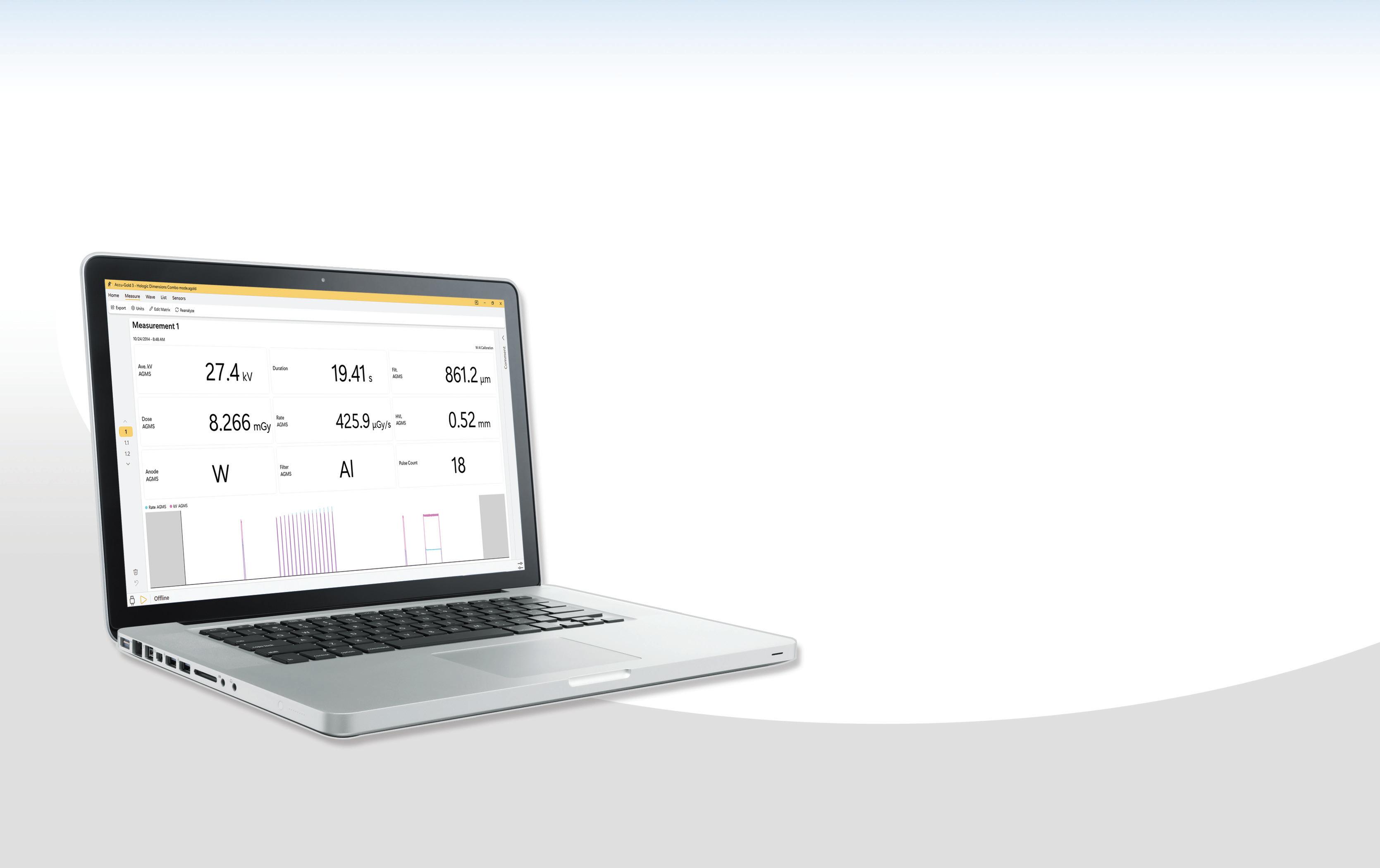
• Optimize Work Time
– Machine Specific Profiles
– Favorites Folder

– Advanced Mamography: Single Exposure Combo-mode
– Advanced CBCT Dental: Simultaneous DAP, kV and Dose
For further details: Contact us at +1 (626) 357-7921 • sales@radcal.com or www.radcal.com
Accu-Gold 3
May 2024 | TechNation 21

100+ HFM, HTM PROFESSIONALS ATTEND FSI USER CONFERENCE
FSI, a leading health care CMMS/EAM provider, hosted its largest-ever User Conference in Charleston, South Carolina on March 14-15. Every other year, FSI’s offers a free user conference for customers that rely on FSI’s CMMS/EAM Suite of Products (CMS) for maintenance management and HTM operations.
“We can confidently say this was our most successful User Conference yet,” shared Zachary Seely, CEO of FSI. “This year’s agenda offered something valuable for every health care system professional – both for facilities and HTM departments. Our customers really value the opportunity to come together in person and forge connections with their peers from all over the country.”
FSI is proud to offer the User Conference free of charge for all current customers, with support from this year’s sponsors: Cynerio, PartsSource, HCF Compliance, Enstoa, TechNation, Bellroy, and CFS Facilities Management. The User Conference agenda featured a variety of educational sessions, beginning with a keynote address by Lindsey Brackett, Chief Empower Officer of Legacy FM on the topic of retaining and mentoring talent.
Additional sessions were delivered by FSI staff, industry experts, and FSI customers. Sessions included:
• Building a Successful Mobile Device Program
• Capital Planning & The Uniformat Model
• Emergency Management
• Utilizing Data for Productivity and Staffing
“The User Conference is a unique opportunity for us to hear from our customers directly, ensure they are set up for long-term success, and provide them resources moving forward,” FSI Director of Customer Success Claire Salinas said. “We heard from
many attendees that this year’s agenda delivered valuable insights that appealed to the widest range of our user base.”
The conference also featured pre-conference sessions held before the official start of the conference. These additional sessions include an all-day bootcamp for an in-depth look at tips and tricks for new users and those looking for a refresh, a life safety workshop, and a data and analytics training.
“Last year was my first FSI Conference, and I am already looking forward to the next,” expressed RaeAnne Nuzzolese, a data systems facilitator at Lincoln Harris. “Meeting the FSI staff was terrific; all members were very knowledgeable, welcoming, and supportive. Just as important, I was fortunate enough to bring back a tremendous amount of information to our engineering team in Charlotte, North Carolina.”
In addition to educational sessions, the conference awarded the first-ever FSI Customer MVP Awards across four categories and featured a dinner cruise for all attendees.
Coinciding with the User Conference are several new product releases, including a brand-new look and feel for the product and additional dashboards for users. Integrations with key partners are also a particular focus in 2024, with PartsSource, Cynerio, and HCF Compliance as notable examples.
Launched in 2002, FSI was created by and for healthcare service professionals and engineers, offering a purpose-built CMMS specifically for healthcare-managed operations. FSI’s 1,000 plus hospital segments rely on a full suite of services and software that empowers their teams to use data to make smart decisions: including on-site data collection, barcoding and CAD services.
INDUSTRY UPDATES
22 TechNation | May 2024
ASHE OPENS REGISTRATION FOR INNOVATION CONFERENCE
The American Society for Health Care Engineering (ASHE) has opened registration for the inaugural Health Care Facilities Innovation Conference, which will take place July 21-24, 2024, at the Anaheim Convention Center in Anaheim, California.
The Health Care Facilities Innovation Conference is an evolution of the ASHE Annual Conference & Technical Exhibition, which has been the premier conference for professionals in the health care facilities field for more than six decades. The conference’s new identity, which was announced in August 2023 at the 60th ASHE Annual Conference, reflects the ASHE’s commitment to equipping its members to meet the opportunities and challenges presented by the rapidly changing health care field.
“This conference marks an exciting new chapter for ASHE and the health care physical environment field,” says ASHE Executive Director Lizzie Ortolano. “With the Health Care Facilities Innovation Conference, I believe ASHE has reaffirmed this event’s status as a best-in-class conference and taken significant steps toward delivering the richest, most impactful experience possible for its attendees.”
The conference is geared toward an array of health care physical environment professionals, including health care facilities managers, hospital and system executive leadership, construction managers, infection preventionists, safety professionals and technicians at all career stages.
For more details and to register for the 2024 Health Care Facilities Innovation Conference, visit ashe.org/innovation.
HTM WEEK CONTEST PROMISES $500 IN PRIZES
TechNation celebrates HTM professionals every day, but the magazine is giving away $500 in prizes during HTM Week! Each weekday of HTM Week (May 19-25) one lucky biomed will win a $100 gift card via a new contest sponsored by Healthmark Industries!
HTM Week is May 19-25, 2024. It is a special week designed to promote the awareness and appreciation of professionals who manage and maintain a variety of medical devices and health technology in hospitals, clinics and entire health care systems. These are the people behind the scenes who keep life-saving medical devices working as they should for each and every patient.
How do you win during HTM Week? It’s simple!
Fill out the form at 1technation.com/htm-week-contest. Entries will be accepted through the end of HTM Week.
During HTM Week, winners will be announced on social media. Be sure to follow TechNation on Facebook and LinkedIn to see if you win.
BOOTH #737 – DIRECTLY ACROSS FROM THE AAMI BOOTH
Come and see: “HEMS One” by EQ2 – one of the few CMMS products whose company is focused entirely on healthcare
Our commitment to HTM is unparalleled as we are always evolving the CMMS to meet HTM needs as they emerge
Implementations completed by our in-house staff
All support is US-based



OF INNOVATION
Years
May 2024 | TechNation 23
HTM AMONG BEST UNKNOWN JOBS
U.S. News & World Report once again ranked “Medical Equipment Repairer” as one of the five best jobs you’ve never heard of.
Seven health care-related jobs made the top-15 list.
The article in U.S. News & World Report states, “There are excellent jobs with unique names or job duties that many individuals have never heard of. This list, compiled from the 100 Best Jobs for 2024 ranking, may surprise you with careers that offer great salaries, lower unemployment rates, the opportunity to travel or other great benefits.”
“These jobs may be unfamiliar for a variety of reasons – the profession may be relatively new, highly specialized or involve professionals who work largely behind the scenes. Salary and job growth data come from the U.S. Bureau of Labor Statistics.”
REPORT: HFM MARKET SIZE TO ECLIPSE $800 BILLION
The healthcare facilities management market size was valued at $389.2 billion in 2022 and is anticipated to reach $809.6 billion by 2032 at a CAGR of 7.7%, according to DataHorizzon Research.
Healthcare facility management is a system that ensures the safety and hygiene of the health care facility and equipment to provide patients with a better environment and services.
A significant factor contributing to the growth of this market is the rise in demand for good health care facilities due to rising customer preferences for good and hygienic hospitals. Additionally, the demand for good hospitals and long-term health care facilities has increased with the increase in the geriatric population and the growing number of people suffering from chronic diseases. According to the United Nations, the number of people aged 65 and above is expected to grow to 1.6 billion in 2050, and the population above 80 is growing tremendously.
Automation is a major trend in the healthcare facilities management market. Several automation services are carried out efficiently and hassle-free. Additionally, with increasing regulations and demand for good health care facilities, the adoption rate is expected to grow during the forecast period.
Based on end-users, the market is segmented into hospitals and clinics, long-term health care facilities, and others. Hospitals and clinics hold a significant share in the end-user segment. Governments and many major health care providers are investing heavily in improving health care facilities.
Crothall Healthcare Technology Solutions President Jim Cheek said the report echoes what many in the HTM community already know.
“U.S. News & World Report’s ranking of Medical Equipment Repair as one of the ‘best jobs you’ve never heard of’ validates a truth we’ve long known in the health care sector: these professionals are indispensable. Their critical role, often behind the scenes, ensures the operational excellence of the medical devices vital for patient care and life-saving treatments. This recognition also highlights the significant impact and value these individuals bring to health care and the essential nature of their work in supporting healthcare’s ever-evolving needs. We’ve always known the crucial role they play, and it’s gratifying to see the rest of the world acknowledging it, too.”

NCBA OPENS REGISTRATION FOR 2024 SYMPOSIUM
An email from the North Carolina Biomedical Association (NCBA) announces that registration is now open for 2024 NCBA Symposium.
The 2024 symposium will be held at the Cherokee Casino and Resort in Cherokee, North Carolina on August 19-21.
“We are excited to have the 2024 symposium registration OPEN! Our class list is very strong and there are great opportunities available for all skill levels. Many of these classes will be hands-on where possible,” the email states.
The email also states that the golf event associated with the conference has a limit to how many teams can participate. Those interested are encouraged to act now to reserve a spot.
The NCBA was able to negotiate a hotel rate of $119 per night. NCBA said it appreciates attendees staying at Cherokee because it helps reduce the cost of the meeting spaces.
INDUSTRY UPDATES
24 TechNation | May 2024
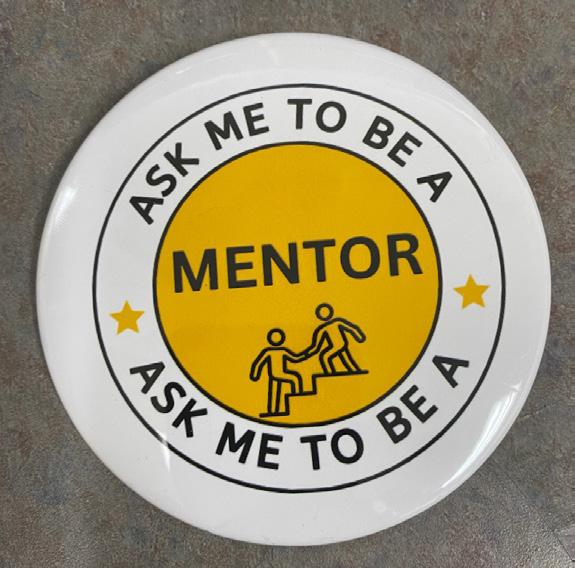
WANT A MENTOR?
MultiMedical Systems’ Chyrill Sandrini is always quick to help a customer. She always has a smile on her face and a wealth of knowledge to share with peers in the HTM community.
Her approach to networking and helping others recently hatched a new idea. An idea that she and others launched at a recent CMIA event.
Her idea is a way for potential mentors and mentees to find one another.
“The idea came to me in the middle of the night for the CMIA conference,” Sandrini explained. “What if we asked industry leaders to where big bright bold button, ‘Ask Me To Be A Mentor.’ We started it at CMIA and then at FBS. This gives younger biomeds an invitation to walk up and start a conversation with a senior BMET or leader in HTM. It has been a hit!”
The idea is to help those new to the HTM industry to feel comfortable starting a conversation and hopefully find a mentor to meet with on a regular basis.
“Leaders in the HTM industry are loving it, wearing the button, and they are reporting back saying they are having conversations and setting up meetings,” Sandrini said.
The plan is to continue the program.
“Yes, we are,” Sandrini said when asked about continuing the program at future conferences. “Danielle at AAMI wants to do this and involve their mentorship program. I didn’t know they had one. MMS is going to make the buttons (Ask me to be a mentor sponsored by MMS). We will also have it at MD Expo in April. We are asking mentors to save their buttons and wear at any HTM events.”
The back of the buttons created for the campaign include helpful steps.
The steps are:
• Find someone wearing a mentor button
• Introduce yourself
• Determine whether you’re compatible
• Discuss a first meeting or call
• Exchange contact info and set a meeting date
There is also a QR code that participants can scan to announce and update the mentor-mentee relationship.

May 2024 | TechNation 25
INDUSTRY UPDATES
WOMEN IN LEADERSHIP GROUP MOTIVATES & INSPIRES
Probo Medical Vice President of Demand Generation April Lebo explains that the LinkedIn group “Women in Leadership” (WIL) Society is the result of an idea that grew out of a MD Expo meeting.
“I had thoughts of wanting to pull together a group of like-minded ladies to help create a vision of a Women In Leadership Society for the HTM industry,” Lebo said. “We met at MD Expo last year where I presented ideas, the mission and hopes for inspiring others. Amber, Adrianna, Kim and Danielle were instrumental from the second we started talking, helping to create the foundation of the group and continuing to grow it every day since.”
The ladies she mentioned are Board Members Amber Sportsman with MW Imaging, Adrianna England with AUS, Kim Rowland with RSTI and AAMI’s Danielle McGeary.
Women In Leadership (WIL) was selected as the name to help inspire women and motivate others to know that it is possible to elevate into leadership positions within the HTM industry.
“The goal for the society is to provide a positive, safe, empowering, encouraging and educational space for women in HTM, as well as find mentors to help them throughout all phases of their career,” Lebo added.
“The group is open to any and all ladies in the HTM community regardless of position or title,” Lebo said. “Our group is on LinkedIn.”
The new group has received lots of positive feedback.
“The response thus far has been uplifting and extremely positive both from the women and the men in the industry. The hope is by putting some focus on the growth of women it will help encourage more ladies to enter the field,” Lebo said. “We started with five ladies and are now at 130+ women across the U.S.”
Lebo said she wants TechNation readers to know that the group is designed for women and growing the HTM community.
“WIL is focused on strengthening professional connections among females. We recognize that the industry as a whole depends on the health and strength of our greatest asset, our people,” Lebo said. “This initiative is to help ‘normalize’ females choosing HTM as a career – whether it is technical, clinical, administrative, sales, management/and above, etc.”
“HTM is a place for anyone looking for a great industry to build a meaningful career! Utilizing this platform helps us open doors of opportunity for awareness specifically for females where it may have been inadvertently overlooked as a career path and traditionally has been more relatable as a male profession,” she added. “If any women out there in the industry are interested in join the society, please find us on LinkedIn or reach out to any of the board members for more information!”

26 TechNation | May 2024
Verify the Integrity of Equipment
The Insulation tester, Leak Tester Tester, Shaver Leak Tester and Cable Continuity Tester are easy-to-use devices for verifying the functionality of equipment for safety
Detect & locate defects such as pinholes, cracks and bare spots in the jacket or coating of laparoscopic and bi-polar electrosurgical instruments McGan Insulation Tester

Cable Continuity Tester
Leak Tester Tester
Test the functionality of automated & handheld endoscope leakage testers with healthmark’s new Leak Tester Tester.

Test the quality of monopolar and bipolar cords with this user-friendly, durable device. A green light noti es the user that the cable passed testing.
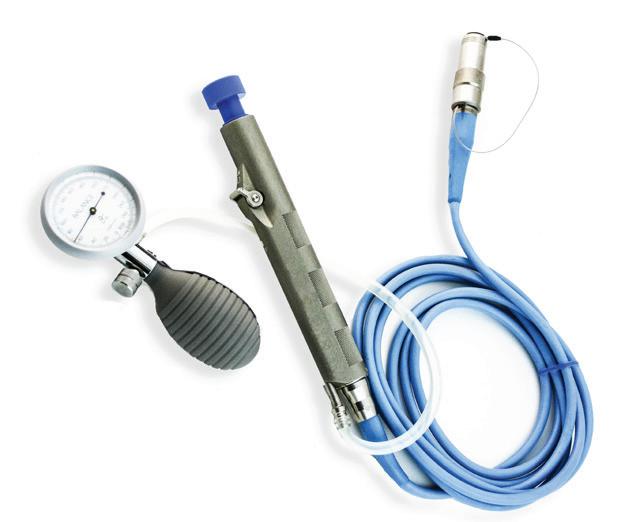
Shaver Leak Tester

Designed for pressure testing arthroscopic shavers to help identify leaks caused by failing seals that degrade over time from repeated use and processing.
For more of Healthmark’s intelligent solutions for instrument care & infection control, visit hmark.com hmark.com | 800.521.6224 | healthmark@hmark.com
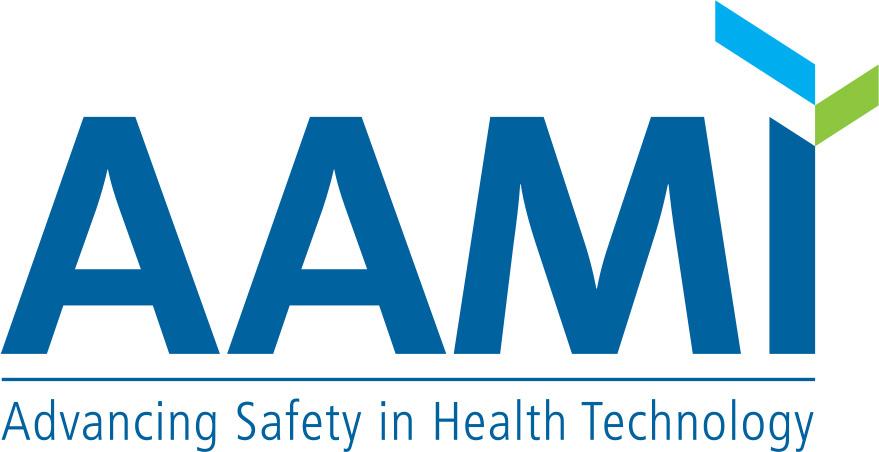
AAMI UPDATE
AAMI Hosts HTM Week 2024
AAMI is pleased to announce that it will host its annual HTM Week from May 19 to 25, 2024. Planned and hosted by AAMI’s Technology Management Council (TMC), HTM Week promotes awareness and appreciation of the professionals who manage and maintain the vast assortment of health technology found in healthcare delivery organizations.
HTM professionals fundamentally support our health care system by servicing and maintaining healthcare technologies for hospitals and other health care facilities, manufacturers and third-party organizations.
Danielle McGeary, vice president of HTM at AAMI, believes that the trainings and programming planned for May are an ideal chance promote the field and recognize the profession as a whole. “AAMI’s strategic plan is dedicated to helping increase the HTM personnel pipeline of professionals entering the field and providing continuing education to the HTM field at large. This year’s HTM Week contests and events are focused on these initiatives.”
HTM Week 2024 will feature:
1. Three free webinars taught by HTM subject matter experts
2. The “Best HTM Sticky Notes” contest
3. The BMET 101 high school giveaway contest
HTM WEEK WEBINARS
AAMI will host three webinars during HTM week. These sessions are free for both AAMI members and non-members and will address key topics that are vitally important to the HTM profession.
• HTM Cybercraft: Navigating the Cyber-Physical Maturity Journey: Taught by Ty Greenhalgh, industry principal, Healthcare at Claroty, this webinar addresses
the Cyber-Physical Security Maturity scale, and the key role of the HTM in risk management and ensuring patient safety. The webinar will be on May 21, 2024, from 2-3 p.m. ET.
• Adding to the Toolbox – Tips to Grow into a Better Leader: Greg Czajka, support services operations director at Advocate Health, will present on what it takes to cultivate leadership skills, and what it takes to add new tactics to your professional development toolbox. The webinar will be on May 22, 2024, from 2-3 p.m. ET.
• Next-Level HTM: Advancing Your Program through Data and Tech: Sponsored by PartsSource, this session will be taught by Dave Brennan of SVP Clinical Solutions, and will discuss how HTM leaders have evolved to become best-in-class using AAMI’s HTM Levels Guide. The webinar will be on May 23, 2024, from 2-3 p.m. ET.
BEST HTM STICKY NOTES CONTEST
HTM week also features the return of the HTM Sticky Notes contest. Have you seen or received a hilarious sticky note from a clinician on a broken medical device? We want to see it! Share it on social media using hashtags #BiomedNotes and #HTMWeek or email us a photo at htm@aami.org. The winner will get a pizza party for their department, and AAMI will keep all device manufacturers anonymous!
HIGH SCHOOL GIVEAWAY CONTEST
To promote the HTM field to the next generation, high school students are invited to participate in a special HTM Week giveaway. Three winning students will be awarded access to AAMI’s new BMET 101 course, which will give them the opportunity to learn more about the different career paths within HTM. All high school students are eligible, and they can enter the contest here. Submissions are due by May 17, 2024.
In short, AAMI’s HTM Week 2024 has plenty of opportunities, whether you’re a seasoned veteran, new to the field, or simply looking to learn about whether the
INDUSTRY UPDATES
28 TechNation | May 2024
HTM profession is right for you. AAMI also has HTM Week posters and an HTM Week Proclamation on its HTM Week Webpage that can be used to enhance the celebration. Questions? Reach us at htm@aami.org.
FDA EXPLAINS MEDICAL DEVICE CYBERSECURITY REQUIREMENTS
On the last day of AAMI/FDA neXus, Jessica Wilkerson, senior cyber policy advisor and Medical Device Cybersecurity Team Lead at FDA presented on regulatory requirements for medical device cybersecurity.
Wilkerson opened her talk with a simple “why.” “Cyber threats can, have, and very much do pose patient safety risks to the health care sector,” and FDA’s regulatory priorities are driven out of concern for patient safety.
The most relevant legislation to medical device cybersecurity is the Food and Drug Omnibus Reform Act (FDORA), which was passed into law as part of the Consolidated Appropriations Act of 2023 and signed into law on December 29, 2023. This incorporated Section 524B - Ensuring Cybersecurity of Medical Devices into the Federal Food, Drug, and Cosmetic Act (FD&C).
Section 3305 of the Omnibus, Ensuring Cybersecurity of Medical Devices, applies to prospective submissions for “cyber devices” under the 510(k), de Novo, PDP, and PMA pathways. It came into effect 90 days after signing, on March 29, 2023. Section 524b of the Act defines a “cyber device” as a device that has these three concurrent characteristics:
• Includes software validated, installed, or authorized by the sponsor as a device or in the device.
• Has the ability to connect to the Internet; and
• Contains any such technological characteristics validated, installed or authorized by the sponsor that could be vulnerable to cybersecurity threats.
This definition can include devices that do not have Internet connectivity but do have something like a USB port. Wilkerson stated that the Act also includes notable requirements for device manufacturers. Section 524B(a) requires that a sponsor do the following:
• Provide a plan to monitor, identify, and address, postmarket cybersecurity vulnerabilities and exploits, including coordinated vulnerability disclosure and related procedures.
• Design, develop, and maintain processes and procedures to provide a reasonable assurance that the device and related systems are cybersecure, and ensure that a device has postmarket patching capability.
• Provide a software bill of materials (SBOM) including commercial, open-source and off-the-shelf software components.
• Comply with other regulations and demonstrate reasonable assurance of cybersecurity.
FDA’s final premarket guidance was published last
year, on September 26, 2023, capping a nearly six-year development process. Wilkerson stated that guidance is “intended to help manufacturers comply with requirements under Section 524B of the FD&C Act.” Critically, the scope of the premarket guidance is much broader than the scope of 524b and will apply to more devices. Resources include a publicly available webinar hosted in 2022, and eSTAR’s incorporation of the guidance.
The guidance addresses how cybersecurity fits into Quality System Requirements and updated the 2022 draft by including CBER submission types, considerations for combination products, and elements associated with Section 524B requirements. Structural changes include subsections in Security Risk Management meant to clarify premarket submission documentation deliverables including Cybersecurity Risk Assessments and interoperability. Citing patient concerns, Wilkerson stated that cybersecurity should not stand in the way of interoperability. Last, the document address software bill of materials (SBOMs) and aligns with the 2021 National Telecommunications and Information Administration (NTIA) SBOM Framing Document. However, FDA still asks for supporting materials, which can be submitted separately from an SBOM.
Of course, the total product life cycle includes both the premarket and postmarket phases, and FDA’s findings in one will influence the other. “When we see an issue in the post market, we will go back to the premarket cybersecurity guidance … and we will update our review criteria,” Wilkerson said.
Regarding cybersecurity review, Wilkerson drew a key distinction, stating, “software engineering is about ensuring that certain things happen … security is about ensuring that they don’t.” The ideal question to ask is, “What can the device do?” Further, past performance does not equal future security. Cybersecurity threats evolve quickly, so past security is no guarantee of future safety. Wilkerson indicated that asking, “Who is ever going to do that?” in reference to a potential cyber threat, is neither relevant nor helpful. Cybersecurity concerns apply:
• If the device is or contains software
• If the device meets the definition of a Cyber Device.
• Regardless of whether the software or software component was designed by a medical device manufacturer or a third-party.
• Cybersecurity considerations apply to the entire system, not just the end device.
Wilkerson finally noted that your risks increase if the device has wired capabilities such as USB, ethernet, SD, CD, or RGA, as well as wireless capabilities such as Wi-Fi, Bluetooth, RF, inductive, or cloud connectivity. Cybersecurity considerations also apply to the entire system rather than just the end device, and will include software update infrastructure, cloud applications and commercial devices.
May 2024 | TechNation 29
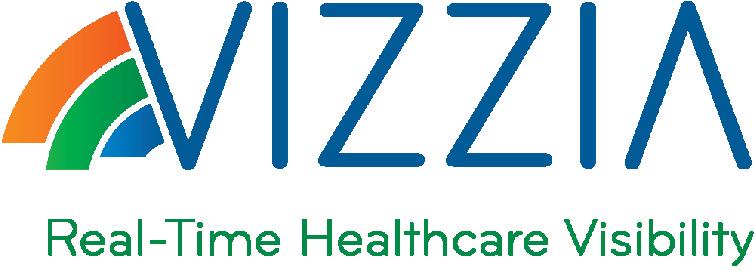



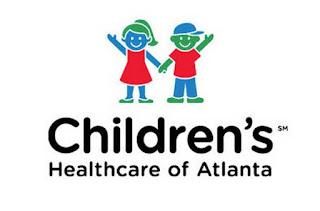

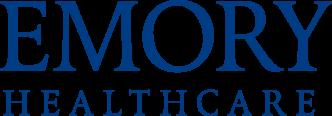




Environmental Monitoring Patient Workflow StaffDuress Asset Management REAL-TIMESOLUTIONS LearnHowHospitalsSavedMillions 1-855-849-9421|VIZZIATech.com|info@vizziatech.com RTLS Company Of The Year (2023) | 100% Healthcare Focused | Top 25 Healthcare Software Company (2024) DrivenByAVisionTo ImproveHealthcare. VizziaTechnologiesisarecognizedleaderinadvancedreal-time locationsystems(RTLS)anddataanalyticsforhealthcareorganizations. Frost&Sullivan2023RTLSNorthAmericancompanyoftheyearaward. SMARTHOSPITALSPOWEREDBYVIZZIA


RIBBON CUTTING
Interlight
Interlight provides health care facilities with mission-critical light bulbs and batteries. It carryies one of the largest inventories of specialty bulbs and batteries available that serve every lighting and battery application.
“Here at Interlight, we are obsessed with always satisfying all our customers’ needs. Interlight has operated since the invention of TV tubes. Whether it’s in the office, operating room, workshop, factory, home, lab, or garage, Interlight has the light bulb or battery you need. By maintaining one of the largest inventories in the world, along with an unsurpassed cross reference, Interlight leverages technology to create a one-stop-shop for all your lighting, parts and battery needs,” the company website states.
Director of Sales Jeff Van Etten recently shed more light on the company for TechNation readers.
Q: WHAT ARE SOME OF THE SERVICES AND PRODUCTS YOU OFFER?
A: Interlight is the world leader, without exaggeration, in providing certainty when it comes to replacement lighting, batteries and connectors in the medical space.
Q: HOW DOES YOUR COMPANY STAND OUT IN THE MEDICAL EQUIPMENT FIELD?
A: Through its proprietary technology, Interlight takes
multiple data points and cross references them to provide mission critical medical replacement parts with mission critical certainty. Interlight also, because of its tech advantage, can identify when a significant need exists, but continued supply of a part may not. Interlight then works with its partners to develop replacement parts and solutions where they otherwise would not have existed.
Q: WHAT IS ON THE HORIZON FOR YOUR COMPANY?
A: We are in the final stages of a further tech development that will only enhance our ability to supply the specific critical medical replacement part at the critical time. Our method, unlike our competitors, is to take the guesswork out of the customer’s hands when it comes to their replacement part need. Our customers can focus on what they do, providing medical care, while we can eliminate any research for them in understanding what medical replacement part they need to provide that care.
Q: IS THERE ANYTHING ELSE YOU WOULD LIKE OUR READERS TO KNOW?
A: Too often, medical customers are so frustrated when it comes to – what they believe to be – discontinued medical parts. Interlight, on a daily basis, is providing these parts for customers using our proprietary technology keeping procedures scheduled and equipment online.
For more information, visit interlightus.com.
INDUSTRY UPDATES May 2024 | TechNation 31

ECRI UPDATE
Making Sound Decisions When Evaluating Ultrasound Technologies
Diagnostic ultrasound scanners transmit high frequency sound waves into a patient’s body and then process the returning echoes to generate images (or other data) that clinicians view on a video display. Common clinical applications include the use of ultrasound to assess the unborn fetus, to determine the size and contours of organs, to evaluate the heart for wall and valve abnormalities, and to guide interventional procedures, including needle biopsies, therapeutic injections, and surgical procedures.
Ultrasound scanners are available in a wide variety of sizes and configurations. “This variety, coupled with the wide range of potential applications, can make selection decisions a challenge,” explains Dan Merton, BS, RDMS, FAIUM, FSDMS, diagnostic ultrasound specialist and principal project officer in ECRI’s Device Safety group. Decision-makers need to understand the pros and cons of each configuration, they need to identify the features available on the models under consideration, and they need to assess the performance of those features.
SCANNER CONFIGURATIONS
Conventional ultrasound scanners, as ECRI defines the term, are models that are permanently mounted on wheels. Also referred to as cart-based models, these scanners are available in several price points, from basic scanners costing less than $30,000 to premium models that can cost more than $250,000. Conventional scanners typically include a user interface, position-adjustable video display, and the ability to support a variety of transducers to meet different clinical needs. Conventional scanners are most commonly used by imaging specialists in dedicated imaging settings. Portable ultrasound scanners, by contrast, are not perma-
nently mounted on wheels and can be hand-carried between care settings. Portable scanners are available in a variety of formats including laptop, tablet, and handheld (wired or wireless) models. Portable scanners are primarily, but not exclusively, used for the use of ultrasound at the bedside by the treating clinician, as opposed to referring the patient to an imaging specialist when an ultrasound exam is indicated. POCUS allows clinicians to quickly determine whether an abnormality is present so they can expedite patient management decisions.
ECRI’S TESTING
In the past decade, ECRI has tested and rated more than 40 scanner models, covering virtually all available configurations (as outlined below) and a wide range of clinical applications. Factors assessed during these evaluations include: scanner capabilities and design features relevant to the intended application; image resolution, as determined through ECRI’s standardized laboratory testing (see photos); features that impact workflow and user ergonomics; interoperability of the device within a network; cybersecurity concerns; and the ease of cleaning and disinfecting ultrasound systems and transducers.
Through this testing, ECRI has observed continued improvements in image quality and workflow features, along with the steady addition of advanced features designed to aid data acquisition and analysis. Merton explains: Scanners are expected to meet established requirements (based on the type of scanner evaluated), thus “it’s the availability and performance of advanced features that tends to differentiate one model from another.” Other differentiating factors include ease of use, which is affected by the accessibility and layout of controls, battery life, and portability of the device.
• Conventional Scanners: Conventional scanners typically offer multiple transducer ports, allowing several probes to be connected simultaneously, and numerous user-adjustable controls to optimize data acquisition. They also provide the greatest number of ergonomic features, such as height-adjustable control panels and large, high-resolution video displays to
INDUSTRY UPDATES
32 TechNation | May 2024
Images obtained during ECRI’s ultrasound scanner testing.
Left: Testing of a needle-enhancement mode. With the mode off (top image), the biopsy needle is barely visible in a soft-tissue phantom; with the mode on (bottom image), visualization is greatly improved.
Right: Visualization of grey scale targets in an ultrasound quality assurance phantom. In this example, all six targets (arrows) can be identified.

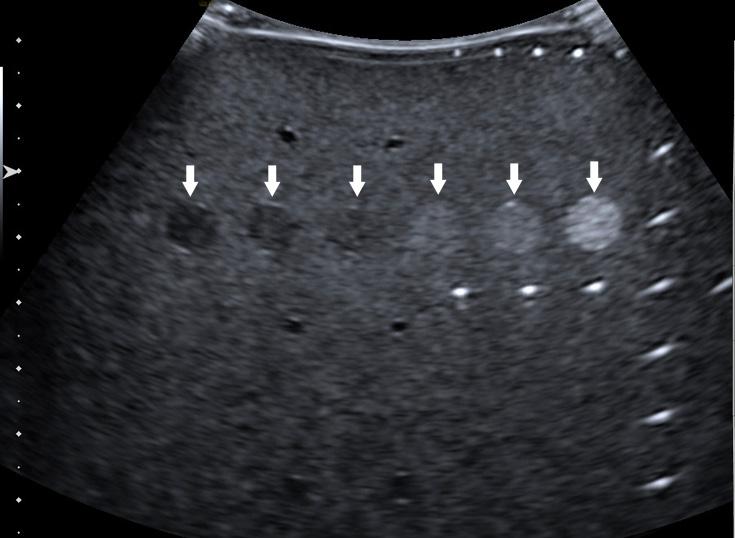
reduce eye strain. Some of the latest conventional scanners can be battery operated, which enhances workflow and allows more time-efficient exams. Additionally, premium models support the latest advancements in ultrasound imaging technology (e.g., elastography, 3-D/4-D imaging).
• Laptop-Style Portable Scanners: Laptop models can be placed on a tabletop for use but are most commonly used while mounted on a wheeled cart that has probe holders and storage bins for supplies. These scanners may provide similar capabilities as a conventional scanner, including advanced Doppler modes and transesophageal echocardiography (TEE), but in a smaller form factor that can be transported between facilities, or used where space is limited, such as in an operating room. Laptop scanners can range from approximately $25,000 to $100,000, depending on the configuration and transducers purchased. Merton notes that there has been a gradual shift away from interfaces that include lots of user-adjustable controls (which require advanced expertise) toward simpler, more automated designs that are better suited to POCUS users.
• Tablet-Style Portable Scanners: Tablet models consist of the scanner built into a dedicated video display that is used to view the acquired data and provide a touchscreen user interface. Tablet scanners can be placed on a table, attached to a wall mount, hand carried, or attached to a wheeled stand for transport within a facility. Tablet models typically support the most commonly used imaging and Doppler modes and a variety of transducers, but often do not have the advanced capabilities offered by premium laptop-style scanners. Prices range from approximately $20,000 to $75,000, depending on the configuration and transducers purchased.
• Handheld Scanners: Handheld scanners (also referred to as handheld probes) are a comparatively recent addition to the POCUS landscape. These models are compact enough to be held in one hand during use while the transducer is held in the other hand. Handheld probes are available in
several application-specific configurations to allow assessments of either deep or superficial structures; endocavity probes are also available. Some models provide a dual-head transducer or have advanced technologies to expand their clinical applicability.
Typical uses of handheld probes include assessing trauma patients in emergency departments, imaging of the musculoskeletal system by orthopedic specialists, quick assessment of the heart in the ICU, and vascular access guidance. Both wired and wireless designs are available:
Wired models consist of a probe that is either hardwired to a small video display device or is connected via a USB cable to a personal electronic device (PED), such as a smartphone or iPad. In the latter configuration, the probe vendor’s software application is installed on the PED to provide the user interface and the ability to view the image.
Wireless models connect via Wi-Fi to a user-provided PED operating the probe vendor’s software application. Wireless scanners offer several advantages when used for interventional applications (e.g., no transducer cable to contaminate the surgical field, easier manipulation of the transducer due to the cable-free design).
While these low-cost ($2,000 to $10,000) devices typically cannot match the performance of premium cart-based ultrasound scanners, ECRI has found their image quality and other performance factors to be generally adequate for their intended POCUS applications.
TO LEARN MORE . . .
ECRI’s evaluations of ultrasound technologies can be accessed by members of ECRI’s Capital Guide, Device Safety, and associated programs. To learn more about membership, visit https://www.ecri.org/solutions/device-evaluations, or contact ECRI by telephone at (610) 825-6000, ext. 5891, or by e-mail at clientservices@ecri.org.
May 2024 | TechNation 33




JOIN US AT THE June 14 −17, 2024 Phoenix, AZ Register at www.aami.org/eXchange LAST CHANCE TO REGISTER BEFORE PRICING GOES UP! Register for the HTM Leadership Course! Join us for a seven hour leadership training to help you take the next step in your career! With topics ranging from ethics in HTM, to expanding responsibilities and effective communications, this is the perfe ct course to shape you into the next HTM leader. Will you be exhibiting with us? Our exhibit hall is the ideal way to reach your qualified customers all in one place!
WELCOME TO THE TECHNATION COMMUNITY!
EMERITUS
Q: WHAT PRODUCT, SERVICE, OR SOLUTIONS DOES YOUR COMPANY PROVIDE TO THE INDUSTRY?

Emeritus provides innovative clinical engineering solutions specializing in hospital bed maintenance and medical equipment repair. With a focus on optimizing device performance and ensuring regulatory compliance, Emeritus offers comprehensive maintenance programs, rapid response times, and cutting-edge technology solutions to enhance patient care and safety.
Q: TELL US WHAT DIFFERENTIATES YOUR COMPANY FROM THE COMPETITION?

 Webb Clark, Senior Sales Manager
Webb Clark, Senior Sales Manager
Emeritus stands out from competitors with our Bed Maintenance 2.0, a revolutionary approach that saves up to 30% in costs and streamlines operations with one point of contact and one contract. In contrast to traditional maintenance services, our innovative approach incorporates advanced technology and predictive analytics. This enables us to minimize downtime, reduce repair costs, and ensure hospital beds are always in optimal condition. Our proactive approach not only saves time and money but also enhances patient safety and satisfaction, making Emeritus the preferred choice for transformative bed maintenance solutions in healthcare facilities.
Q: WHY DID YOU CHOOSE TECHNATION FOR ADVERTISING?
We chose TechNation for advertising because of its extensive reach and influence within the healthcare technology industry. With its dedicated audience of clinical engineering professionals and decision-makers, TechNation provides an ideal platform for us to showcase our innovative bed maintenance solutions. Additionally, TechNation’s reputation for quality content and industry expertise aligns well with our brand values, making it a natural choice for advertising our services. We believe that partnering with TechNation will help us effectively connect with our target audience and drive awareness of Emeritus as a leader in clinical engineering and medical equipment maintenance.
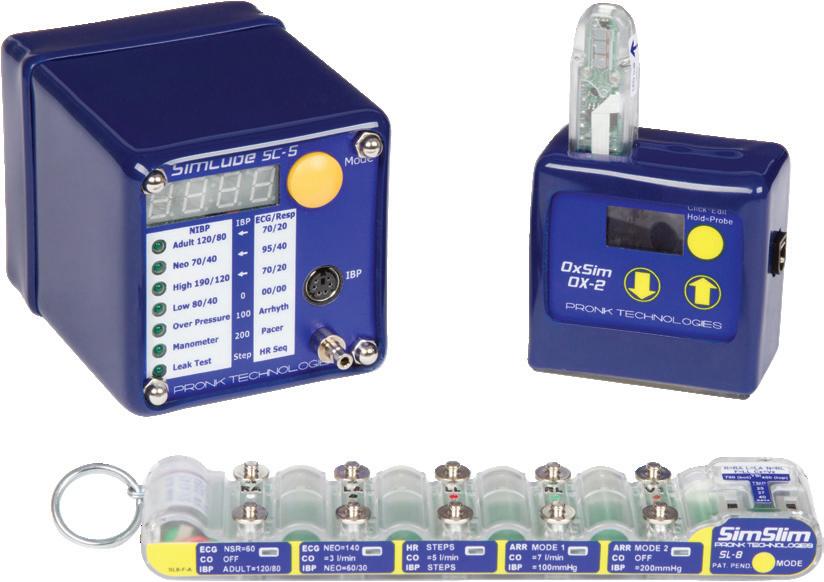
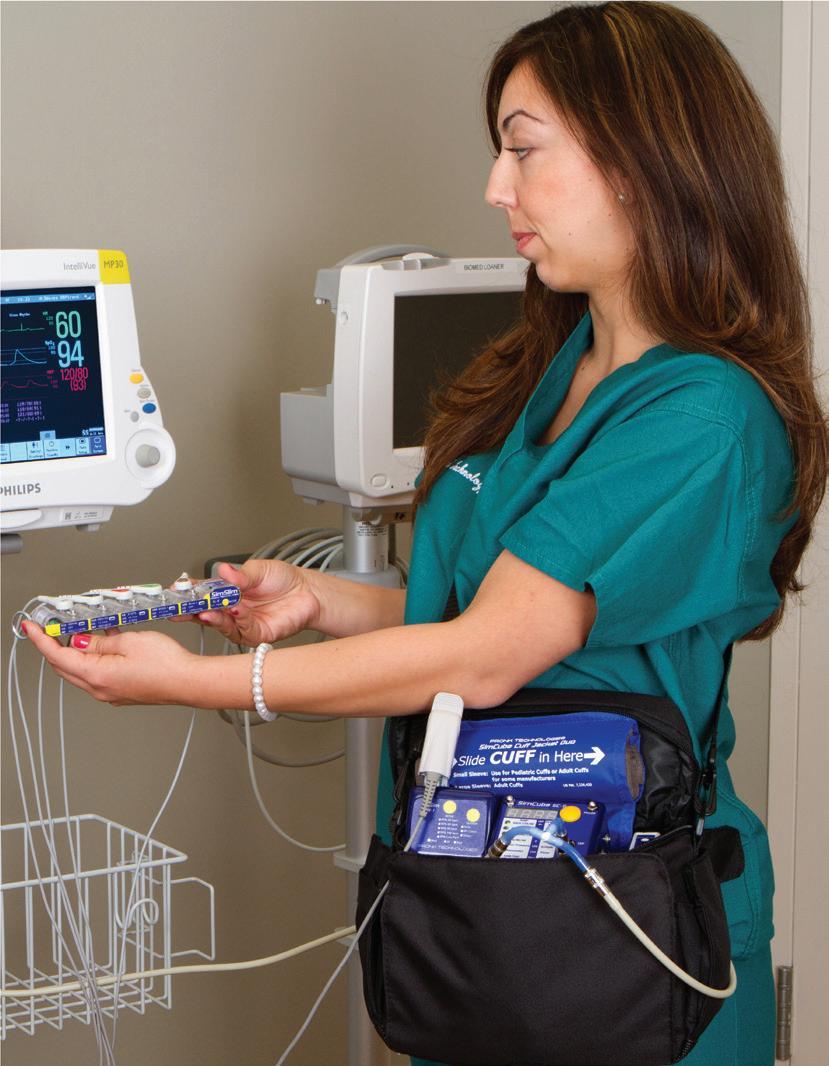
INDUSTRY UPDATES May 2024 | TechNation 35
BIOMED 101
Is Certification Right for You?
BY CHACE TORRES
There has always been a line in the sand for folks as to whether it’s important or not to go after the CBET certification. For the most part, it can be chalked up to situational since it makes sense for some more so than others. I have always been a proponent that certification is a good thing and something we, as professionals, should strive to attain. While there are instances where people pass the exam on the first try, it’s not as common as one might think. So, who is the exam for then? It is for those who want to distinguish themselves from their peers and add an extra notch of credibility on their belt. As you build on your career, you might find yourself in a leadership capacity. You may be dealing with prickly department heads or accreditation (TJV/ DNV) folks. I will tell you that a certification doesn’t hurt your chances at getting raises or promotions either. The reason many companies offer reimbursement for passing the exam is because by having the CBET it lends credibility to the organization that employs you. Let’s not discount the fact that some health systems list the certification as a requirement to have within a year of hiring. What they likely won’t mention is that you probably are just going to be passed up on since you didn’t have it in the first place.
I do not believe anyone should be discouraged from taking the CBET because of the “toughness” of the exam or because you failed on the first try. I took the exam years ago and failed by a few questions. I was disappointed and thereafter convinced myself that it was an unnecessary evil that I shied away from for years. What I came to realize is that in taking my career seriously along with my credibility, getting the CBET was important. I also found that I have people who follow my example and see me as an influencer of what they should do for their career. What I’m trying to explain is that YOU need to look inside yourself and decide what is important. If you don’t care about the CBET, I say carry on and best of luck with your endeavors.
Last year, I decided I was going to get it done once and for all. I knew it was going to be hard because at the time my son was less than 6 months old. I had to hold myself accountable to study. I would lay out an hour of study time in the mornings or even in the middle of the night after I put him back down to
sleep. I’m not saying this to boast, but to let you know that if you make time good things will come your way. As with anything in life, if you come into something half assed how can you expect the same results as someone who dedicated more energy than you?
There are many resources available for studying for the exam. AAMI provides an online study group hosted by David Scott and Donald Armstrong which I recommend as the best way to go. Next, you have the AAMI self-paced online module instruction available for purchase. Lastly, you have Quizlet flashcards that can come in clutch for two reasons: One is that they hit on so many topic points and two, they are a great way to get a quick review sweep right before the test. I suggest a combination of the online study group which comes with study material and is paired with the Quizlet flashcards. This is my opinion on the matter. Do what you feel would work best for yourself. I’m going to offer some suggestions for those who plan to take the CBET. Do not start studying the month you plan on taking the exam. You need to do this at least a month in advance so the material becomes a part of your daily ritual. Lay out an hour at least a couple times a week so that you become familiar with the material to the point your are reciting factoids at work to people belligerently, lol. The night before my exam, I took each subject test and the full final exam practice test and went to bed. I woke up, ate a good breakfast, got to the site about 20 minutes early and hit some flashcards on Quizlet to round out my prep. When you take the test and see a question you aren’t sure about, skip it and come back so you can focus further energy on it later without losing time to complete the whole exam. You will be unsure about several questions and that is alright. Lean into your strong points first so you tackle the harder stuff more tactfully. I personally don’t recommend going back and changing up answers you are wishy washy about unless you are sure you selected the wrong answer. When you decide on an answer, be as absolute as possible, because if you spend your remaining time going through the whole test changing all of your answers you likely will do a disservice to your chances of passing.
The CBET certification can be great to build your career. You have the capacity to do anything you set your mind to if you believe in yourself and put in the work. Find a buddy or a group and tackle this endeavor together. Biomeds are always faced with obstacles and new challenges to test our merit. We constantly are expected to learn, grow and adapt on a daily basis. Do this for yourself, your career, and continue pushing towards greater heights. I wish you the best of luck and, “May the beard be with you!”
THE BENCH
36 TechNation | May 2024
LIVE DEMO: MAY 1 at 2PM ET
Registration on WebinarWednesday.live. Eligible for 1 CE credit from the ACI.
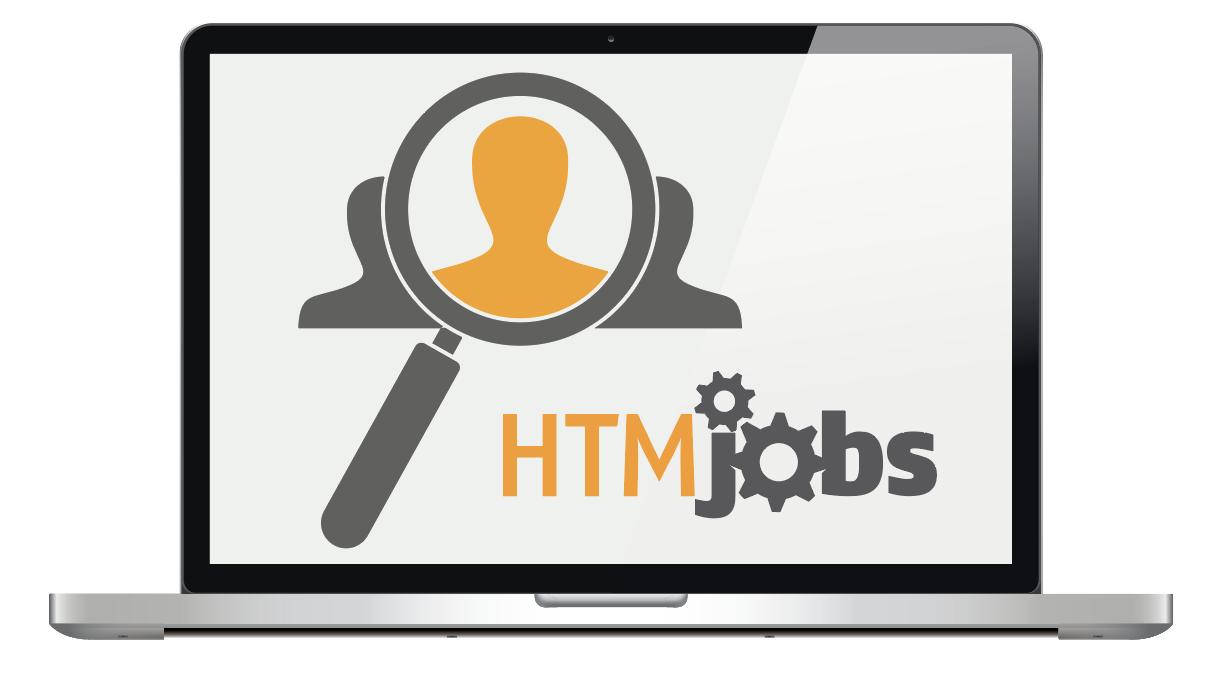
TRADE
HTMjobs.com is a highly targeted career center that connects its talent network with employers and hiring managers from the nation’s leading healthcare systems and companies. From the leader in providing news and information to the HTM community, TechNation is excited to provide a simple, streamlined and effective way to connect qualified candidates with open jobs and help HTM professionals find their next opportunity. There is absolutely no cost to register and complete the custom profile. Every profile and all information is private! HTM Jobs will not share or sell any information or profile data.
For more information, visit HTMjobs.com.
HTMjobs.com
TOOLS OF THE
May 2024 | TechNation 37
THE BENCH

TOOLS OF THE TRADE: COGNOSOS PROPAR
The TechNation Tools of the Trade Live Demo featured the Tool of the Trade highlighted in the March issue of TechNation magazine – the ProPAR (Proactive PAR) from Cognosos. It is eligible for 1 CE credit from the ACI.
Presenter Bill Haughton, Cognosos vice president of sales and business development, demonstrated how to avoid wasting time searching for clean equipment with ProPAR. Room-level accuracy, combined with AI-powered location engines, makes it easier than ever for biomed and central sterile teams to optimize the management of mobile medical equipment. Clean and soiled rooms self-monitor and self-report asset levels, automatically generating replenishment notifications and picklists. This simplifies asset management by saving time and ensuring teams focus solely on areas that require immediate replenishment. An easy-to-read dashboard presents a summary of asset availability and PAR-level metrics.
Haughton also fielded questions from attendees and provided thoughtful answers packed with information.
More than 80 health care professionals registered for the session and Jason Chaffin, lead BMET with Common Spirit in Texas won a pair of Apple Airpods as Webinar Wednesday continues to celebrate its 10th anniversary.
Attendees were asked, “What was your single biggest takeaway from today’s product demo?”
• “Tracking specialty medical equipment in a proficient manner is key,” said Sal Cruz, director of clinical engineering at Cook Children’s Medical Center.
• “More options with RTLS than I thought,” said John Labukas, from the biomed team lead at St. Luke’s.
• “Using ProPAR greatly helps in managing inventory and circulation of equipment. It also helps in ensuring there is always clean equipment for the clinical staff to use,” said January Ocampo, an intern at Franciscan Health.

WEBINAR HIGHLIGHTS NEXT-LEVEL PATIENT MONITOR TESTING
The recent Webinar Wednesday presentation “Next-Level Patient Monitor Testing: Why it may be time to reevaluate your testing strategies” by Elliot Weldon and Justin Ross was a hit. It was the most popular webinar this year with 396 registrations and 167 logged in for the live presentation. A recording of the Fluke-sponsored is available for on-demand viewing. The webinar is eligible for 1 credit from the ACI.
The presenters did a great job as they cast a spotlight on streamlining patient monitor testing. They discussed current testing strategies and examined the potential of automation to perform equal or more thorough testing within the same timeframe.
In this session, attendees learned more about how to navigate the decision-making process for procedure management and the power that comes from harnessing extensive testing data.
Attendees were able to experience a live demonstration of OneQA Workflow Automation Software that showcased its capacity for visually guided workflows to ensure that no step is overlooked. It is perfect for ensuring consistent training for new technicians while capturing the wisdom of seasoned biomeds.
The webinar highlighted the documentation advantages that come with standardization, which simplifies the preventative maintenance process and helps ensure patient safety, in a timelier manner.
A Q&A session provided additional insights and knowledge to attendees.
Attendees were asked, “How much new information did you receive from today’s webinar?”
• “I learned about an automation system that can be used, although I have seen it before I haven’t been able to see it in use. Something like this could change the world of testing,” said Lewis Brazier, Senior Electrical Medical Engineering Technician, East Kent Hospitals (UK).
• “The webinar was a good refresher on PM of a patient monitor,” shared Joseph Trujillo, biomedical engineering manager, Hoag Hospital Newport Beach.
• “It confirmed a lot of what I already knew. It was good to see the evolving tech related to biomed testing equipment,” Eastern Plumas Health Care Biomed Dana Tomczak said.
• “A lot of information that has improved my evaluation skills for patient monitors. And will make me a better tech than I was,” said Bahati Surprise Rian, biomedical technician, Children’s Surgical Hospital.
flukebiomedical.com
38 TechNation | May 2024

rigelmedical.com
WEBINAR NAVIGATES NFPA 99
The TechNation Webinar Wednesday recently continued its 10-year anniversary celebration with the session “Navigating NFPA 99: Selecting the Ideal Analyzer for Your Electrical Safety Workflow.” The webinar, sponsored by Rigel Medical, is eligible for 1 credit from the ACI.
The webinar focused on navigating the complexities of electrical safety testing in accordance with the latest NFPA 99 standard. Designed for healthcare professionals, biomeds and facility managers, the webinar shared insights into selecting the right safety analyzers to ensure compliance and enhance workflow efficiency. Lewis Lennard, Rigel Medical’s Product Manager in North America, delved into key considerations, such as equipment capabilities, regulatory requirements and best practices for testing critical medical devices.
The webinar provided tips on how to gain practical tips and strategies for streamlining your electrical safety testing processes while prioritizing patient safety and regulatory compliance. The session was an opportunity to optimize one’s electrical safety workflow and elevate the standard of care in a health care facility.
The webinar was very popular. It received positive feedback with a rating of 4 out of a possible high of 5.
One attendee was especially please as the winner of a pair of Apple Airpods as Webinar Wednesday continues to celebrate its 10th anniversary. Martin O’Brien, a biomedical technical instructor at RTS Medical in Wisconsin won the Apple Airpods. Attendees were asked, “Excluding CE credits, why do you attend Webinar Wednesday?”
• “I am always looking to stay educated and informed on the latest changes, technology and information available in the medical equipment repair industry,” said Lance Dixon, CBET/ Owner, Precision Med Biomedical Solutions.
• “Because I enjoy learning more about being around the biomedical community and what it is to become an HTM,” said MSCS student Patrick Hines.
• “I am always looking to improve our processes, gain new insights into patient safety and test equipment needs,” said Larry Hamilton, biomedical services manager at Venture Medical Requip.
• “Learn new things, different ways of performing tests, keep up with new trends, etc.,” said Damien Rasmussen, a biomed with CHI.

All webinars, podcast, and product demos are eligible for 1 CE credit from the ACI.
these webinars on-demand

WEBINAR EXPLORES ROI
kontakt.io
The Webinar Wednesday presentation “Quantifying ROI: Measuring the Value and Impact of Improved Medical Device Management” was sponsored by Kontakt.io. It is eligible for 1 credit from the ACI.
The session was a deep-dive analysis of the very real and significant ROI health services are seeing from medical device management. It unlocked the often overlooked quantified value of investing in an equipment management solution.
Kontakt.io Global Head of Healthcare Practice Kapil Asher explored:
• The complexities of measuring ROI in medical device tracking, acknowledging the inherent difficulties in attributing savings directly to this aspect.
• Evidence that hospitals using Kontakt.io’s playbook have achieved substantial returns, boasting a remarkable greater than 10x ROI within a few months of implementation.
• Insights and best practices aimed at modernizing medical device management, illustrating how effective tracking can eliminate waste and inefficiencies in health care facilities.
Denise Dixon a Biomedical Engineering Tech II of Fairbanks Memorial Hospital in Alaska won a pair of Apple Airpods as part of the ongoing Webinar Wednesday 10th anniversary celebration. Attendees were asked “What does Webinar Wednesday provide the industry?”
• “Webinar Wednesday provides visibility to technologies, devices and programs in a very accessible format and length of time. The variety is such that depending on the topic any range of entry-level technician to director could attend. Where you have greater interest, there is a path to connect with the presenting vendor/ organization,” said Steven Ellithorpe, Executive Director, Providence.
• “This is a great platform to share industry specific content to a wide audience,” shared David Banister, Field Service Technician, Clinical Engineering Services LLC.
• “It is the only place for education of what’s out there in the real world,” said Casey Celver, Biomed, Legacy Emanuel.
• “Quick bites of information on a variety of topics,” said Denise Dixon, Biomedical Engineering Tech II, Fairbanks Memorial Hospital.
• “It gives us an opportunity to listen and learn in a virtual environment that is easily accessible. The ability to earn CEU credits in this format is a big plus,” said Sal Cruz, Director of Clinical Engineering, Cook Children’s Medical Center.
For more information, visit WebinarWednesday.live.
CLICK. WATCH. EARN.
Watch
May 2024 | TechNation 39

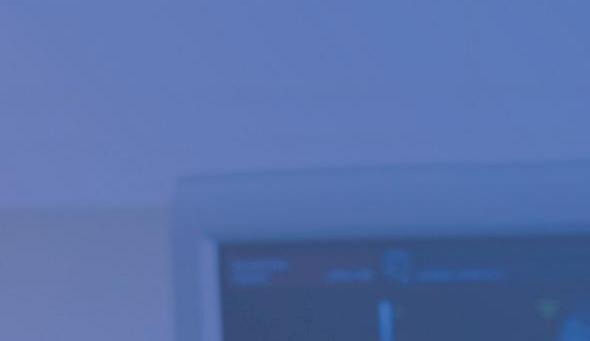
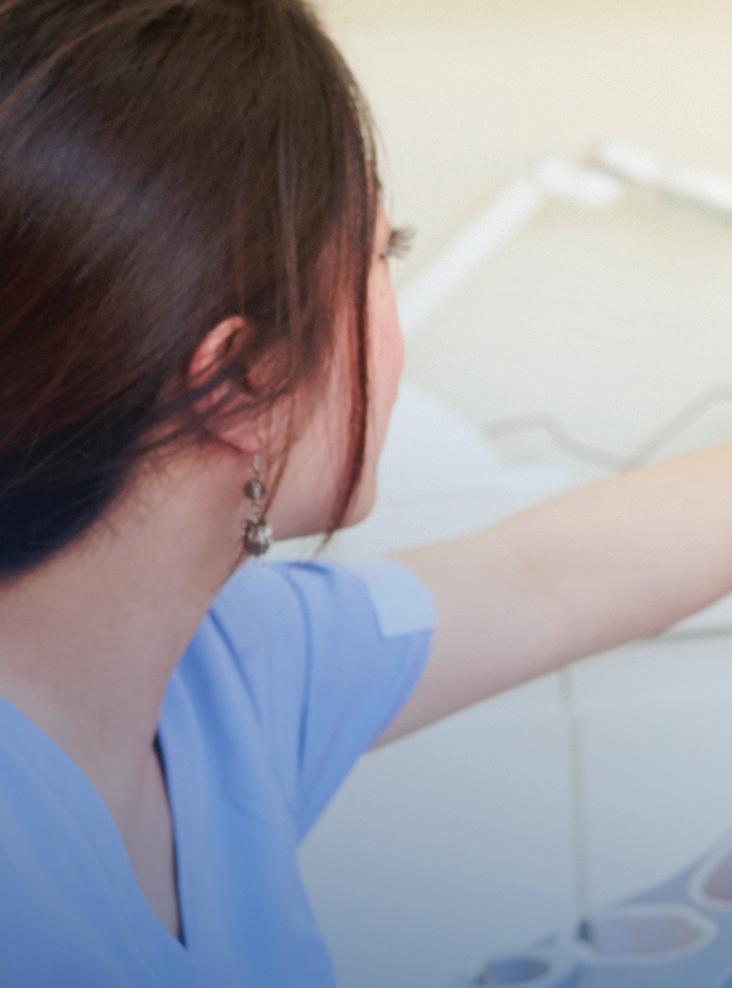







Make smarter health technology decisions
Choose the right capital equipment, supplies, and health IT for your facility with guidance from ECRI Instituteʼs team of biomedical and cybersecurity engineers, clinicians, and human factors experts.


ECRI is a trusted authority on healthcare technologies that improve the quality and cost-effectiveness of patient care.
Get test results and ratings, free of vendor bias


Stay on top of risks with hazard and recall notifications
Compare technology with overviews and specifications
Get Independent Evaluations and Advice
Learn more at www.ecri.org/solutions/device-evaluations or contact us today at 610-825-6000, x5891.
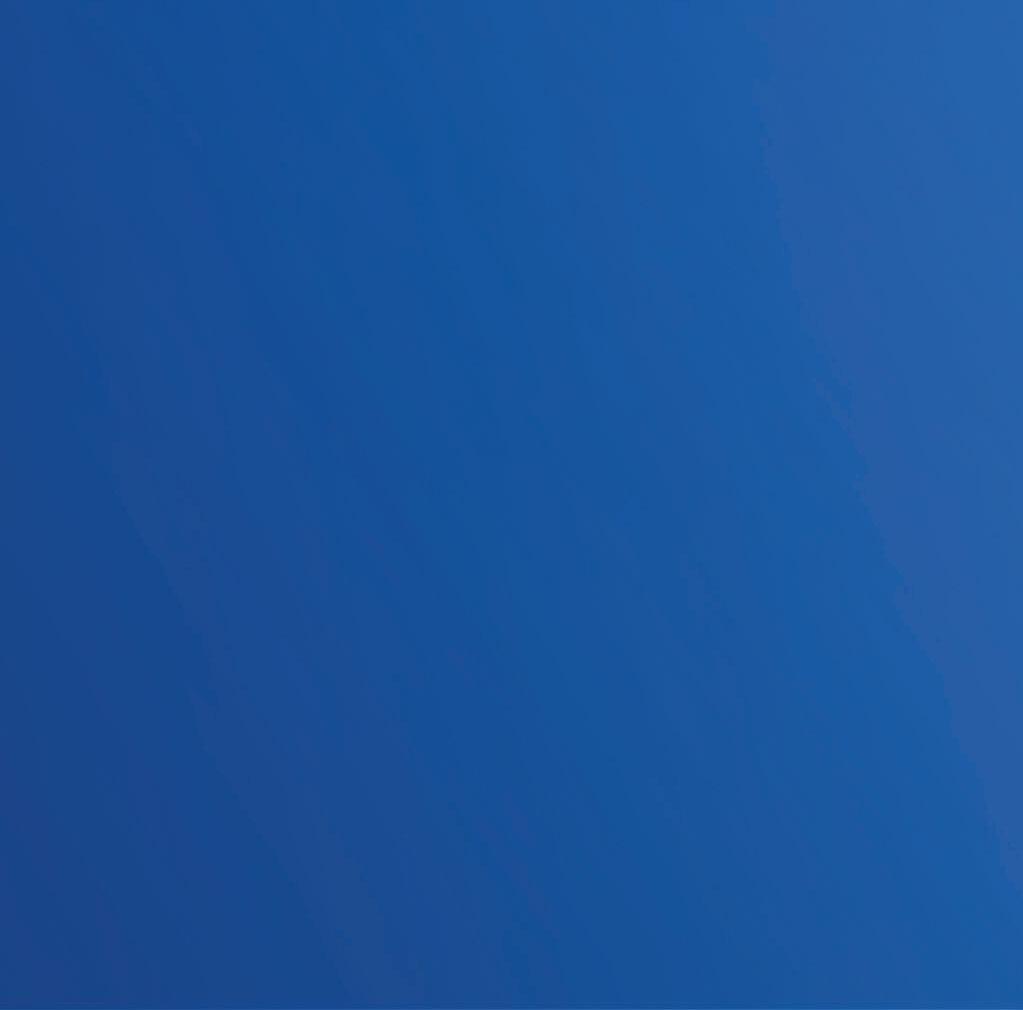




If your ultrasound transducer is deemed beyond repair at any point, you will not be charged for the repair attempt.

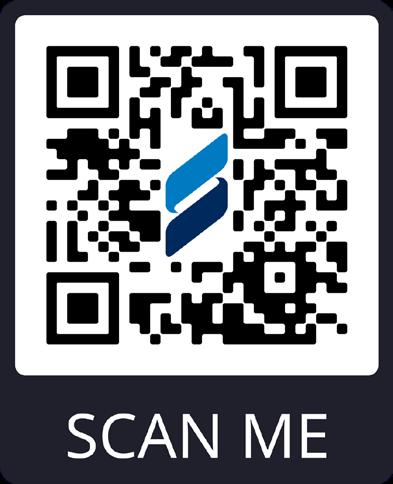
No-Risk Transducer Repair Services
www.mysummitimaging.com
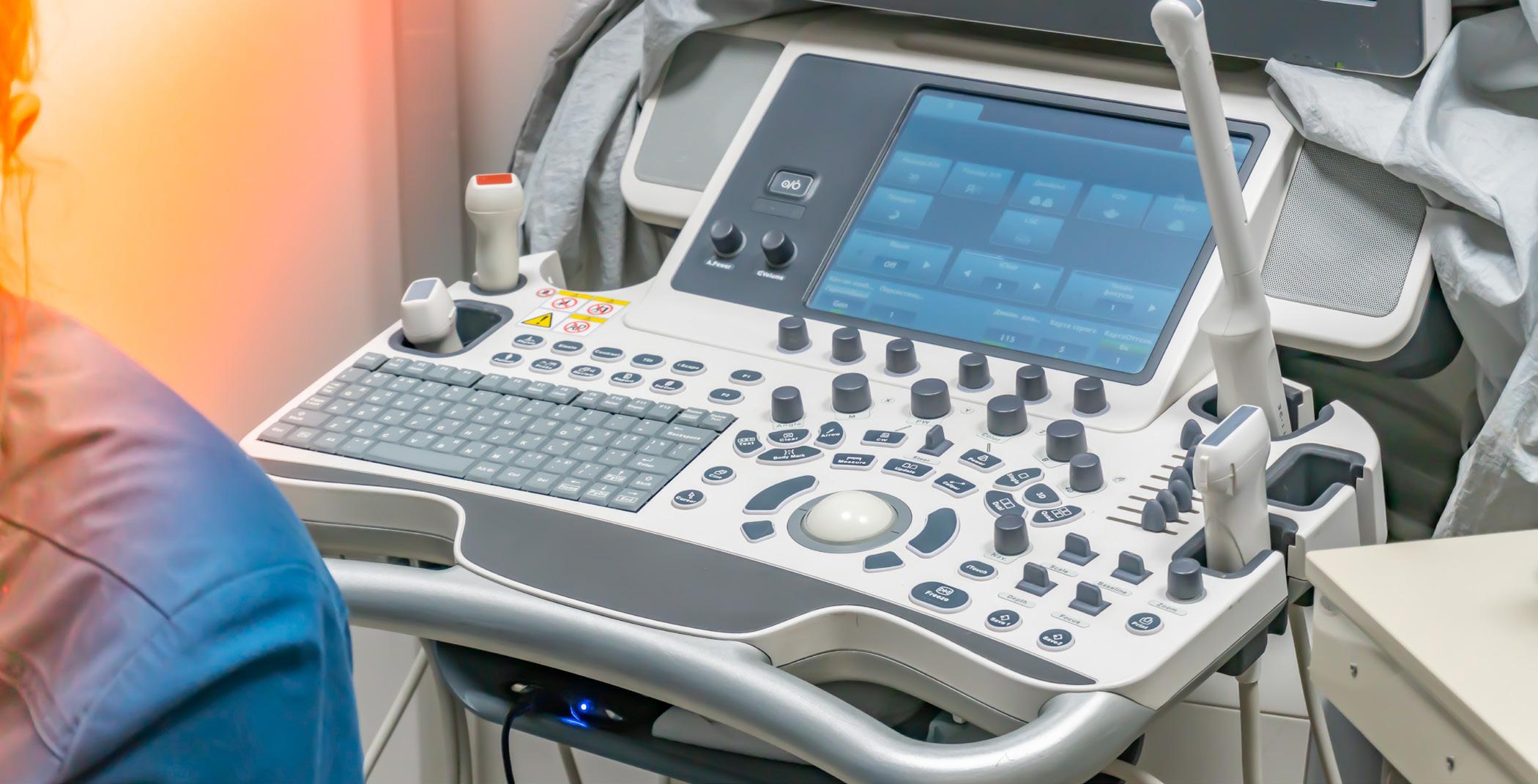
U ROUNDTABLE Ultrasound
ltrasound continues to be a hot topic in health care because of its many uses and technological advances. In this month’s roundtable article, TechNation shared valuable insights from HTM professionals with experience working with ultrasound systems and probes.
Participants in the ultrasound roundtable article are:
• AllParts Medical Multi-Vendor Ultrasound Modality Manager Joni S. Charles;
• Avante Health Solutions Senior Field Service Engineer Lyle Cmerek;
• MW Imaging Senior Service Director Tom Hanak;
• Summit Imaging Senior Vice President Larry Nguyen;
• Philips Senior Marketing Manager Juan Pablo Miranda Pantoja;
• Philips Ultrasound Senior Product Manager Terri Richardson;
• Innovatus Imaging Vice President of Sales and Marketing
Matt Tomory;
• Philips Ultrasound Marketing Communications Leader Leigh White; and
• Philips Director of Product Marketing for Access to Care and OB Ultrasound Ann Marie Young.
Q: WHAT ARE SOME OF THE LATEST FEATURES FACILITIES SHOULD CONSIDER WHEN PURCHASING ULTRASOUND DEVICES?
CHARLES: Shear wave elastography, contrast-enhanced ultrasound (CEUS), ultrasound fusion imaging, and the integration of AI are noteworthy advancements in medical imaging. Additionally, keep an eye out for innovations in transducer technologies, including both design and functionalities.
CMEREK: The world of ultrasound is constantly evolving. New technologies, ideas, and features are ever-present. Not all the new developments stick around for the long haul. Here are some of the newer things that I believe are standing the test of time:
• Handheld – They are extremely portable and have a tiny footprint. They are showing up in new departments and new users’ pockets.
ROUNDTABLE
42 TechNation | May 2024
• Strain – This technology has the capacity to take in-depth measurements of the heart muscle.
• Sheer wave/elastography – This technology uses ultrasound to detect tissue stiffness.
HANAK: Some of the latest features are advanced imaging technologies like 3D/4D imaging for better visualization; Artificial intelligence (AI) integration for automated image analysis and enhanced diagnostics; portable and lightweight designs for increased mobility and flexibility wireless connectivity for seamless data transfer and integration with other devices; enhanced ergonomics for improved user comfort during prolonged use; touchscreen interfaces with intuitive user interfaces for easier navigation and operation; expanded transducer options to cover a wide range of application and specialties; and integration with telemedicine platforms for remote consultations and collaborations.
NGUYEN: Opt for machines with high-resolution imaging capabilities for clearer and more detailed images. This is particularly important for diagnostic accuracy. Advanced transducer technology also plays a crucial role in ultrasound imaging quality. Look for machines with advanced transducer technology, such as matrix array transducers, which can provide better penetration and resolution for various applications.
TOMORY: The evolution of ultrasound throughout my career has been amazing to watch and experience. One of the more recent features is Artificial Intelligence (AI) which most manufacturers have embraced and implemented. This technology “learns” and adapts over time to improve diagnoses, image optimization, and calculation accuracy as well as reduce false positives and speed up exams. Another “feature” would be access to onboard OEM diagnostics. While not a clinical feature, this is critical to supporting the system after the manufacturer’s warranty has expired and is much easier to obtain during the purchase process than when nearing the end of a warranty period. The average retention of ultrasound systems is approximately seven years, and the average warranty is one year so planning for the six-year period post warranty starts at the point of purchase.
YOUNG: some of the latest features facilities should consider when purchasing ultrasound devices are:
• AI features in cardiac and lung, or quick scan and optimization tools
• Reporting options from device
• Array of transducer selection
• Product life cycle and upgrade path
• Mobility, cleanability and battery life
• Total cost of ownership
• Product reliability and where parts are sourced
• Local service support
Q: WHAT ARE THE PROS AND CONS OF BUYING BRAND NEW VERSUS BUYING REFURBISHED PROBES/ TRANSDUCERS?
CHARLES: The primary advantage of purchasing refurbished items lies in their cost-effectiveness. However, it’s crucial to select reputable companies when buying refurbished ultrasound products, as quality is a very important factor. New probe warranties typically offer the longest and most comprehensive coverage. When buying refurbished probes, it’s essential to inquire about the available warranties.
CMEREK: The biggest difference between new and refurbished probes is cost versus the age of the probe. New probes – They are brand new, but more expensive. Refurb probes – They are used, but less expensive.
HANAK: When considering whether to buy new or refurbished probes/transducers for ultrasound devices, here are some pros and cons to keep in mind:
Buying New Pros
• Warranty: New probes usually come with a manufacturer’s warranty, providing peace of mind regarding potential defects or malfunctions.
• Latest Technology: New probes often incorporate the latest technological advancements and imaging capabilities.
• Longevity: New probes are likely to have a longer lifespan compared to refurbished ones.
• Support: Manufacturers typically provide technical support and updates for new probes.
Buying New Cons
• Higher Cost: New probes are generally more expensive than refurbished ones.
• Limited Availability: Depending on the manufacturer and model, new probes may have limited availability, especially for older ultrasound devices.
• Response Times: Depending on the company, there can be longer turnaround times with some service providers when buying new.
Buying Refurbished Pros
• Cost Savings: Refurbished probes are typically less expensive, making them more budget friendly.
• Quality Assurance: Reputable vendors thoroughly inspect and test refurbished probes to ensure they meet quality standards.
• Availability: Refurbished probes may be more readily available, especially for older ultrasound models.
Buying Refurbished Cons:
• Limited Warranty: Refurbished probes may come with a shorter warranty period or limited warranty coverage compared to new probes.
• Potential for Wear and Tear: Despite refurbishment, there’s a possibility that refurbished probes may have more wear and tear compared to new ones, potentially affecting performance or longevity.
May 2024 | TechNation 43



• Technology Limitations: Refurbished probes may not incorporate the latest technological advancements or imaging capabilities available in newer models. Ultimately, the decision between buying new or refurbished probes depends on factors such as budget, desired features, and availability of compatible options for your ultrasound device.
NGUYEN: The pros of buying refurbished versus brand new is cost savings. Refurbished probes/transducers are generally more affordable than brand new ones that are identical in model and functionality, making them a costeffective option for facilities with budget constraints.
TOMORY: Transducers are the most expensive aspect of ultrasound maintenance and repair throughout the life of an ultrasound system. Some TechNation readers may not know this, but an ultrasound probe is a Class II finished medical device with its own 510k certification – not an accessory to an ultrasound system and needs to be treated as such. New transducers come from the OEM with documentation that the device performs per the 510k application along with a premium price tag. What about “refurbished” probes and how do you KNOW the devices perform as the OEM intended and conforms to OEM form, fit and function? At a bare minimum, ISO 13485:2016 certification, with repair of medical ultrasound transducers in the Scope of Registration, on the certificate should be provided. How does the provider repair, test and prove the device does what they say it does? At Innovatus Imaging, replacement transducer arrays are manufactured in our FDA-registered facility for ultrasound design and manufacturing, and repair processes, materials, cable harnesses, etc. are developed and informed in accordance with FDA guidelines. Once qualified, these materials and processes are transferred to our ISO 13485:2016 certified Ultrasound Repair Center of Excellence to be implemented into our repairs.
Q: WITH TECHNOLOGY ADVANCING SO QUICKLY, DO YOU THINK THAT IT’S POSSIBLE FOR A SINGLE SERVICE PROVIDER TO ADDRESS ULTRASOUND SYSTEMS AND PROBES?
CHARLES: Addressing ... absolutely! Providing direct service for ALL ultrasound products ... not quite. Servicing multivendor ultrasound typically involves a blend of direct service for the majority and occasional service interaction with specific manufacturers. AllParts can help!
CMEREK: At Avante, we have advanced machinery, techniques, and an R&D team who have spent their careers learning how to develop specific repairs on ultrasound parts, probes and systems. We have a team of field service engineers, application specialists, and probe and part repair specialists who can assist onsite and/or remotely. We have the ability to repair parts and probes and an inventory of parts and probes in stock if and when an issue arises. We are more than equipped and able to support you and your ultrasound machines in any way for the entirety of their lifespan.
HANAK: Given the rapid pace of technological advancement in the field of ultrasound, it can be challenging for a single provider to address all aspects of ultrasound systems and probes comprehensively. However, MW Imaging specializes in offering a wide range of ultrasound equipment and accessories, including systems, probes, and related services. We often collaborate with multiple manufacturers and suppliers to offer diverse options to meet various customer needs.
NGUYEN: Yes, it is possible for a single service provider to address both ultrasound systems and probes, especially with advancements in technology and the expertise of service providers. The most capable ultrasound repair organizations are experts in complex electronic repair which is the main source of failure for systems and probes.
Lyle Cmerek Avante Health Solutions
Tom Hanak MW Imaging
Joni S. Charles AllParts Medical
ROUNDTABLE 44 TechNation | May 2024
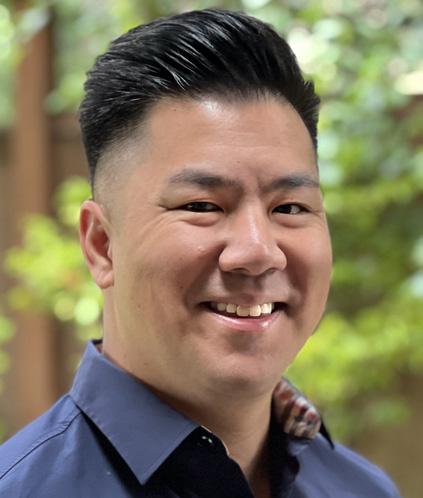

TOMORY: As mentioned earlier, transducers are finished Class II medical devices with their own 510k. A tremendous amount of acoustic, material, mechanical and electrical engineering has gone in to designing, developing and manufacturing them. Transducer repair is a specialty which requires singular focus on restoring these devices back to OEM intent, form, fit and function. Think about the medical care industry; if you have a disease, do you go to a generalist or a specialist? I want a specialist who is trained and is focused on one thing: to get me back to my “intended design” so to speak. This is what TechNation readers should be looking for when choosing repair providers.
WHITE: Yes, if the single service provider has deep clinical and technical expertise across clinical applications and the ability to focus resources on multiple clinical areas at the same time.
Q: WHAT ARE THE ADVANTAGES AND CHALLENGES OF A HANDHELD POCUS SYSTEM COMPARED TO A CARTBASED ULTRASOUND SYSTEM?
CHARLES: Historically, POCUS has been hindered by image quality and limited options. However, the point-of-care industry has significantly improved image quality over the past decade. Nevertheless, it remains challenging to incorporate all the advanced features of a fully fledged ultrasound unit into a smaller, more mobile device.
CMEREK: There is a place for both handheld and cart-based units. Handheld systems are used in applications where portability trumps penetration and image quality such as ERs, ambulances, etc. A cart-based system has more processing power, more features, much better penetration, and is often located in departments where the best image quality is necessary such as radiology, cardiology, anesthesia, etc.
HANAK: Advantages handheld point of care ultrasound system (POCUS) compared to cart-based ultrasound system: • Portability: Handheld POCUS systems are lightweight and

portable, allowing for easy transport within health care facilities or even in the field. Cart-based systems are typically bulkier and less maneuverable.
• Point-of-Care Use: Handheld POCUS systems enable clinicians to perform ultrasound examinations directly at the patient’s bedside, facilitating real-time diagnosis and decision-making without the need to transfer the patient to a dedicated imaging suite.
• Immediate Access: With handheld POCUS systems, health care providers have immediate access to ultrasound imaging, which can expedite the diagnostic process and improve patient outcomes, especially in emergency or critical care settings.
• Ease of Use: Handheld POCUS systems are often designed with user-friendly interfaces and simplified controls, making them more accessible to a wider range of health care professionals, including non-specialists.
Challenges of POCUS compared to cart-based ultrasound system:
• Image Quality: Handheld POCUS systems may have limitations in image quality compared to cart-based systems, especially for complex or detailed examinations. The smaller size and simplified design of handheld devices may compromise certain imaging capabilities.
• Limited Applications: Handheld POCUS systems may not offer the same breadth of imaging capabilities and transducer options as cart-based systems, restricting their utility for certain specialized examinations or procedures.
• Ergonomics: Prolonged use of handheld POCUS devices may lead to ergonomic challenges for clinicians, potentially causing discomfort or fatigue, whereas cart-based systems often provide more ergonomic configurations for extended use.
• Cost: While handheld POCUS systems may be more affordable upfront, they may require additional investments in accessories or software updates over time. In contrast, cart-based systems typically have higher initial costs but may offer better scalability and long-term value.
Ultimately, the choice between handheld POCUS and cartbased ultrasound systems depends on factors such as clinical needs, workflow preferences and budget considerations.
Juan Pablo Miranda Pantoja Philips
Terri Richardson Philips
Larry Nguyen Summit Imaging
May 2024 | TechNation 45


NGUYEN: Point-of-care imaging: Handheld POCUS systems enable point-of-care imaging, allowing clinicians to perform ultrasound examinations directly at the patient’s bedside. This facilitates immediate diagnosis, treatment planning and monitoring without the need for patient transportation to a dedicated ultrasound suite.
PANTOJA: 1. Portability and accessibility: HHUS devices are compact and lightweight, making them easy to carry around. Clinicians can use HHUS at the point of care, whether in the emergency department, clinic, or bedside, without needing to move patients to a dedicated ultrasound room. Devices like Lumify also feature Reacts (Collaboration Live) – this allows remote collaboration to get answers and support faster. 2. Immediacy of Results: HHUS provides real-time imaging, allowing clinicians to visualize structures immediately during patient assessment. Rapid access to ultrasound results aids in timely clinical decision-making. 3.
Cost-Effectiveness: HHUS devices are generally more affordable than large cart-based systems. They offer a cost-effective solution for routine imaging needs. 4. Workflow Integration: HHUS can be seamlessly integrated into existing workflows. Local storage options allow for efficient data management and integration with PACS. 5. Reduced Need for Follow-Up Testing: Preliminary studies suggest that HHUS use in outpatient settings reduces the need for follow-up testing. False negatives are relatively low when HHUS is employed – one article concluded: “The advantages of handheld advanced imaging systems are evident. Despite challenges related to device operation and image management, administrative hospital support and fiscal benefits can help overcome these obstacles. Medical education plays a crucial role in driving innovation and adoption of handheld ultrasound (HHU) devices. Training the next generation of physicians using these platforms fosters familiarity and comfort, likely extending into regular practice.” Looking ahead, research to enhance and validate HHU use will be pivotal for patient outcomes and expanding its applications. Machine learning and tele-ultrasound are

poised to transform point-of-care ultrasound (POCUS), and physicians should actively embrace these technologies for better patient care.
TOMORY: POCUS has come a long way since I used to travel with my trusty Sonosite 180 ultrasound system (reminded me of a Fisher Price toy but worked remarkably well!). They are everywhere in health care facilities these days due to size, portability, capabilities, cost; and their use has expanded to clinicians beyond specialists like sonographers. These are the main advantages and opportunities of these amazing systems. The challenge is that they are still not to the level of console-based systems in terms of image quality, features, and specialized operators like credentialed ultrasound technologists. Just because you CAN operate an ultrasound system and have had some training, does not make you a specialist or expert. For detailed, diagnostic exams, I want an up-to-date consolebased system operated by an SDMS registered sonographer.
Q: WHAT ELSE DO YOU THINK TECHNATION READERS NEED TO KNOW ABOUT PURCHASING AND SERVICING ULTRASOUND DEVICES?
CHARLES: When acquiring an ultrasound unit, it’s crucial to factor in the post-warranty servicing costs. As you make the purchase, it’s advisable to concurrently devise a plan for its servicing, whether it involves in-house biomedical support, third-party servicing, or opting for a manufacturer extended warranty.
CMEREK: Most importantly, you have choices. Find a company that gives you what you want, when you want it, and doesn’t try to pressure you into something that you don’t want. Work with someone who knows all the current products, who will ask questions to understand your needs, and who is able to tailor your specific requirements to determine the make/model that works best for you. Partnering with companies like Avante, which are able to support you after your machine is installed with onsite application support, remote application support, service training, tech support, a team of field service engineers,
ROUNDTABLE
Leigh White Philips
Ann Marie Young Philips
46 TechNation | May 2024
Matt Tomory Innovatus Imaging
service contracts, non-contractual service, probe repair, part sales, and any other specific need that you have.
HANAK: Readers should know:
• Training and Support: Ensure that the provider offers comprehensive training and ongoing technical support for the purchased ultrasound devices. Proper training is essential for maximizing the capabilities of the equipment and ensuring accurate diagnosis and treatment.
• Compatibility and Integration: Consider the compatibility of the ultrasound devices with existing infrastructure, such as electronic medical record (EMR) systems and other diagnostic equipment. Integration capabilities can streamline workflow and improve efficiency within health care facilities.
• Regulatory Compliance: Verify that the ultrasound devices meet regulatory standards and certifications applicable to the region where they will be used. Compliance with regulations ensures patient safety and adherence to quality standards.
• Service Contracts: Evaluate the availability and terms of service contracts offered by the provider. Service contracts can provide peace of mind by covering maintenance, repairs and replacements, reducing downtime and unexpected expenses.
• Future-proofing: Anticipate future needs and technological advancements in ultrasound imaging when making purchasing decisions. Investing in equipment with upgradeable software and modular designs can help future-proof your investment and adapt to evolving clinical requirements.
• User Feedback and Reviews: Consider feedback and reviews from other health care professionals who have experience with the ultrasound devices you’re considering. Real-world insights can offer valuable perspectives on usability, performance, and reliability.
By carefully considering these factors, TechNation readers can make informed decisions when purchasing and servicing ultrasound devices, ultimately enhancing patient care and clinical outcomes.
NGUYEN: An ultrasound supplier’s reputation and support is critical. When selecting a vendor for ultrasound devices, consider their reputation for reliability, quality and customer support. Choose vendors with a proven track record of providing timely maintenance, technical assistance and replacement parts.
RICHARDSON: Smart solutions maximize your ultrasound investment. We partner with customers across the lifetime of their systems to help realize more lasting value from our technology investments while empowering human connections that elevate the overall health care experience. Continuous life cycle innovation means we:
• Educate with clinical education and technical training
• Optimize via performance analytics as well as data and image management
• Evolve through virtual access to expertise, connected capabilities and cybersecurity
• Maintain with fleet management, support, upgrades and parts
TOMORY: Being in sales, I often tell clients and prospective clients: I can sit here and tell you all day about how good we are – then we could both be bored. Instead of that, let me provide a live tour which demonstrates dedication to all the scientific disciplines required to restore ultrasound devices back to OEM intent, form, fit and function. This is truly what I hope your readers get out of this article. There are many claims in the repair industry which cause me to chuckle or groan – see for yourself, ask the right questions and make informed decisions based on that work.
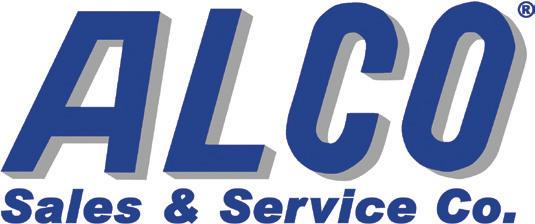



May 2024 | TechNation 47 800.323.4282 alcosales.com GET 10% OFF! ORDER ONLINE AND GET 10% OFF YOUR 1ST WEB ORDER! COUPON CODE: FIRSTORDER Specializing in Replacement Parts for: Beds Stretchers OR/ER Wheelchairs & Casters ALCO Sales has your solution!
• A niche job board for the HTM and imaging communities powered by TechNation.
• 2800+ actively looking biomedical and imaging professionals.
• Completely FREE and confidential registration and application process.
• The fastest growing HTM talent network in the country.
• 350+ open opportunities throughout the United States.
• A variety of posting options ranging from single-job postings to 12-month unlimited memberships.

htmjobs@mdpublishing.com for posting inquiries
htmjobs.com to register today

YOUR DREAM JOB AWAITS HTMJOBS IS THE FUTURE HTMJOBS IS THE FUTURE HTMJOBS IS THE FUTURE NICHE JOB BOARDS **HELP WANTED**
HTM WEEK contest
MAY 19-25 2024
TechNation celebrates HTM professionals every day, but the magazine wants to do something special for HTM Week! Each weekday during HTM Week one lucky biomed will win a $100 gift card.
Scan this QR Code and fill out the form to enter for a chance to win. Entries accepted through the end of HTM Week.
Each day a winner will be announced on social media so follow TechNation on Facebook and LinkedIn to see if you win.
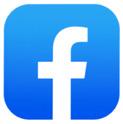



$100 GIFT CARD ( 1 PER DAY )


SPONSORED BY: hmark.com
FOCUSED ON THE FUTURE
IMAGING SERVICE CAREER PATH
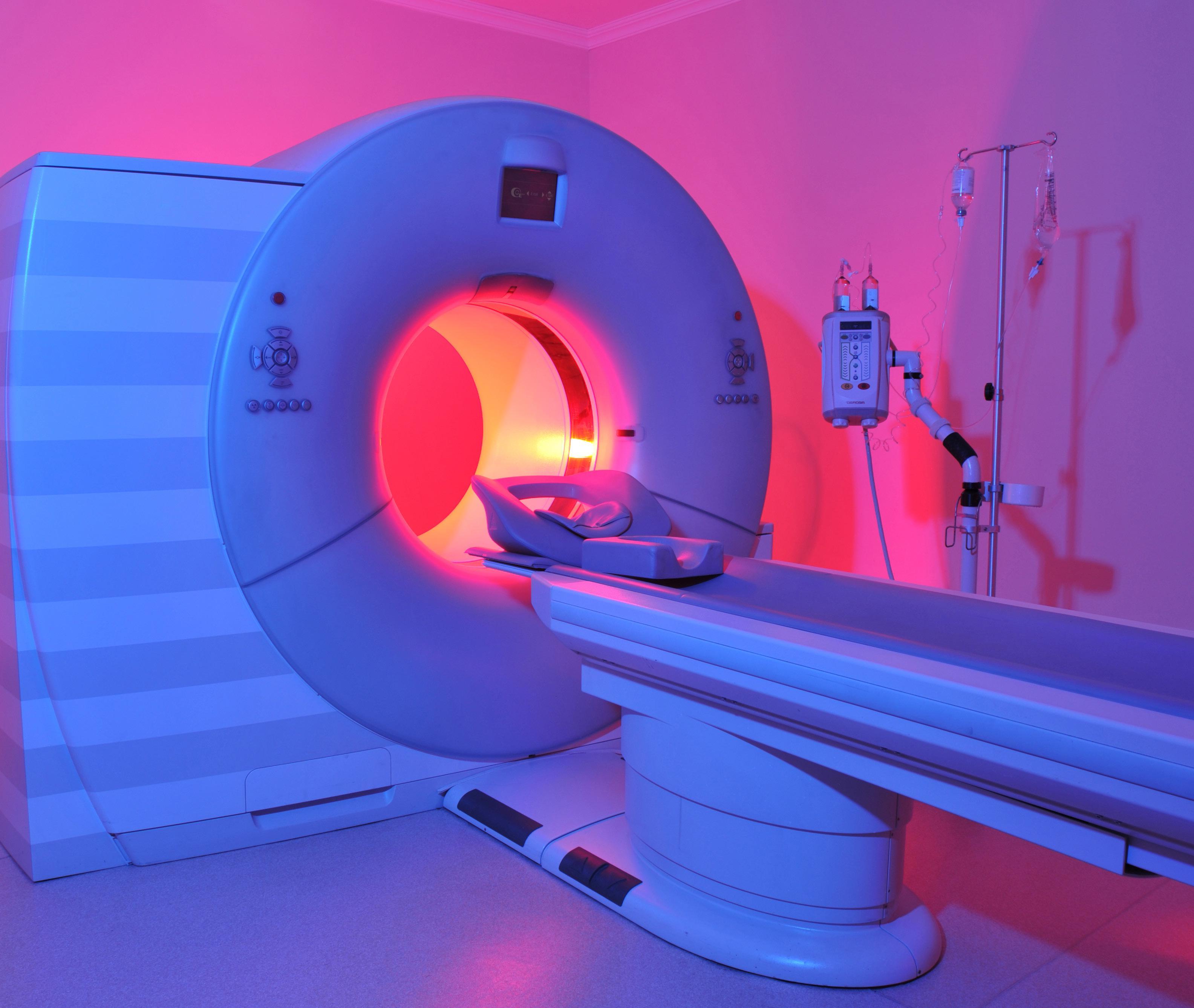
COVER STORY
50 TechNation | May 2024
BY K. RICHARD DOUGLAS
Acareer in HTM offers many options and specializations. There is IT/IS hybrid, lab, OR, OEM field service, ISO, robotic systems, CMSS, purchasing, management and many others. Some may even transition to another department within the hospital such as healthcare facilities management (HFM). Biomeds attend to every aspect of the medical equipment life cycle.
And, of course, continuing on as a general biomed can offer a rewarding career. The potential for choosing a specialty area as a career growth path makes HTM all the more inviting. A biomed can decide on an area that they find attractive, while taking advantage of existing knowledge as a foundation.
In most cases, these ancillary vocational paths require additional specialized training to ensure competency. This training can come from dedicated third-party training providers, vocational or technical programs at community colleges and universities, in-house or OEM training or via a mentorship.
Moving within the field remains a personal career decision. Many who have made that transition have found specialization rewarding.
One popular career path that biomeds choose is to specialize in imaging service. Imaging is medicine’s most important diagnostic tool for many medical conditions. Imaging’s importance within health care is immeasurable.
Wilhelm Conrad Roentgen’s discovery of X-rays in 1895 was accidental. Roentgen won the Nobel Prize in physics in 1901 and his discovery was being used by physicians in the U.S. and Europe within a year. Today, it is hard to imagine that doctors would still be forced to cut people open in lieu of just looking through tissue.
X-ray (radiography) was just the beginning as imaging modalities were added to enhance and improve 2D images and provide 3D images. There are several imaging modalities today; each used for specific types of exams. An X-ray remains the quickest and most convenient. An X-ray image can be available right away. It can be achieved in a dedicated room or using a C-arm. A downside of X-ray is that it does not provide as much soft tissue detail as some of the other imaging modalities.
Imaging modalities, comprised of X-ray (including computed tomography and fluoroscopy), magnetic resonance imaging (MRI), ultrasound and nuclear
medicine (including positron emission tomography [PET]) all provide clinicians with a valuable view into the human body.
Radiology is useful for looking into the torso, the extremities and for mammography. Nuclear medicine helps visualize thyroid and gallbladder uptake, bone scans, and enables PET-CT and cardiac SPECT.
CT allows the radiology technologist to visualize the spine, head abdomen, chest and pelvis. MRI provides a good visualization of the liver, spine, extremities, brain and pelvis. Ultrasound can be used when examining the thyroid, breasts, liver, gallbladder, kidneys, pediatric head and vascular, such as the carotid arteries. There are other less common exams that utilize these modalities.
For many biomeds who work around imaging equipment, the fascination of peering into the human body is an incredible marvel and working with this technology is exciting and rewarding.
As a career-progression step and a move toward specialization, many biomeds transition into imaging service.
TechNation heard from several biomeds who made the decision to transition into an imaging career path. Their experience could be helpful to other biomeds thinking of pursuing this career path. These are their stories.
PLANNED OR OPPORTUNITY
Some biomeds plan to enter imaging and others happen into it when an opportunity presents itself. There is often a learning curve, although many biomeds have an existing foundation of knowledge that allows them to make the move. There are also dedicated training programs and certifications that build upon a biomed’s skills and knowledge.
“Back in around 1998, while working in my first in-house position at Bay Harbor Hospital in Harbor City, California, a chance meeting with an X-ray FE I met in the parking lot going to and from the hospital to work on a room said, ‘I am here to work on the X-ray machine that uses invisible X-rays.’ (paraphrased). To someone who grew up watching ‘Battlestar Galactica,’ ‘Star Trek’ and ‘Star Wars,’ this was the coolest thing I had ever heard of. I was a member of CMIA at that time, and a brief time later when DITEC offered a one-day X-ray course that included a certificate, I jumped at the opportunity and it was given by none other than the legend (I didn’t know at the time) himself Manny Roman,” says Timothy Hooks, CHTM-E, CRES-E, CBET-E, LSS, emeritus certified HTM consultant.
Hooks says that he continued in his current occupation as a biomed, becoming a CBET – which did include some imaging on the exam – for many more
May 2024 | TechNation 51
years and set a goal to become a CRES to break into the industry when he had enough experience to sit for the exam.
“I really liked the DITEC ad that was placed in the trade magazines back then that showed an image with lots on infusion pumps with a caption stating your career started here, then in another image in the same ad, were ventilators and anesthesia machines with a caption that read; hard work and determination got you here, and then a third and final image displaying various imaging devices with the caption that read; Are you ready for the next level?” Hooks says.
He says that he took every opportunity to talk to the imaging guys who came to work on the equipment from the OEM/third parties, as well as the hospital-based in-house imaging specialists.
“When they walked down the hall, or worked on the machines, I was asking anything and everything I could to learn everything I could as the Internet was not what it is today. I noticed, when I went to interviews and explained I had hands-on experience, I was not taken seriously. I was labeled a biomed with just some minimum hands-on experience. I knew I needed something to show I had the experience and the knowledge,” Hooks says.
He says that he called AAMI’s ICC (now the ACI) and asked if they had any recommendations for preparing for the CRES exam, and they referred him to RSTI. He purchased the RSTI CRES self-study program, as it was known back then.
“I also purchased various other books, that I found out later, were textbooks at TSTC’s imaging program. Once I got enough hands-on experience doing things like collimator bulb replacements and other remedial service tasks, and I had met the minimum requirements for the CRES exam, I took the exam and passed it,” Hooks says.
It was an open imaging position that prompted another biomed to make the change.
“My medical device repair career began in 2013 after earning a two-year associate degree in biomedical engineering equipment technology (BMET) and

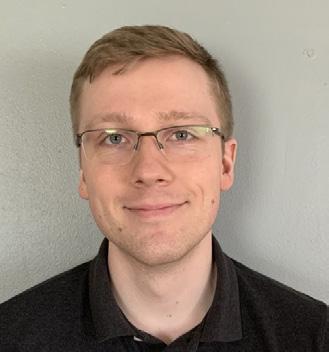
completing a summer-long internship in Pittsburgh, Pennsylvania,” says Jared Arienzo, a radiology equipment specialist with UPMC Health System in Pittsburgh.
“After getting into the field, I knew this field was the place for me. I worked as a biomed for five years in Pittsburgh where I learned so much about equipment and how necessary communication skills are in this industry,” Arienzo says.
He says that he was then approached to get trained on radiology equipment/portable X-ray equipment, as there was a vacancy.
“I agreed and started down this new path of radiology equipment repair. What led me to this decision is that I knew deep down that radiology was ultimately where I wanted to end up; I was excited, to say the least, to be given the opportunity. This meant several OEM service schools to get trained up with plenty of on-the-job learning from very knowledgeable sources in my hospital,” he adds.
Arienzo says that he worked as an in-house X-ray repair technician for about three and a half years.
“The job could be demanding, but it was rewarding at the same time. Patient safety and earning trust of the X-ray department staff was my immediate goal,” Arienzo says.
One benefit of moving into imaging is that with the various modalities, and the special skill sets required for each one, a move into imaging can mean additional career progressions.
“After these three and a half years passed, I was asked to shift toward computed tomography (CT) modality. Again, I had several more OEM training courses to attend. I maintain and repair CT scanners in general CT department, an operating room, emergency room and in radiation oncology areas where the scanner is used for patient treatment planning,” Arienzo says.
He says that his general X-ray experience helped him transfer into his current CT role because he better understood the theory, terminology and demands of radiology departments.
“I am also lucky to have guidance from individuals
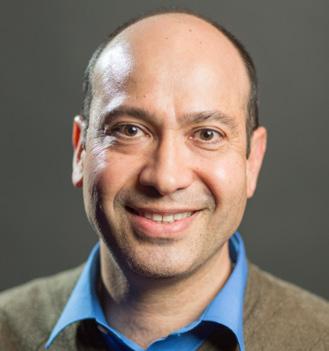

COVER STORY
JARED ARIENZO
UPMC Health System
SPENCER COTTRELL
McLaren Macomb
TIM HOOKS
CHTM-E, CRES-E, CBET-E, LSS
VICTOR ROJO Crothall Healthcare
52 TechNation | May 2024

“The job could be demanding, but it was rewarding at the same time. Patient safety and earning trust of the X-ray department staff was my immediate goal .”
- JARED ARIENZO
with lots of experience from the beginning of my journey. These individuals taught and continue to teach me about radiological devices and about life in general. I try to learn something new every day and use repair opportunities as a way to become better at what I do. I cannot be more happy with the career path I was presented with,” Arienzo adds.
RETIREMENTS PROVIDE OPPORTUNITIES
With the large numbers of retirements within HTM in recent years, there has also been a number of experienced imaging service professionals who have exited the field. This has opened up more opportunities for biomeds.
“I started out as a biomed I and worked my way to a III. While I liked what I did, I really liked when I was able to help with repairing imaging equipment. When our ultrasound guy retired, I took over his role and tried to help out our imaging specialists as much as I could,” says Andrew Fleming, CBET, service specialist in the clinical engineering services department at McLaren Healthcare.
Fleming says that he found that he preferred to work on imaging-related equipment instead of the biomed-related equipment.
“After a few years of that, I was given the chance to become a service specialist instead of an imaging specialist. When I transitioned to this new role, all I had to do was interview for it. I repair linear accelerators now and really enjoy it. The machines take images of the patient (X-ray and CT) to make sure they are positioned correctly before their treatment. I like my current role since I have some imaging repairs/ maintenance and electrical/mechanical related repairs too,” Fleming adds.
BENEFITS FROM BLENDED TRAINING
A biomed’s entry into imaging can sometimes be more integrated into their employer’s career ladder and apprenticeship opportunities can avail a biomed with the required training.
Spencer Cottrell, an imaging service specialist at McLaren Macomb in Michigan started out as a BMET I for McLaren Greater Lansing in May 2021. He was then promoted to BMET II/Imaging Apprentice in February 2023 and a year later, was promoted again to Imaging
Service Specialist.
“I’ve always been interested in imaging, and I was very fortunate McLaren gave me the opportunity to learn more about and work on imaging equipment. The transition from biomed to imaging was busy. As I went about seeing new equipment and shadowing imaging specialists, I still had the biomed side of work maintaining the equipment I knew best and trying to pass that knowledge along to other biomeds. A lot of the experience I gathered as a biomed transferred over into basic imaging such as networking principles and electronics troubleshooting. The outcome now is that I am the primary for various X-ray systems, and I have a large network of imaging specialists to help me as a new guy in the field,” Cottrell says.
Other biomeds have gleaned knowledge from working alongside imaging engineers and that experience led them to make the move into imaging service.
“During my time at Children’s Memorial Hospital with Aramark Healthcare as a BMET I, I initially collaborated closely with imaging engineers, providing essential support in maintaining portables and ultrasound machines,” says Victor Rojo, resident regional manager with Crothall Healthcare at Ann and Robert H. Lurie Children’s Hospital of Chicago.
His interest and knowledge of imaging caught his manager’s attention.
“My then-manager, Kelley Harris, facilitated my enrollment in an imaging program prioritizing comprehensive X-ray training. This program, affiliated with RSTI, proved to be a pivotal moment in my career journey,” Rojo says.
He eventually became an Imaging Specialist I, gathering more experience from working on ultrasound and X-ray units before moving to MR/CT scanners, linear accelerators and mammography machines. He pursued additional training including service instruction regarding Siemens MRI, CT and bone density. The mentorship of hospital physicists also contributed to his career advancement.
The experiences of these biomeds provide a glimpse into the window of opportunity that exists for HTM professionals who have entertained pursuing an imaging service career. It can be a fulfilling career move that offers additional options for growth in the future.
May 2024 | TechNation 53



ACCESSORIES & PARTS SALES
Offering one of the industry's most extensive inventories of accessories and parts with equipment support between 5-10 years.
SERVICE
Contract and non-contract services from CBET/CRES certified engineers that meet or exceed JCAHO requirements.
info@somamedicalparts.com (800) 438-7662
Offering a one-stop shop vendor-neutral platform where customers can purchase different models up to 50% below the cost of new.
RENTAL
Established rental program that allows facilities long-term, short-term, and rent-to-own options.
somamedicalparts.com @Somatechintl

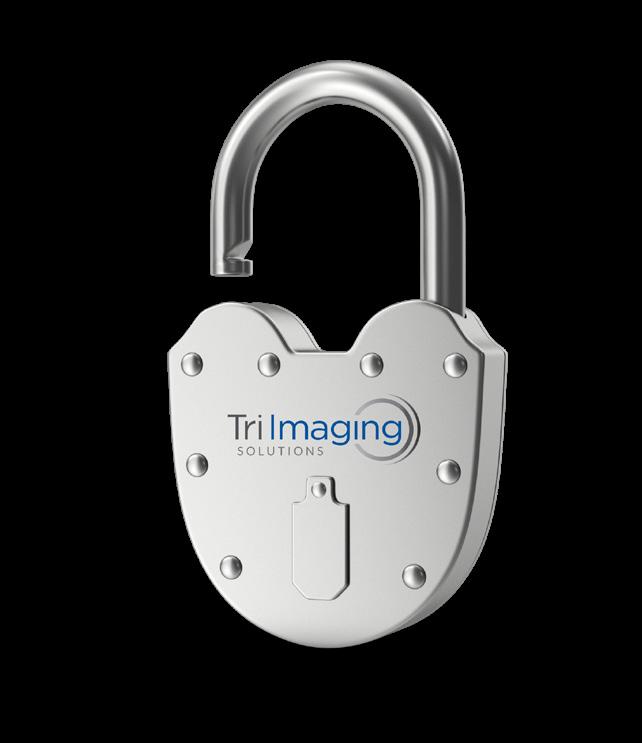
SOLUTIONS Unlock your potential. ISO 13485:2016 certified Become an Imaging Engineer. Start an exciting career as a Medical Imaging Service Engineer with the Apprentice Program at Tri-Imaging! We have a world-class hands on training facility at our facility in Madison, TN. 2 WEEKS BMET to Imaging 1 training 12 WEEK APPRENTICE PROGRAM Visit triimaging.com/training/training-program.html to see our Training Calendar! 855.401.4888 Located in Nashville, TN 2 WEEKS BMET to Imaging 2 training 8 WEEKS Technical Services
ONE-STOP SHOP FOR EQUIPMENT, ACCESSORIES, PARTS, AND SERVICE
54 TechNation | May 2024






CALL US AT 877-789-9903 INTEGRITYBIOMED.COM Unrivaled Spacelabs Sales, Service Repair & Rentals SPACELABS ELO NIHON KOHDEN HEMATOLOGY FIELD SERVICE & REPAIRS 1 YEAR WARRANTY 5 BUSINESS DAY TURNAROUND FREE FEDEX GROUND IN & OUT ISO 9001:2015 CERTIFIED SAVE THE DATE OCTOBER 8-10, 2024 MOHEGAN SUN: CASINO & RESORT UNCASVILLE, CONNECTICUT mdexposhow.com CALL FOR PRESENTERS IS OPEN NOW! May 2024 | TechNation 55



GUIDE TO THE AAMI EXCHANGE 2024
Here’s What you Need to Know
AAMI eXchange is back!
The 2024 edition of the premier healthcare technology management conference will be held in Phoenix, Arizona from June 14-17, 2024. With a schedule packed with speakers, trainings, and expo hall events. AAMI eXchange 2024 is a must-attend event for anyone involved with healthcare technology community
We expect to host over 2,100 health technology professionals, and eXchange24 will feature over 165 exhibitors including leading manufacturers and service providers, over 10 hours of exhibit time including networking events on the expo hall floor, and more than 80 educational sessions and workshops offering content and training tailored to various technical fields and professional areas. Coming on the heels of AAMI eXchange 2023, held in Long Beach, California, AAMI eXchange 2024 is expected to exceed its previous iterations.
AAMI President and CEO Pamela Arora said, “It’s always a joy to bring together members and friends from all corners of the healthcare technology community for our annual AAMI eXchange conference. eXchange 2024 will provide the training, comradery, and spectacle of years past, while equipping us all with the knowledge necessary to drive safe and effective health care toward a brighter future.”
WHO SHOULD ATTEND EXCHANGE24?
If you work directly with medical devices or in a field that is related to health technology, AAMI eXchange is for you. Not only will attending allow you to make face-to-face
connections with peers from across the country, but eXchange24 is a brilliant chance to hear from experts, discover new professional opportunities, and learn from the best. You should attend eXchange24 if you:
• Work in a hands-on capacity with medical devices. This will include biomedical and clinical engineers, biomedical equipment technicians, and more.
• Work in management at healthcare delivery organizations, such as hospitals and other facilities.
• Serve in the U.S. government, especially at agencies like the Department of Defense, in a capacity related to medical care and medical devices.
• Are an expert in cybersecurity, or work in risk management or systems engineering.
• Are involved with standards development through AAMI or organizations like the International Organization for Standardization (ISO).
• Belong to the trade press corps and cover medical devices, sterilization or standards.
WHAT’S AT EXCHANGE24?
Like previous years, eXchange24 will feature a wealth of training, educational sessions and informative keynote sessions alongside the AAMI expo hall where attendees can view the latest and greatest in health technology.
Keynote speakers include Herman McKenzie, director of the Standards Interpretation Group at The Joint Commission (TJC). McKenzie returns to eXchange to present the latest on TJC’s priorities and requirements, address any new requirements, and take questions directly from the audience. Don’t miss it! eXchange24 will also feature a keynote on Saturday, June 15th from comedian and television personality Scott Bloom on “The Power of Laughter, the Language of Business.”
In addition to the keynote sessions, eXchange will feature several concurrent symposiums. These include the Clinical Engineering Symposium presented by the
56 TechNation | May 2024
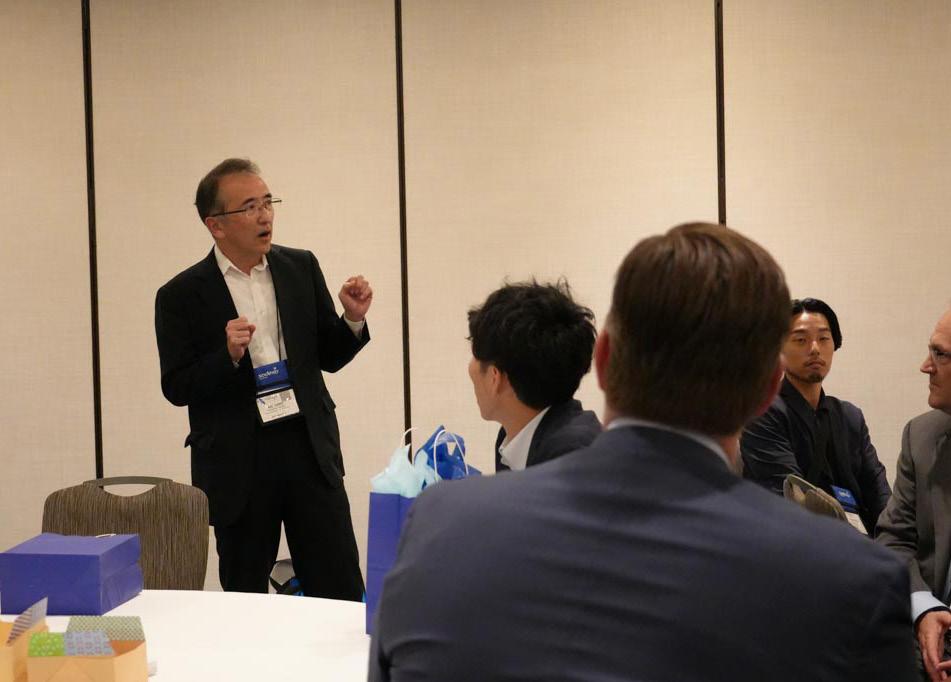
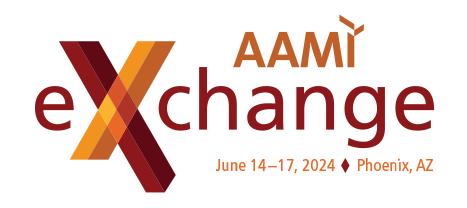

American College of Clinical Engineering and an Industry Symposium presented by Palo Alto Networks.
A special thanks to this year’s sponsors, including Asimily, Crothall Healthcare, GE Healthcare, Ordr, Siemens Healthineers, Sodexo, TRIMEDX, and USCO Biomedical Services. The American College of Clinical Engineering is also acting as a contributing organization at eXchange24.
The eXchange expo hall will feature over 165 exhibitors from the medical device industry, alongside service providers, associations, trade press, and more. Expo hall activities will include an AR/VR Theater, and exhibitor in-booth theaters from the Siemens Healthineers, STERIS Corp, TRIMEDX, Avante Health Solutions, and GE HealthCare. Also, Live @AAMI eXchange, sponsored by GE Healthcare, will be returning this year, and AAMI staff will take the chance to cover the conference and dialog with AAMI Awards winners, eXchange24 attendees, and conference presenters on key issues related to healthcare technology management.
TRAINING AT AAMI EXCHANGE

of AI tools.
• Cybersecurity Track sponsored by Asimily: The Cybersecurity Track features experts like Jeff Hooper, Ph.D., of the Children’s National Medical Center and Priyanka Upendra of Asimily on a host of issues such as FDA requirements, risk management, and more.
“eXchange24 is a brilliant chance to hear from experts, discover new professional opportunities, and learn from the best ”
Training at eXchange24 will cover a number of technical areas and is divided into several distinct tracks.
• Iot and AI Interoperability Track, sponsored by Ordr: This track will feature experts like the Mayo Clinic’s Kurt Griggs and Axel Wirth of Medcrypt, Inc., on the new threats and challenges that medical devices face due to increased interconnectivity and the implementation
• Patient Safety Track: Taught by experts like ECRI’s Erin Sparnon and researchers from the University of Massachusetts Amherst, this track will address issues like AI in relation to health equity, human factors, and new tools like smart pumps.
• Professional Development Track: This track will feature experts such as AAMI board member Heidi Horn, and individual sessions will address management best practices, dealing with career obstacles, job searching, and building leadership skills.
• Sterilization Track: The Sterilization Track is taught by experts such as Nupur Jain of Intuitive and Samuel Tobin of Nemours Children’s Health, and will include sessions on borescope inspections, cleaning robotic surgical instruments and more.
• Home Health Track: This track features experts from groups like the MITRE Corporation and the Mayo Clinic and will focus on issues such as cybersecurity and the inpatient digital experience.
• Equipment Management Track: This track will feature experts such as Russell Lang of Agiliti, Brian McLaughlin of Massachusetts General Hospital, and will address medical equipment planning, real-time location

Phoenix
May 2024 | TechNation 57
Convention Center
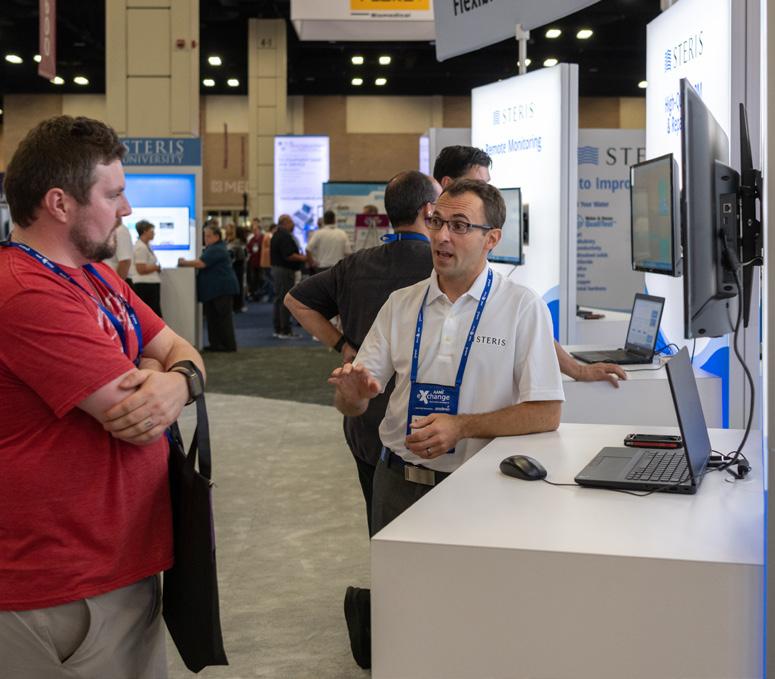

services, service contracts, and capital planning.
• VR/AR Track: This track will feature experts such as Richard Ludwig and Matthew Kwiatkowski of GE Healthcare, and will include sessions on video training in HTM, augmented reality surgical navigation, and more.
• Regulatory Track: The Regulatory Track will feature speakers such as Scott Trevino of TRIMEDX, Binseng Wang of Sodexo, and others on regulatory compliance and the tradeoffs of regulating medical device sorting. Further, eXchange24 will feature the return of last year’s technical trainings. The training sessions are hands-on and geared towards biomedical technicians. Technical trainings will include:
• Virtual-reality-enabled training for portable X-Ray devices
• Metrology
• Defibrillators
• X-Ray Tube Handling
• Diagnostic ultrasound
• Picture archiving and communication systems (PACS) Ultimately the technical trainings are designed so that BMETs can build their resume by learning from AAMI experts and earning CEU credits.


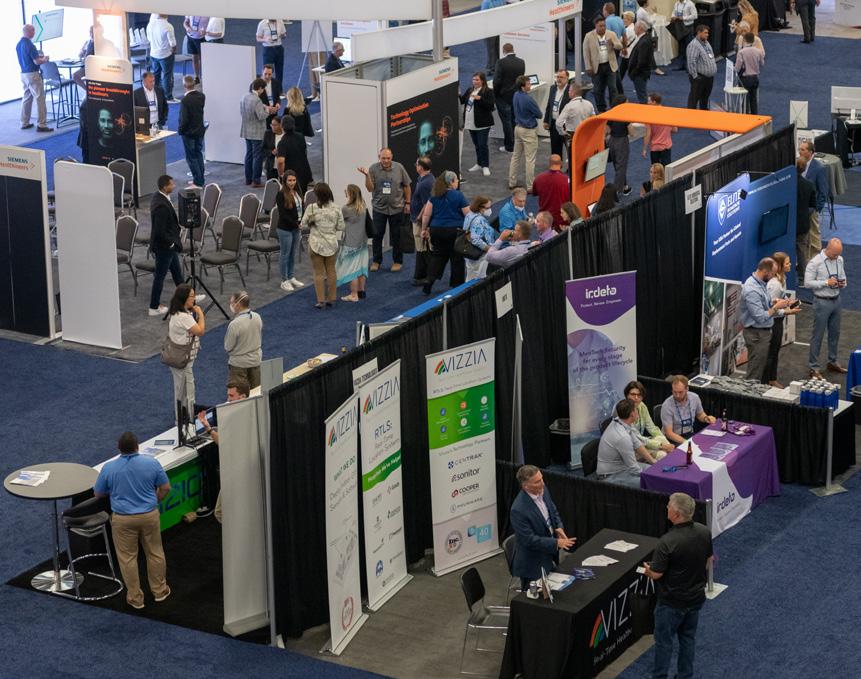
NETWORKING AND SOCIAL EVENTS
But AAMI eXchange isn’t just about business! eXchange24 will feature multiple opportunities for attendees to relax and network. On Friday, June 14, the expo hall will open with a welcome reception, and Crothall Healthcare has also sponsored a happy hour on the expo floor on Saturday, June 15.
This year’s edition of the annual AAMI Party will be held at The Duce, a bar and restaurant just a short walk from the convention center, and will feature music, games, food, and drinks. The closing reception will be held at three connected venues named Ghost Donkey, Cham Pang Lanes, and Palma.
Last, after rave reviews at last year’s eXchange, the AAMI Golf Tournament is making a reappearance. This year’s edition of the tournament will be held at the Legacy Golf Club in Phoenix. There are only 72 spots available for this friendly, four-person scramble style tournament, so register early if you’re interested.
In short, AAMI eXchange24 is set to be an excellent opportunity for training, learning, and connecting with HTM professionals in your niche or further afield. Questions about registration, the expo hall, or other issues? Contact events@aami.org.


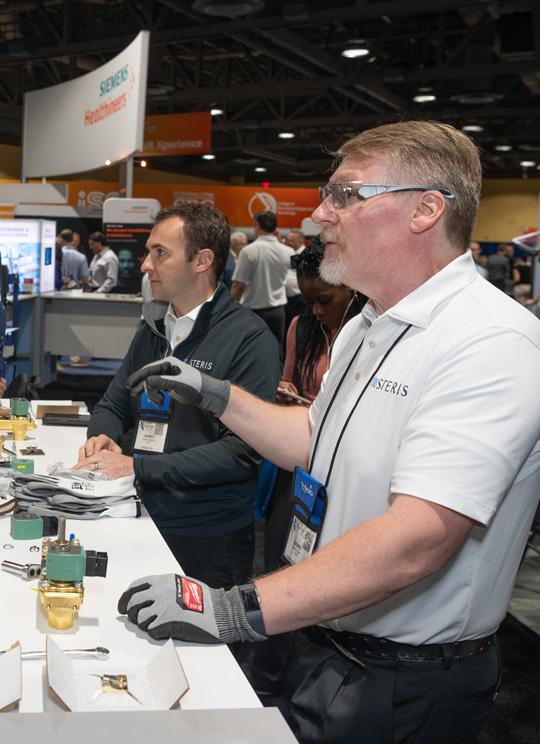
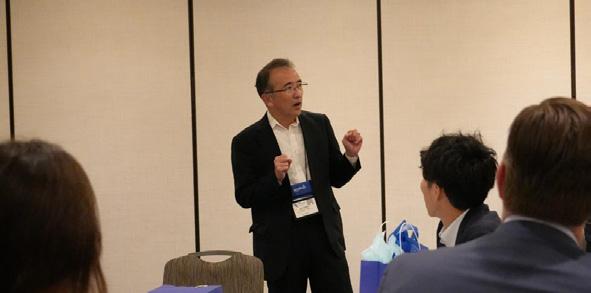
58 TechNation | May 2024
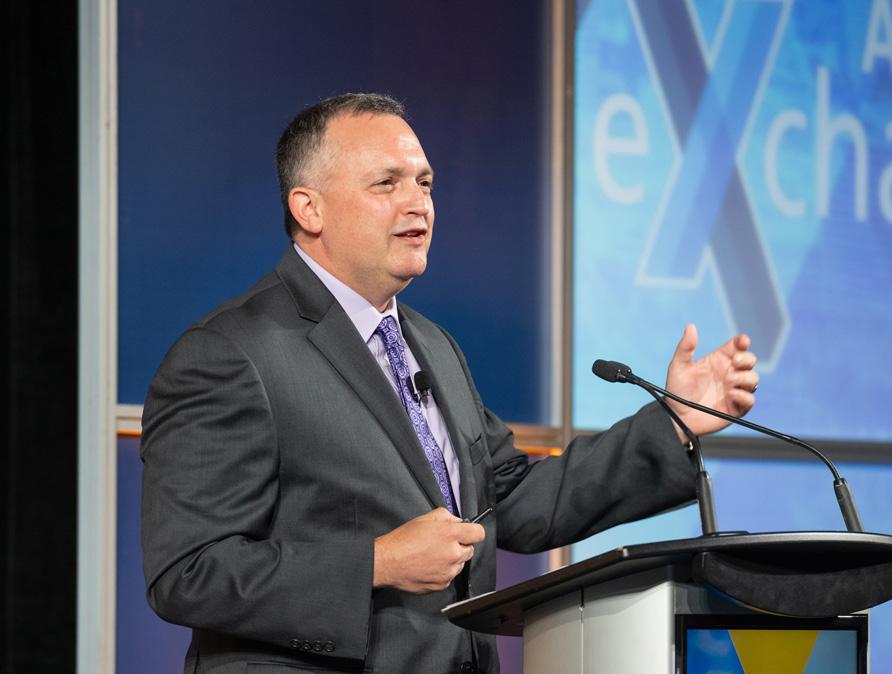
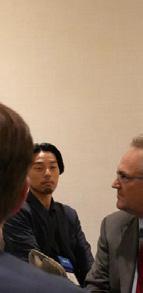


SCHEDULE
WEDNESDAY, JUNE 12
1:00 PM - 5:00 PM — Exhibitor Set-up (by appointment only, for booths 600 sq. ft. or larger ONLY)
THURSDAY, JUNE 13
8:00 AM - 4:30 PM — Set-up for all Exhibitors
8:00 AM - 5:30 PM — Registration Open
FRIDAY, JUNE 14
7:30 AM - 7:00 PM — Registration Open
7:30 AM - 2:00 PM — 2nd Annual Golf Tournament (buses to depart at 6:00am from the Sheraton Hotel)
8:00 AM - 12:00 PM — Set-up for all Exhibitors
5:30 PM - 7:00 PM — Opening Reception in the Exhibit Hall
SATURDAY, JUNE 15
6:30 AM - 6:00 PM — Registration Open
7:15 AM - 10:15 AM — Concurrent Education Tracks Sessions
7:15 AM - 10:15 AM — Clinical Engineering Symposium
7:30 AM - 11:00 AM — AAMI’s Career Center
10:30 AM - 12:00 PM — Keynote Speaker - Scott Bloom presents “The Power of Laughter, the Language of Business” & Awards Presentations Part I
12:00 PM - 1:00 PM — Lunch in the Exhibit Hall
12:00 PM - 5:00 PM — Exhibit Hall Open
12:00 PM - 5:00 PM — Exhibitor In-Booth Theaters, Exhibitor Product Showcases, and AR/VR Theater in the Exhibit Hall
3:30 PM - 4:00 PM — AAMI’s Annual Business Meeting
4:00 PM - 5:00 PM — Happy Hour in the Exhibit Hall
5:00 PM - 6:15 PM — Industry Symposium
6:00 PM - 8:00 PM — AAMI PARTY! @ The Duce
SUNDAY, JUNE 16
7:30 AM - 6:00 PM — Registration Open
7:30 AM - 11:00 AM — AAMI’s Career Center
8:00 AM - 10:15 AM — Concurrent Education Tracks/Sessions
10:30 AM - 12:00 PM — Keynote Speaker & Awards Presentations Part II
12:00 PM - 1:00 PM — Lunch in the Expo Hall
12:00 PM - 4:00 PM — Expo Hall Open
12:00 PM - 4:00 PM — Exhibitor In-Booth Theaters, Exhibitor Product Showcases, and AR/VR Theater in the Expo Hall
4:15 PM - 5:15 PM — Concurrent Education Tracks/Sessions
6:00 PM - 8:00 PM — AAMI’s Closing Reception @ Palma/Champ Pang Lanes/Ghost Donkey
MONDAY, JUNE 17
7:30 AM - 12:00 PM — Registration Open
8:00 AM - 10:15 AM — Concurrent Education Tracks/Sessions
10:30 AM - 12:00 PM — Keynote Speaker & Awards Presentations Part III
*as of February 27, 2024 - schedule is subject to change







Alco Sales and Service Co. alcosales.com
Booth #1030


AAMI EXHIBITOR SPOTLIGHT
#431

#722
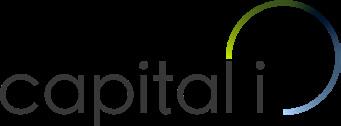

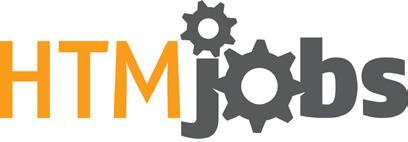

Booth #310

Booth #928
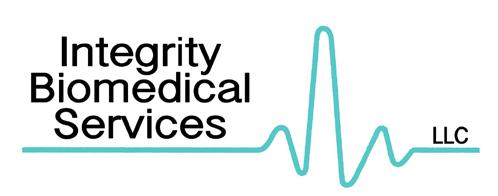



College of Biomedical Equipment Technology cbet.edu
ecri.org
Biomedical Solutions elitebiomedicalsolutions.com
EQ2, LLC eq2llc.com
FSI fsiservices.com Booth #717 Healthmark Industries hmark.com Booth #630
IMT Analytics imtanalytics.com
Innovatus Imaging innovatusimaging.com
Integrity Biomedical Services, LLC integritybiomed.com Booth
Maull Biomedical Training, LLC maullbiomedical.com
Be sure to visit these exhibitors! 60 TechNation | May 2024
Avante Health Solutions avantehs.com Booth
BC Group International, Inc. bcgroupintl.com Booth
Capital i capitali.us Booth #825
Booth #843 ECRI Institute
Booth #5111 Elite
Booth #733
Booth #737
HTM jobs htmjobs.com Booth #323
#629
Booth #944
SPOTLIGHT





MedWrench medwrench.com
Booth #323
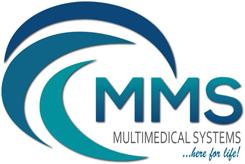
MultiMedical Systems multimedicalsystems.com
Booth #213

PM Biomedical pmbiomedical.com
Booth #329
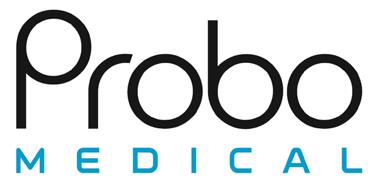
Probo Medical probomedical.com
Booth #343

Pronk Technologies, Inc. pronktech.com
Booth #422
QRS Solutions/ Datrend Systems Inc qrs-solutions.com
Booth #943

Radcal radcal.com
Booth #823

RSTI/Radiological Service Training Institute rsti-training.com
Booth #1007

RTI Group North America rtigroup.com
Booth #333
Southeastern Biomedical Associates, Inc. sebiomedical.com
Booth #915
TechNation 1technation.com
Booth #323

Tenacore Holdings, Inc. tenacore.com
Booth #316 SOLUTIONS
Tri-Imaging Solutions triimaging.com
Booth #349

TruAsset, LLC truasset.com
Booth #614
USOC Medical usocmedical.com
Booth #523
MEDICAL EQUIPMENT SALES AND SERVICE
Advancing the Biomedical
Professional
/HTM
May 2024 | TechNation 61

JOIN THE HUNT
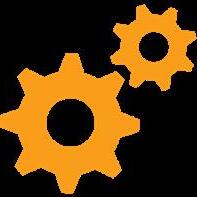

Prepare
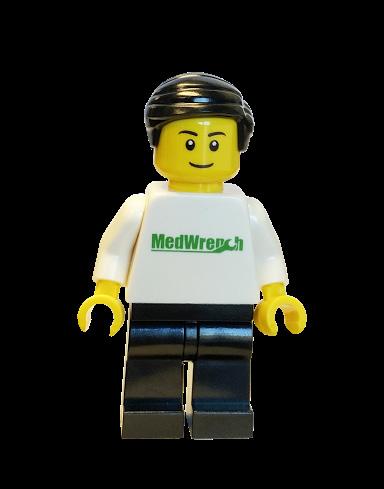



scan QR code for details on how to play
to seek out top MedWrench advertisers at the AAMI eXchange for a chance to win over $2,400 in prizes!
medwrench.com AAMI eXchange June 14–17, 2024 Phoenix, AZ

Check out the Guide to the VIEW DESKTOP VERSION AT 1TECHNATION.COM/TECHNATIONS-GUIDE-TO-THE-2024-AAMI-EXCHANGE DIGITAL SUPPLEMENT SCAN TO READ THE SPECIAL DIGITAL SUPPLEMENT!
TECHNATI N P LL
What is your favorite spring sport?
BASEBALL
Connect with TechNation on LinkedIn at linkedin.com/company/iamtechnation to participate in our next poll: What is something you HAVE to have on your work station?

– a meter and a milestone.
Mako is a cutting-edge solution that revolutionizes your way of work with plug-and-play simplicity. It’s our most efficient and versatile meter, delivering the highest practical accuracy experienced with the industry’s broadest application range. Beyond the hills of spreadsheets, Ocean NextTM software awaits. Ocean NextTM gathers data from Mako in real-time so you can truly excel. Immerse yourself in a world of streamlined routines and complete traceability, Ocean NextTM.
55%
5%
18% GOLF 23% 64 TechNation | May 2024 Mako
RTI Group North America • sales.us@rtigroup.com 1 800-222-7537 • www.rtigroup.com
PICKLEBALL
TENNIS
Read more New Product – Book a demo now! Efficiency Accuracy Versatility
BULLETIN BOARD
An online resource where medical equipment professionals can find all the information needed to help them be more successful! The easy to navigate Bulletin Board gives you access to informative blogs, expos and events, continuing education opportunities, and a job board. Visit MedWrench.com/BulletinBoard to find out more about this resource. Follow MedWrench on facebook.com/medwrench & linkedin.com/company/medwrench


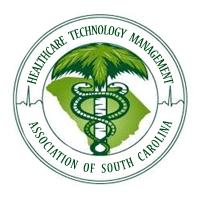
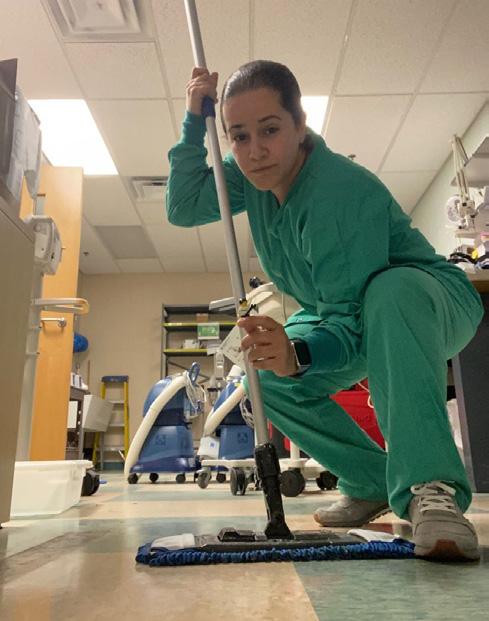

MAY 13 - 17, 2024 CONTRAST INJECTOR SERVICE TRAINING MAY 20-24, 2024 PACS ENGINEERS & CERTIFICATIONADMINISTRATORS(PHASE 1) VISIT MEDWRENCH.COM TO LEARN ABOUT OUR HTM WEEK CONTEST UPCOMING EXPOS & EVENTS Join TechNation for a HTM Mixer in Indy! MAY 2-3, 2024 “Happy Friday!” “#BenCandI,putondifferent shoesandwantedtohelpoutinthe biomedshopbygrabbingourbroom andmop,andtryingsomethingnew that our EVS team does.” - Rana Helou UPCOMING EDUCATION Save the date for HTMA - SC! MAY 9-10, 2024


66 TechNation | May 2024
CAREER CENTER
Tips to Those Worried About New Boss
BY KATHLEEN FURORE
You’re doing great at your job, you love your boss and your entire team. Out of the blue, your boss announces they are staying with the company but moving into a new position. How can someone in that situation overcome the fear of a new supervisor coming in and possibly changing a formula that’s working quite well?
First, it is important to acknowledge that your fears are not totally unfounded.
“The transition to a new supervisor, especially when you’ve had a great working relationship with your current boss, can be daunting,” says HR strategist Miriam Groom, founder and CEO of Mindful Career and the recruitment agency Groom & Associates. “However, it’s an opportunity for growth and to demonstrate your adaptability and professionalism.”
Groom and other career pros offer tips on how to navigate the situation successfully.
Consider what you are most worried about, then challenge your fears. Diane Rosen, a workplace expert and a principal at Compass Consultants, suggests asking yourself two questions: What is the worst that can happen? And what is the best?
Keep an open mind. Remember that every leader brings a unique set of strengths and perspectives, Groom stresses. Rosen agrees and says that approach allows for the possibility that the change could lead to positive outcomes.
Engage proactively. That advice comes from Jason Mueller, the marketing manager at A-1 Auto Transport, who has navigated similar transitions at the company. “Take the initiative to meet with the new supervisor. Discuss your team’s current projects, achievements, and how you’ve contributed to the
company’s success,” Mueller advises, noting that doing so gives you the opportunity to understand their goals and how you can support them.
Express your commitment to the team’s success.
You can do that by sharing insights about what has worked well in the past, and by letting the new boss know you’re open to new ideas and approaches, Groom says. “Building a positive relationship based on mutual respect and open communication can help ease the transition and might even lead to new opportunities for innovation and improvement,” she notes.
Meet with the outgoing leader, the team, and the incoming supervisor.
“Understanding the reasons behind the change and the new leader’s vision can alleviate fears,” Mueller explains.
Think about how you have weathered other unexpected changes. Considering lessons learned can help boost your confidence that this, too, will work out, Rosen says.
Remember that change is often the only constant in professional environments.
“Adapting to it can not only ease your fears but also position you as a valuable and resilient team member,” Groom says.

Kathleen Furore is a Chicago-based writer and editor who has covered personal finance and other business-related topics for a variety of trade and consumer publications. You can email her your career questions at kfurore@yahoo.com.
©2024 Tribune Content Agency, LLC.
EXPERT ADVICE May 2024 | TechNation 67

20/20 IMAGING INSIGHTS
Parallels Between Imaging Department Accreditation and ISO 13485
BY MATT TOMORY
Th e importance of being ISO 13485:2016 certified has become a much more frequent topic of discussion as a result of the Right to Repair movement. Organizations that commit to the rigorous and costly process are signaling their commitment to operate at the highest possible quality level.
In the clinical environment within medical imaging, there is a standard similar to that of ISO. Radiology, cardiology and other departments which utilize imaging within a hospital or clinic have the option of becoming accredited for radiology practices and quality assurance systems by the American College of Radiology (ACR), the American Institute of Ultrasound in Medicine (AIUM), and the Intersocietal Accreditation Commission (IAC).
Accreditation requires demonstrating adherence to established standards for image quality testing, equipment maintenance, quality systems, and that your medical personnel meet standards for interpretation of diagnostic examinations. It also shows the department has audited its strengths and weaknesses and has taken any needed corrective actions to streamline efficiencies and operations to better serve patients. You may be unaware, but a portion of the responsibility for complying with these standards is dependent on HTM professionals.
Does ISO 13485: 2016 and accreditation really matter?
More than you think. Patients are highly informed consumers and review performance studies on hospitals
and caregivers provided by reporting organizations such as Health Grades and other sites, These reviews allow consumers to compare hospitals on many factors such as patient experience, timely and effective care, overall value, AND the use of medical imaging. Hospitals that don’t follow best practices for imaging services are often flagged as conducting unnecessary services or missing vital diagnoses. Protecting reputations is just one of the important outcomes of accreditation for radiology departments, in addition to achieving greater efficiencies, operations, and potentially higher reimbursements.
HTM professionals play a vital role in helping to achieve and maintain accreditation, covering quality assurance and accountability for several processes and outcomes, including:
• Providing full-service histories, which document not only PMs and repairs, but also other activities associated with a device.
• Performing frequent image quality assessments in much greater detail than the OEM.
• Assessing and documenting performance on connected devices such as ultrasound probes, MRI coils and hard copy devices.
• Acquiring and assembling quality control data for the department applying for accreditation.
Even if your imaging departments are not currently accredited, aligning your teams’ activities with accreditation requirements can help avoid costly mistakes, downtime, and other issues that can impact clinicians, diagnostic efficiencies, and patient satisfaction, all of which can impact your hospitals’ quality ratings and potential insurance reimbursements.
EXPERT ADVICE
68 TechNation | May 2024
An additional step you can take to protect your team and patients is to always work with repair providers that have proven their commitment to quality by becoming and maintaining ISO 13485:2016 certification. Companies maintaining this level of certification provide many added values that non-certified providers may not. The most important factor is confidence.


• Confidence that your medical device repairs are being performed according to well-defined and repeatable processes, that their partners and suppliers are routinely reviewed and qualified, that a system of continuous quality improvement based upon risk analysis is in-place, and that the organization is open to external bodies assessing their entire operations.
• Assurance that all aspects of the device are addressed during repair to ensure longevity and safe and effective performance.
• Knowledge that shortcuts are not being taken during the repair process, which, although may be cheaper and allow the device to function, could lead to premature or latent failures or more importantly compromised safety or performance.
Innovatus Imaging has developed webinar-based content that introduces HTM teams to the elements and requirements of accreditation by the industry’s leading accrediting boards. We present the proper techniques of assessing image testing using a tissue mimicking phantom and how to perform the tests required by the ACR, AIUM and IAC. The module provides the soft skills to complement the hard technical skills possessed by ultrasound service personnel. If you are interested in the session or would like more information about certification from ACR, AIUM, IAC, and ISO 13485:2016, email us at training@innovatusimaging.com.
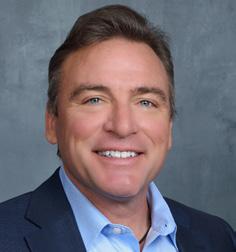 Matt Tomory, Innovatus Imaging Vice President of Sales and Marketing
Matt Tomory, Innovatus Imaging Vice President of Sales and Marketing

SPONSORED CONTENT Diag nos t ic Solut ion s i s a c u s tome r se r v ice ba se d pa r t s pr ov ide r t hat s pe c ia l i ze s i n a l l i mag i ng mod a l it ie s a nd manufacturers. Created to offer hos pita l s a nd I SO’s a cos t ef fe c t i ve a nd t i me sav i ng solut ion for or de r i ng i mag i ng r e place me nt pa r t s , e qu ipme nt move s , u lt r a sou nd pr obe r e pa i r a nd on-site se r v ice. Contac t u s today, we a re conf ident you w i l l see u s a s T H E Pa r t s Solut ion! diagnostic-solutions.com 330.296.9729 LE N DING A H E LP ING HAN D AT E V E RY S T E P. May 2024 | TechNation 69
NETWORKING NOTES
ACL/Firewall troubleshooting
BY GARRETT SEELEY
In continuing with the discussion on troubleshooting networks, one of the more confusing troubleshooting events for a biomed technician is the ACL or firewall caused issues. These can appear to be other issues, but ultimately are things related to the permissions to use a network; either set on the network or host computer. The most important aspect to understand about ACL or firewall issues is that the problems can appear to be in any of the TCP/IP OSI model layers. The problems can range from a layer 1 issue, for example, a hardware port is disabled on a switch, to a layer 4 software port incorrectly set. Therefore, it is important to have a firm grasp on the foundational material that we covered in previous Network Notes articles. In this article, we will cover issues found when dealing with switch level and firewall port securities. We will cover specific scenarios to illustrate the concepts in ACL troubleshooting.
SCENARIO #1 – NETWORK SECURITY ENFORCED: APPEARS AS IF THE PORT IS DEAD
A side effect of port level security is that a functional switch may have a security setting that disables the port. This is becoming less in vogue as it alerts the unit that tripped the security that the switch UTM is on to their behavior. Modern systems use a more isolative approach to security, which we can cover later in this article. However, older switch security may become triggered and simply disable the port access. In other words, it is possible to have a correct cable, and functional device, and a functional switch, yet no link indication on the switch. The cable and device will test fine, and the switch will be functional. This may happen if the switch observed a fake MAC address. If properly configured, the hardware port (the physical plug on the switch) may be disabled for security reasons. In this case, contact a network administrator or an informatics team member to reactivate the port. Keep in mind they may want to know why the port became disabled. This is the point of the security setting, to put a pause in activity so that a Network Administrator
can follow up on why the security system triggered.
SCENARIO #2 – ICMP BLOCKING: PING IS NOT WORKING, BUT INTERNET IS
Similarly, it is possible to have access to a network, yet the ping command does not work. A remote machine’s operating system firewall can be told to not respond to anonymous requests. This usually means that the device will not respond to pings or other requests such as tracers yet is still on the network. It is an infuriating setting when troubleshooting, and something to keep in mind. Similarly, a switch can be told to block the ICMP traffic. This functionally will stop the set ports, possibly the entire LAN from responding to a ping. This will happen and the network will still be functional. The switch is just blocking the ping traffic. Keep in mind that this can be set both on a device, and for an entire network. ICMP blocking is a great security measure, but one that can ultimately leave a troubleshooter confused, if not frustrated.
SCENARIO
#3 – MAC FILTERING:
A NEW SYSTEM HAS NO ACCESS BUT SCANNER SAYS THE PORT IS LIVE
Like ICMP blocking, a MAC filter can be used as a security measure. This can result in the switch disabling the hardware port. More likely, this situation will result in a device not having any access, despite having a good link light. When checked by an approved device, the switch port will seem functional. However, when the unapproved device, usually a new device, is added to the network, the switch port stops working. This is because the ACL has to be told which MAC addresses to let access which switches or VLANS. When observed, tell the informatics team to add the new MAC address to the correct VLAN to repair the issue.
SCENARIO #4 – ACL FIREWALL BLOCKING A PORT: PING WORKS, BUT SOFTWARE DOES NOT CONNECT
A slightly more difficult issue is when the ACL or firewall stops a communication because of a software port setting. In this case, ping or other test communications may still work, however, recall that an ACL and firewall see network communications not only as MAC and IP settings, but also as software using specific TCP or UDP ports. This is not like the switch, where it
EXPERT ADVICE
70 TechNation | May 2024
is a physical plug, but also a software port. Recall from the port discussion that there are only 65,535 different softwares that an OS can use to communicate over a network at any given time. These are the numbered software ports. Some ports, such as web, use standard ports. Some things, such as ICMP, do not use ports at all. These may or may not be registered by function in the IANA port registry (Internet Assigned Numbers Authority (www.iana.org) ). Firewalls and ACLs are programmed to look for these ports, and standard messages such as ICMP, and they allow or block these software ports. Rules are set for incoming, called ingress, or outgoing, called egress rules. I cover this because it is important to know that ACL and firewalls see software communicating on a numbered port. These individual software communications can be blocked while other communications are allowed. For example, web traffic on port 80 is usually not encrypted, so it is often blocked by ACLs, whereas port 443 is usually encrypted and therefore it is allowed. Because of this effect, sometimes we can ping a device, but when using a specific software port, like we do in DICOM, the port is not allowed, and the communication fails. This will happen even when the devices are correctly configured and on a functioning network. In this case, review the ACL and
firewall ingress and egress settings. There is software that allows for port scanning of a remote IP, but using such a tool can cause the ACL to set off security settings. Be careful of network security settings at this point, as suggested before, now is a time to get a hold of the informatics team or the network administrator.
There are other possible issues caused by ACLs and firewalls. This is meant to get a discussion moving regarding the thought process of troubleshooting a communication error. Keep in mind that in these issues, a common point is a security setting. That is, after all, what an ACL or firewall means to address. It’s easier to troubleshoot actually consistent malfunctions, but these issues are not always so. It can be frustrating to troubleshoot intermittent problems affecting only specific functions. Look for the consistencies in the issue and ask, “What security setting could cause this?” That often leads to the correct solution. Good luck.
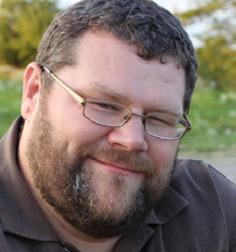
Garrett Seeley, MS, CBET, Biomedical Equipment Support Specialist, VISN 17: VA North Texas Health Care System, Dallas Veterans Affairs Medical Center.

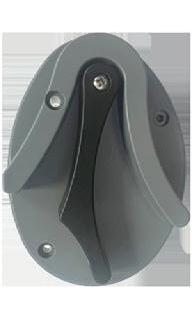

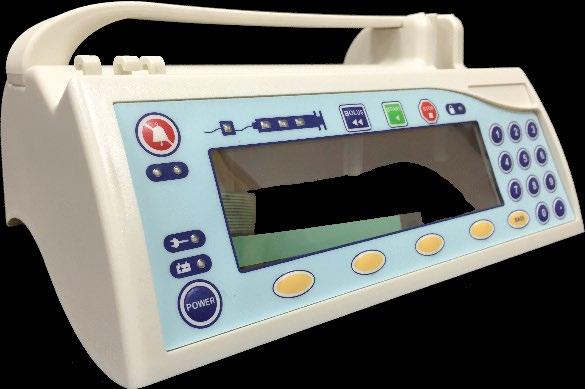

May 2024 | TechNation 71 New! Right Plunger Case Assembly Parts Repairs Refurbished Pumps Extend the Life of Your Medfusion Pumps 888.656.0755 • aivsales@aiv-inc.com The manufacturers listed are the holders of their respective names and/or trademarks, and are not to be taken as an endorsement or affiliation with AIV, Inc. 634B All repairs and refurbishments are performed in our ISO 13485:2016 certified facility in Maryland, USA. AIV prioritizes quality and service, aiming to provide top-notch solutions to better serve your employees and patients.

The Hidden Costs of Hospital Bed Maintenance: A Closer Look
BY WEBB CLARK
In the realm of health care, hospital bed maintenance is often an overlooked yet crucial process that significantly impacts patient care, operational efficiency and budget. As healthcare technology leaders, it’s clear that understanding and addressing the subtleties and hidden costs is key to managing our health care facility efficiently and effectively.
UNDERSTANDING THE COST SUBTLETIES OF BED MAINTENANCE
Patient Satisfaction and Its Financial Implications: The condition of hospital beds directly influences patient safety and satisfaction, which is tied to CMS reimbursements. Beds are equipped with basic and advanced safety features, like side rails, nurse call, inflatable mattresses and bed exit alarms. These components are crucial in preventing patient falls and ensuring a positive patient experience. A hospital noticing a significant rise in patient falls may opt to rent beds that are lower to the ground or require more nursing staff to monitor patients. Either solution comes with hefty costs to the organization.
Infrequent Maintenance Visits and Regulatory Scrutiny: The irregular presence of repair technicians can lead to a cumulation of maintenance issues. To reduce technician time on-site and training requirements, OEMs often train their technicians to prioritize module-level repairs. These types of repairs are needed at times but come with significant costs. A very common and practical example can be understood when a button is worn out or malfunctioning on a footboard or siderail. A trained technician can replace the malfunctioning component, saving the hospital thousands of dollars on this single repair alone. By contrast, the OEM will often replace the entire module, even though only a minor component of the siderail or footboard warranted repair. Those modules are returned to the OEM to be “reconditioned” and resold, further incentivizing the more costly repair.
The Art of Efficient Repair with Skilled Technicians: The consistent presence of proficient technicians is fundamental to a well-run hospital bed maintenance program. If hospitals utilize undertrained technicians there’s a tendency to adopt less efficient methods — replacing parts in the hope that it will fix the issue, a practice that is not only costly but also very time consuming. At face value, bed repairs seem rudimentary enough
for most qualified technicians to try and tackle; or at least perform “first-call.” Ultimately, there’s two problems with this approach. The first being that experience reigns supreme and going down the wormhole of trial and error by ordering various parts until the root issue is resolved takes valuable time away from the technician. It also drains their department of valuable time and money. Secondly, if the technician opts to save time by troubleshooting with the OEM they will likely run into the same scenario as they would with OEM on-site support: “replace the entire module at a much higher cost.”
Let’s consider the common maintenance task of addressing an error code that indicates the need for a software upgrade. If not done properly, the technician might assume there is something wrong with the control board, a pricey $1,500+ component. After ordering it, waiting several days for delivery, and finding time to replace it only to find out that was not the issue. Usually, it’s a few more parts before they realize that the upgrade procedure was not done properly and that a jump lead on the original control board needed to be reconfigured. If the bed is an ICU bed, this delay is noticed leading to complaints and loss of confidence in the hospital’s bed maintenance program. This example showcases common and costly repair sequences often performed by undertrained hospital bed technicians.
Training – A Critical Component in Preventing Damage: The way hospital beds are handled by staff, from nurses to transporters, plays a significant role in their longevity and functionality. Proper training is essential to prevent avoidable damage to the beds and the facility. Hospitals often store unused beds in rooms with small door frames leading to damaged side rails and footboards. Walls and door frames throughout the hospital are damaged by the repeated ramming of 400-pound beds. Finally, facilities managers know how expensive it is to call out to the elevator repair technicians when the elevator doors are knocked off the track or more significantly damaged. Damage to the facility is a rarely mentioned cost of the bed program but can be taken from the hospital’s financial and reputational wallet.
Rental Costs - A Temporary Fix with Long-term Implications: When repair times extend and beds become unavailable, the immediate solution is often to rent beds. However, this is a Band-Aid solution with its own set of costs, impacting the hospital’s budget in the long run. Who is tracking how many rentals are in the hospital and if they are still needed? How long does it take to determine and locate unneeded rental beds? Are
EXPERT ADVICE
72 TechNation | May 2024
you renting from the same company who repairs your beds? Is this a conflict of interest? Rental beds are easily lost in a large hospital system and without proper management can lead to missed preventive maintenance requirements and extended rental periods due to being unable to locate. It’s important that the right team is incentivized to find rental beds and get them out of the system once they’re no longer needed.
Bed Storage – The Burden of Space Constraints
Where are broken beds stored while waiting for repairs? Egress? Storing non-functional beds is a common practice but one that comes with its own set of issues and hidden costs. This storage ties up valuable space, which is a premium in health care settings, and represents a loss in the utility and efficiency of the facility. Poorly stored beds can attract negative attention from leadership and regulatory bodies when broken beds spill into common areas.
Additionally, stored beds are commonly crammed together in rooms not intended for bed storage, constantly being bumped into each other and walls. This movement can lead to significant damage to the beds and even the facility’s infrastructure. Imagine a hospital who recently invested in the latest and greatest hospital beds on the market but without noticing that the new beds were slightly wider than previous models. Unfortunately, the room used to store beds has a narrow entrance causing damage to the siderails of this brand-new investment.
THE UNSEEN PRICE OF IGNORED MATTRESSES – A SLEEPER ISSUE IN HOSPITAL CARE
Integrating a mattress management program into hospital bed maintenance is a critical yet often neglected aspect, carrying hidden costs that significantly impact patient care. The lack of such a program can lead to decreased patient satisfaction, as the comfort provided by a quality mattress is essential for restful sleep and effective healing. Inadequately maintained mattresses also pose serious infection control risks, with damage potentially harboring harmful pathogens leading to hospital-acquired infections. Imagine the situation of when replacement mattresses are purchased but unfortunately, they are larger than they should be. When this occurs, the siderails can cause significant damage to the mattress leading to added costs and increased infection control issues.
The challenges of implementing a mattress management program, such as resource allocation and the need for collaboration across departments, are far outweighed by the benefits. Ignoring these aspects can result in increased health care costs due to extended patient stays and heightened infection risks.
The Importance of Standardized Processes and Simplification: Without effective standard operating procedures (SOPs), repair delays become inevitable, exacerbating the problem of bed availability, bed storage, and affecting patient care efficiency. A bed pushed into a corner with a hastily scribbled “broken” sign attached and forgotten about is common, but it’s more than just a storage issue. It represents a breakdown in communication and process, leading to unnecessary rentals, missed preventive maintenance activities and other operational inefficiencies. Continual and accumulating issues with hospital bed repair
processes can lead to a gradual erosion of confidence among the clinical staff. This perception affects overall morale and impacts patient care.
Moreover, juggling various bed models under different service contracts can create inefficiencies and coverage gaps, complicating the maintenance process. There are significant hidden costs and the likelihood of error associated with administrative burden when managing multiple, high-transaction contracts. Additionally, hospitals run the risk of being susceptible to replacement vs. repair bias when working with the OEM. It’s important to consider how your outsourced support system is incentivized to ensure hidden costs are avoided.
TOWARD A MORE EFFICIENT AND COST-EFFECTIVE APPROACH
In light of these hidden costs, it’s evident that a strategic approach to hospital bed maintenance is not just a matter of financial prudence but also a factor in patient care quality and safety. The focus should be on proactive, efficient maintenance strategies and skilled technicians that reduce costs while enhancing service quality.
ABOUT EMERITUS
At Emeritus, we recognize the intricate challenges of hospital bed maintenance and have reinvented best practices associated with keeping the vital medical devices in optimum working condition.
Our Always On-Site hospital bed repair and maintenance program ensures an outsourced expertise with an ‘in-house’ feel. We recognize the value in nurturing working relationships with your biomedical, nursing, facilities and EVS departments. The ability to respond to bed repair issues as soon as they arise with parts on-hand eliminates downtime. A skilled technician with bed expertise and personal familiarity with your inventory drastically reduces repairs and diminishes the problem of bed storage and excessive rentals altogether.
Administrative burden is alleviated through the simplified Power of One contracting. Having one firm, fixed line item to cover all your costs associated with service and parts eliminates the need to approve dozens of POs throughout the year. It also eliminates the subsequent wait times associated with parts delivery, logistics of service dispatch, as well as endless documentation.
By offering our unique, Always-On-Site hospital bed repair and maintenance program, combined with simplified Power of One contracting, we ensure minimal downtime, reduce repairs, administrative burden, and uphold staff confidence and patient satisfaction.
For more information, contact webb.clark@emerituscs.com or visit emerituscs.com

Webb Clark is a senior sales manager at Emeritus Clinical Solutions.
SPONSORED CONTENT
May 2024 | TechNation 73
CYBERSECURITY Evolution of Cybersecurity in the 510(k) Process: Bridging the Security Gap in Medical Device Regulation
BY CONNOR WALSH
Th e evolution of the 510(k) process regarding cybersecurity reflects a growing recognition of the importance of securing medical devices against potential cyber threats. However, challenges remain and continued efforts are needed to ensure that medical devices are adequately protected against cybersecurity risks.
In December of 2022, President Biden signed into law the Consolidations Appropriations Act which gave FDA additional oversight into medical device cybersecurity. In response to this, the FDA recently amended the 510K approval process to include new sections strictly requiring medical device manufacturers (MDM) answer questions about their product’s cybersecurity. We hope to dive into some of the important changes and to educate healthcare delivery organizations (HDO) on what they can expect from new medical devices that come to market.
Risk identification and management is extremely important in the world of medical device cybersecurity. How would one apply appropriate mitigations if risks had not been identified or threats modeled? The FDA has done a great job in this space by now requesting the MDMs provide a risk management report, a threat model that addresses end-to-end elements of the system, a cybersecurity risk assessment, and a detailed software bill of materials (SBOM). These documents will allow HDOs to complete accurate risk assessments for the new medical devices that they are installing them in their environment.
A common problem that many HDOs have experienced with medical devices revolves around sound vulnerability management practices. It is very difficult to design a policy when it seems like most MDMs have different patching routines. The FDA has
addressed this challenge by requiring information on disclosure requirements for unresolved anomalies on medical devices, cybersecurity testing to ensure the device is hardened, and finally cybersecurity labelling and management plan where MDM patch management policies must be outlined. It will be much easier for HDOs to develop and audit patch management with these additional documents.
In addition to the above, the FDA now requires eight (8) new cybersecurity controls that must be addressed by MDMs. These include authentication controls, authorization controls, cryptography controls, code/data/execution integrity controls, confidentiality controls, event detection/logging controls, resiliency/recovery controls, and firmware/software update controls. There is also a requirement to include how the MDM plans on monitoring their cybersecurity metrics. This is a big benefit to HDOs as it provides clear guidance how cybersecurity will be handled throughout the medical device life cycle.
As reported in the 405(d) Hospital Cyber Resiliency Initiative Landscape Analysis late last year, it was noted that medical devices are typically not a threat vector that adversaries target, but it is one that HDOs must stay diligent with protecting. Every day, it feels like new attacks are placed on HDOs, and the criticality of medical systems could be catastrophic if compromised. The new 510K requirements that the FDA have published make this task much easier and will go a long way in supporting cybersecurity across the medical device space.
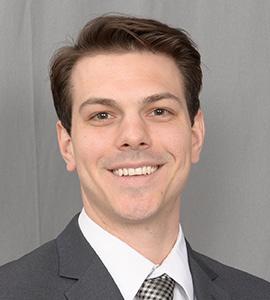
Connor Walsh , CISSP, CCNA, Network+, a biomedical engineer specializing in medical device cybersecurity at the VHA Office of Healthcare Technology Management.
EXPERT ADVICE 74 TechNation | May 2024





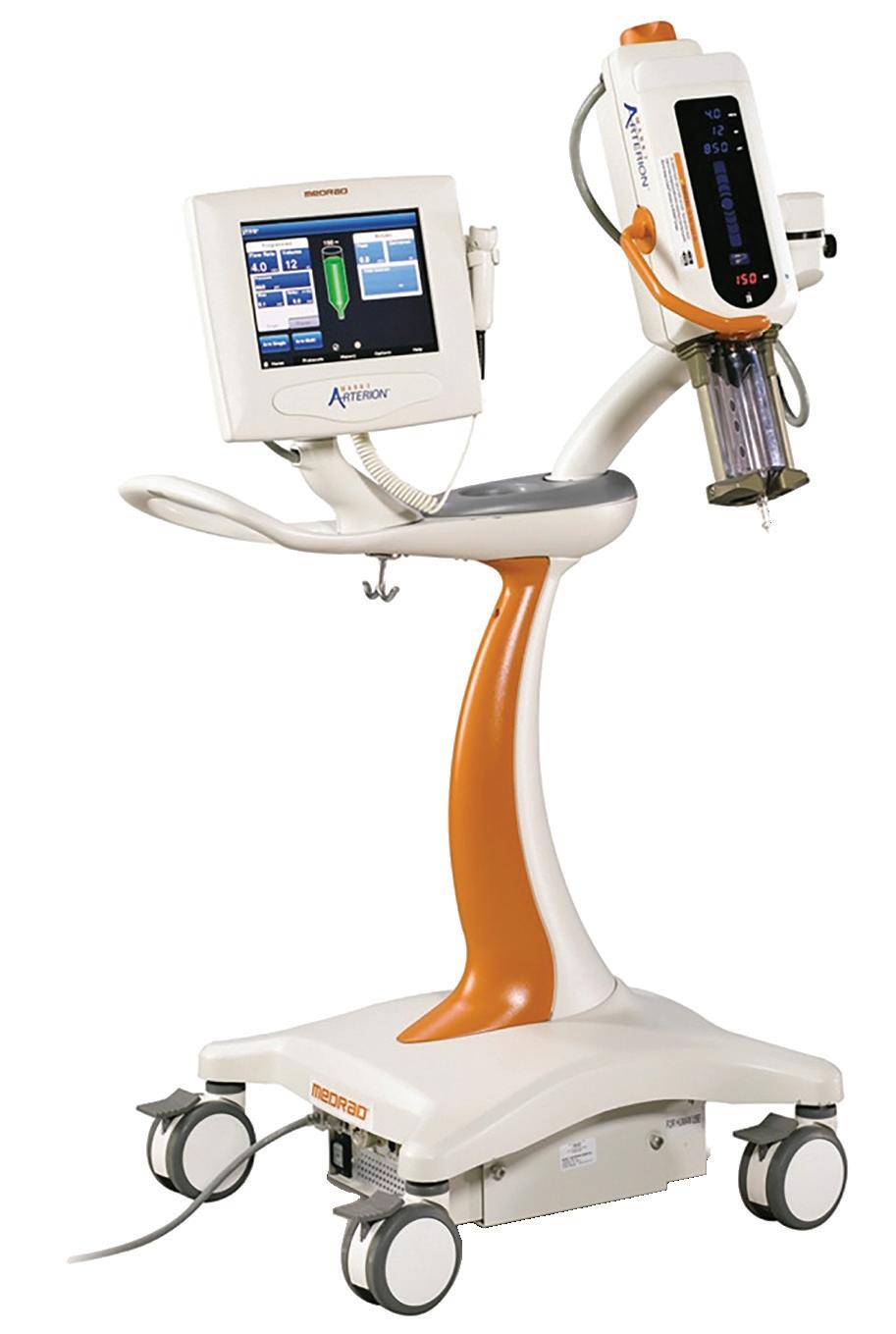
May 2024 | TechNation 75 Contrast Injector Training • 100s of Error Codes not found in OEM Lit • Online and Onsite Training Available • Training BMETs since 2008 • Up to $5,500 in FREE Parts, PM Kits and Service • Massive Troubleshooting Library WWW.MAULLBIOMEDICAL.COM | 440-724-7511 | STEVE@MAULLBIOMEDICAL.COM ON-SITE AVAILABLE TV ANNOUNCING THE LAUNCH OF Check out our Youtube channel for more information and exclusive content!

HEALTH-ISAC Building Resilience During Mergers and Acquisitions
BY PHIL ENGLERT
Health care provider mergers and acquisitions have been a common trend in the health care industry for several years. In 2020 Atrium Health, based in Charlotte, North Carolina, and Wake Forest Baptist Health, based in Winston-Salem, North Carolina, announced plans to merge, forming one of the largest health care systems in the region. Also in 2020, Providence St. Joseph Health, a large health system based in Renton, Washington, merged with Adventist Health System, based in Altamonte Springs, Florida. This merger created one of the largest faith-based health care systems in the United States. In the prior year, though not a merger in the traditional sense, but rather the result of a mega-merger between Catholic Health Initiatives and Dignity Health in 2019. CommonSpirit Health became one of the largest nonprofit health systems in the U.S., operating in 21 states. CommonSpirit then expanded into Utah by acquiring 5 additional hospitals in 2023.
Bringing two organizations together in merger and acquisition (M&A) activity can be a complex process fraught with challenges including cultural differences, leadership alignment, employee morale, stakeholder communications, and patient experience and perception. Managing change effectively can reduce resistance and accelerate success. A recent Bain and Company report states that pre-merger due diligence fails to provide an adequate roadmap for capturing synergies and creating value 42% of the time. As technology managers, the strategic decisions to entertain and pursue M&A opportunities are almost always made well above our pay grade. That doesn’t mean there isn’t an opportunity to influence
and thus make our roles easier during the integration phases. Before we explore how technology leaders might influence deals and the resultant operations, let’s explore some of the challenges technology leaders face in supporting M&A activity.
Mergers typically involve two competitors joining forces while acquisitions are pursued when buying is perceived as easier than creating or building from scratch. Early discussions at the senior executive level are strategic and conceptual. From a business perspective due diligence is about legal structures and ownership authorities to enter into the transaction. The choice to pursue might be predetermined even before the technical due diligence begins. At some point, you will be brought into the process. Leadership often desires 100% confidence in the technology or security of the infrastructure while strategic decisions are made on the best available information at the time. How can technology managers engage regardless of what point the deal has progressed to?
Human nature, it seems, welcomes change … until it impacts you. Mingling two organizations is not easy. Ideally, the due diligence process includes a complete review of the technology infrastructure and the governance and maintenance operations processes that have kept it operational. Often, this is a paper chase of surveys, interviews and audits that may not paint a complete picture. Sure, they may have a Security Information and Event Management (SIEM) system, but does it cover the entire tech stack? Is the response adequate, or are unaddressed risks stacking up? Have they held things together with band-aids and baling wire rather than investing in upgrades, updates and replacements? Do staff feel defeated rather than empowered?
Each merger and acquisition is unique. It is helpful to break the process into three phases: Pre-Acquisition, Post Acquisition, and Integration so that you have a framework to work through no matter what your point of engagement is.
EXPERT ADVICE 76 TechNation | May 2024
Ideally, the Pre-Acquisition phase when the bulk of the information gathering takes place often involves questionnaires to reveal the state of technology and infrastructure. We’ll focus on cybersecurity for a consistent thread to tease out. Questions often involve the size of the budget and the IT security spend as a percentage of the IT spend. Questions about a vulnerability management policy and program as well as patching. What is the history of cybersecurity incidents? What portions of the cybersecurity program are managed by third parties? What are the recent investments in tools and technologies? Is there a cybersecurity insurance policy and have there been any claims? Get an outside-in look at the organization’s security posture using a tool like Security Scorecard. The goal is to understand the gaps and estimate the costs to achieve the desired cybersecurity maturity level.
Phase two, or Post-Acquisition begins on day 0 of operate. This is when, for better or for worse, you’ve taken on the responsibility for the newly acquired assets and the risks they introduce to your organization. Organizations should expect to experience increased levels of attacks post-acquisition. Threat actors may target the connections between the two organizations knowing that staff priorities may have been shifted away from primary security functions or the disparate technology staff dilute effectiveness and efficiencies depending on attack vectors and techniques employed. Phase 1 may
not be complete when Phase 2 begins. Continuing to collect information and refine details will enable you to build better integration plans.
The integration phase is dependent on the quality of information gathered during the pre-acquisition phase and the experience gained during phase two. Re-evaluate the organization’s cybersecurity posture now that it is combined. Each project will be unique to the purpose, objectives, technologiesw and culture. Use the information gathered in Phase 1 to identify gaps and begin correcting known issues.
No matter when you get brought into the process you can use the three-phase framework to identify and prioritize what needs to be done to build resilience into the technology stack of the new organization. Gather information and formulate a plan. Prepare for increased threat activity and develop a response plan as the new company sandbox takes shape. Accept that each merger and acquisition will be unique and bring a flexible mindset while gathering the information to develop an effective plan to establish resilience within the new organization.
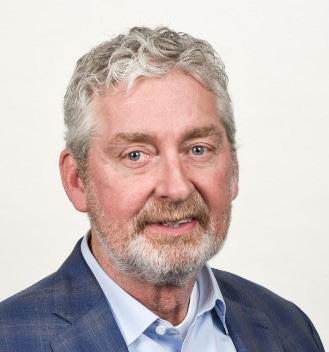
Phil Englert is the director of medical device security for Health-ISAC.

Reduce Spend
Save 15% or more on your current service spend without sacrificing quality or performance.
Really Safe
In addition to quality onsite support, our RenovoSecure, managed cybersecurity program, helps keep your networked medical devices protected and your patients safe.
Reliable Service
biomedical and imaging services, including OEM centric service models for critical devices.
May 2024 | TechNation 77
Customized, flexible
deliver comprehensive
Cybersecurity. Clinical Engineering. Capital Equipment Planning. renovo1.com HTM: It’s Not Just Something We Do, It’s ALL We Do… and we make it Really Simple. Healthcare Technology Management
programs that
THE FUTURE Training to Repair Emerging Health Devices
BY STEVEN J. YELTON, P.E., AAMIF
We are currently reviewing our HTM curriculum at Cincinnati State. We are looking into lecture, laboratory and co-operative education experiences. One topic that remains on the forefront of our training needs is emerging technologies specifically in the areas of AI, home-based healthcare and monitoring, and wearable health devices.
Many of our hospital-based employers are supporting home healthcare within their HTM departments and have been doing so for many years. As such, our co-op students who have the opportunity to work in these areas are receiving experience in areas previously not possible. Our students are getting experience in Internet connectivity within the home as well as connection speeds and stability of the connection. Our co-op students are working alongside technicians who go into the patient’s residence to assure that the medical equipment placed within the home is working and communicating properly. The technicians have learned many skills “on the job” that were previously unnecessary.
It is becoming apparent that we are training a different HTM technician than the ones we educated just a decade ago. Our students have always taken courses in electronics, computer systems, programming and computer networking. Now, the students must be adept at evaluating how to remotely connect devices as well as preserving data security and privacy. This is critical where patient data is being collected and stored. It is imperative to protect privacy, data security and cyber threats. This basically requires an HTM-centered cybersecurity course. Several of our hospital-based employers have
cybersecurity experts employed within the HTM department. Since this position has been in-place for many years, in some instances, these experts are very experienced in the threats that occur within medical devices. Our students have had the opportunity to receive some great training from these individuals.
It also became apparent that there must be standards that relate to home healthcare. AAMI has addressed this issue with the standard: ANSI/AAMI HA60601-1-11:2011 (IEC 60601-1-11:2010, MOD), Medical electrical equipment - Part 1–11: General requirements for basic safety and essential performance—Collateral Standard: Requirements for medical electrical equipment and medical electrical systems used in the home healthcare environment. IEC 60601-1-11, first edition, specifies basic safety and essential performance of medical electrical equipment and systems that are intended by the manufacturer for use in the home healthcare environment. The United States adopted the IEC standard as ANSI/AAMI HA60601-1-11 in 2011 with national deviations. The primary differences are the removal of elder care facilities as a home environment; the modification of certain compliance statements to include inspection of the usability engineering file; and the inclusion of the consideration of the abilities of the lay operator. In addition, some modifications were made to the wording to improve clarity.
With all of this said, we are looking at a significant modification of our HTM curriculum. I thought this was a good time to re-enter this discussion. Now we are addressing the issue of AI training. There are many articles on AI and its influence on health care. This is a very hot topic in our field. I get the opportunity to meet with numerous HTM directors through my role at the hospital and the college. I posed a question to them: “I know that AI is an important topic in health care. I would like to know what you think are important topics that our students should know regarding AI?” Beyond that, we are limited by our board of regents as to the number of credit hours
EXPERT ADVICE
78 TechNation | May 2024
that can be in our curriculum which means that we may need to remove some courses to add new technical courses. With that in mind, “What would you remove?”
The answer that I received was, “Beyond basic AI principles, we don’t know enough about AI to know what new technicians need to know!” They are all in a learning mode and are trying to figure out what is coming. They do acknowledge that AI is appearing rapidly in health technology. An answer to what would your remove was, “Nothing, we need everything that we already teach in addition to the new technologies.”
I hope this spurs some discussions beyond AI and delves into education with respect to AI.

Steven J. Yelton, P.E., AAMIF; is a senior HTM engineer for a large health network in Cincinnati, Ohio and is a professor emeritus at Cincinnati State Technical and Community College where he teaches biomedical instrumentation (HTM) courses.


May 2024 | TechNation 79
BIOMED BRAINBUSTER

ACROSS 1 Tube used to drain fluids from body cavities or distend body passages 5 Dosage measurement, abbr. 10 ___ general rule, 2 words 11 Average 12 The first word in CT 14 Kids’ card game 15 Device that measures oxygen saturation in a blood sample 17 Operation, abbr. 19 Irregular heartbeat, abbr. 22 Olfactory organ 23 French “of the” 24 ___plasm- abnormal growth 27 Strength 29 Lab specimens 30 Company dedicated to serving all patient monitoring needs 33 Worry persistently 34 Scale measurement, abbr. 35 Medical device that measures pressure loss and oxygen intake DOWN 1 Metal tube to draw off fluid or to introduce medication 2 Top half of a body 3 Emotional intelligence, for short 4 Feeling 6 Clean up a wound, say 7 Compass point, abbr, 8 Pieces of gauze 9 CPAPs solve these 13 Feverish, perhaps 16 Shape of some microorganisms 18 One of the vital signs 20 Insert
mouth
nose
open 21 It’s sting might require use
an epipen to handle allergic reactions 25 Above 26 Cleansing or irrigation 27 Eye part 28 Summa __ laude 29 Skeletal axis 31 Peanut or sunflower ___ 32 Type of scan
a device into the
or
and trachea to hold it
of
BREAKROOM
Visit 1technation.com/crossword for an interactive puzzle. 80 TechNation | May 2024
SERVICE INDEX
Anesthesia
USOC Medical usocmedical.com • 855-888-8762
EQ2
TruAsset,
• 888-312-4367
Vizzia Technologies
BC Group International, Inc BCGroupStore.com • 314-638-3800
of Biomedical Equipment Technology cbet.edu • 866-866-9027
J2S Medical www.j2smedical.com
Maull Biomedical Training maullbiomedicaltraining.com • 440-724-7511
MultiMedical Systems multimedicalsystems.com • 888-532-8056
Probo Medical probomedical.com • 3174947872
Pronk Technologies, Inc. pronktech.com • 800-609-9802
Renovo Solutions
35, 84
renovo1.com • 844-4RENOVO 77
Soma Tech Intl somatechnology.com • 800-438-7662
Probo Medical probomedical.com • 3174947872
Soma Tech Intl somatechnology.com
Jet Medical Electronics Inc www.jetmedical.com • 714-937-0809
Southeastern Biomedical, Inc sebiomedical.com/ • 828-396-6010
CMMS
eq2llc.com • 888-312-4367
Pronk Technologies, Inc. pronktech.com • 800-609-9802 2, 35, 84
TruAsset, LLC truasset.com • 214-276-1280
Computed Tomography
CM Parts Plus cmpartsplus.com • 877-267-2784
Diagnostic Solutions diagnostic-solutions.com • 330-296-9729
KEI Medical Imaging Services keimedicalimaging.com • 512-477-1500
Maull Biomedical Training maullbiomedicaltraining.com • 440-724-7511
RTI Group North America rtigroup.com • 800-222-7537
Tri-Imaging Solutions triimaging.com
Consultancy NVRT Labs Inc. nvrtlabs.com •
Contrast Media Injectors
Maull Biomedical Training maullbiomedicaltraining.com • 440-724-7511
Cyber Security
College of Biomedical Equipment Technology cbet.edu • 866-866-9027
Renovo Solutions renovo1.com • 844-4RENOVO
Defibrillator
Soma Tech Intl somatechnology.com • 800-438-7662
Diagnostic Imaging
CM Parts Plus cmpartsplus.com • 877-267-2784
Diagnostic Solutions diagnostic-solutions.com • 330-296-9729
Innovatus Imaging innovatusimaging.com • 844-687-5100
Maull Biomedical Training maullbiomedicaltraining.com • 440-724-7511
Company Info AD PAGE PARTS SERVICE TRAINING Company Info AD PAGE PARTS SERVICE TRAINING
3 P P Asset Management
eq2llc.com
23
Solutions renovo1.com
77 P P
Renovo
• 844-4RENOVO
truasset.com •
25, 84
LLC
214-276-1280
https://vizziatech.com •
30 Association AAMI www.aami.org • 703-525-4890 34 P Biomedical
855-849-9421
88
11 P
College
84 P P
• 844-342-5527
75 P P P
85 P P
17
2,
54 C-Arm
17 P P
54 P P
• 800-438-7662
Cardiac Monitoring
75 P P Cardiology
6 P P
EQ2
23
25, 84
79 P P
69 P P
55
75 P P P RSTI
•
7 P P P
64
rsti-training.com
800-229-7784
54, 87 P P P
• 855-401-4888
66
75 P P P
11 P
77
54 P P
79 P P
69 P P
8
75 P P P May 2024 | TechNation 81
SERVICE INDEX
Company Info AD PAGE PARTS SERVICE TRAINING Company Info AD PAGE PARTS SERVICE TRAINING
Probo Medical probomedical.com • 3174947872 17 P P Renovo Solutions renovo1.com • 844-4RENOVO 77 RTI Group North America rtigroup.com • 800-222-7537 64 Tri-Imaging Solutions triimaging.com • 855-401-4889 54, 87 P P Education/Training College of Biomedical Equipment Technology cbet.edu • 866-866-9027 11 P ECRI Institute ecri.org • 610-825-6000 40 P Maull Biomedical Training maullbiomedicaltraining.com • 440-724-7511 75 P NVRT Labs Inc. nvrtlabs.com • 66 RSTI rsti-training.com • 800-229-7784 7 P Tri-Imaging Solutions triimaging.com • 855-401-4892 54, 87 Employment/Recruiting HTM Jobs www.htmjobs.com • 48 Multimedical Systems multimedicalsystems.com • 888-532-8056 85 Endoscopy Healthmark Industries hmark.com • 800-521-6224 27, 49 P P Multimedical Systems multimedicalsystems.com • 888-532-8056 85 P P General ALCO Sales & Service Co. www.alcosales.com • 800-323-4282 47 EQ2 eq2llc.com • 888-312-4367 23 Infection Control Healthmark Industries hmark.com • 800-521-6224 27, 49 P P Infusion Pumps AIV aiv-inc.com • 888-587-6759 71 P P BC Group International, Inc BCGroupStore.com • 314-638-3800 88 J2S Medical www.j2smedical.com • 844-342-5527 84 P P J2S Medical www.j2smedical.com • 844-342-5527 84 P P Multimedical Systems multimedicalsystems.com • 888-532-8056 85 P P PM Biomedical pmbiomedical.com • 800-777-6474 79 P P Pronk Technologies, Inc. pronktech.com • 800-609-9802 2, 35, 84 USOC Medical usocmedical.com • 855-888-8762 3 P P Installs/Deinstalls KEI Medical Imaging Services keimedicalimaging.com • 512-477-1500 55 Laboratory College of Biomedical Equipment Technology cbet.edu • 866-866-9027 11 P Mammography RSTI rsti-training.com • 800-229-7784 7 P P P Monitors/CRTs Integrity Biomedical Services integritybiomed.com • 877-789-9903 55 P P Soma Tech Intl somatechnology.com • 800-438-7662 54 P P Tenacore LLC tenacore.com • 800-297-2241 4 P P MRI CM Parts Plus cmpartsplus.com • 877-267-2784 79 P P Diagnostic Solutions diagnostic-solutions.com • 330-296-9729 69 P P Innovatus Imaging innovatusimaging.com • 844-687-5100 8 KEI Medical Imaging Services keimedicalimaging.com • 512-477-1500 55 Probo Medical probomedical.com • 3174947872 17 P P Tri-Imaging Solutions triimaging.com • 855-401-4891 54, 87 P P Nuclear Medicine Diagnostic Solutions diagnostic-solutions.com • 330-296-9729 69 P P Online Resource MedWrench www.MedWrench.com • 62 Oxygen Blender Tenacore LLC tenacore.com • 800-297-2241 4 P P Patient Monitors AIV aiv-inc.com • 888-587-6759 71 P P BC Group International, Inc BCGroupStore.com • 314-638-3800 88 82 TechNation | May 2024
SERVICE INDEX
Software
Telemetry
Test Equipment
BC Group International, Inc
Technologies, Inc. pronktech.com
RTI Group North America rtigroup.com • 800-222-7537
Southeastern Biomedical, Inc sebiomedical.com/ • 828-396-6010
Ultrasound
Innovatus Imaging innovatusimaging.com • 844-687-5100
MW Imaging www.mwimaging.com • 877-889-8223
Probo Medical probomedical.com • 3174947872
Summit Imaging Inc mysummitimaging.com • 866-586-3744
RSTI rsti-training.com • 800-229-7784
RTI Group North America rtigroup.com • 800-222-7537
Tri-Imaging Solutions triimaging.com • 855-401-4890
Company Info AD PAGE PARTS SERVICE TRAINING Company Info AD PAGE PARTS SERVICE TRAINING
Integrity Biomedical Services integritybiomed.com • 877-789-9903 55 P P PM Biomedical pmbiomedical.com • 800-777-6474 79 P P
Technologies, Inc. pronktech.com • 800-609-9802 2, 35, 84
Biomedical, Inc sebiomedical.com/ • 828-396-6010 6 P P Tenacore LLC tenacore.com • 800-297-2241 4 P P USOC Medical usocmedical.com • 855-888-8762 3 P P Refurbish Innovatus Imaging innovatusimaging.com • 844-687-5100 8 Rental/Leasing J2S Medical www.j2smedical.com • 844-342-5527 84 Repair AIV aiv-inc.com • 888-587-6759 71 P P BC Group International, Inc BCGroupStore.com • 314-638-3800 88 CM Parts Plus cmpartsplus.com • 877-267-2784 79 P P Innovatus Imaging innovatusimaging.com • 844-687-5100 8 Integrity Biomedical Services integritybiomed.com • 877-789-9903 55 PM Biomedical pmbiomedical.com • 800-777-6474 79 P P
Tech Intl somatechnology.com • 800-438-7662 54 Tenacore LLC tenacore.com • 800-297-2241 4 Replacement Parts AIV aiv-inc.com • 888-587-6759 71 P P Diagnostic Solutions diagnostic-solutions.com • 330-296-9729 69 P P Integrity Biomedical Services integritybiomed.com • 877-789-9903 55 J2S Medical www.j2smedical.com • 844-342-5527 84 KEI Medical Imaging Services keimedicalimaging.com • 512-477-1500 55 PM Biomedical pmbiomedical.com • 800-777-6474 79 P P Tenacore LLC tenacore.com • 800-297-2241 4 USOC Medical usocmedical.com • 855-888-8762 3
Pronk
Southeastern
Soma
EQ2 eq2llc.com • 888-312-4367 23 TruAsset, LLC truasset.com • 214-276-1280 25, 84 Surgical MultiMedical Systems multimedicalsystems.com • 888-532-8056 85 P
AIV aiv-inc.com • 888-587-6759 71 P P Integrity Biomedical Services integritybiomed.com • 877-789-9903 55 P P PM Biomedical pmbiomedical.com • 800-777-6474 79 P P USOC Medical usocmedical.com • 855-888-8762 3 P P
BCGroupStore.com • 314-638-3800 88 P P Healthmark
• 800-521-6224 27, 49 P P IMT Analytics imtanalytics.com • 66
•
2, 35, 84 P P
21
Industries hmark.com
Pronk
800-609-9802
Radcal Corporation www.radcal.com • 800-423-7169
64
6 P P
8
5 P P P
17 P P
41 P P P X-Ray
7 P P P
64
54, 87 P P May 2024 | TechNation 83
• $300 a month
• 1/6 page ad included in the marketplace
• Up to 5 categories in our Service Index
• Your company name, website and phone included in your Service Index listings
• Your company name in the alphabetical business index
• Appears in the print and digital magazine
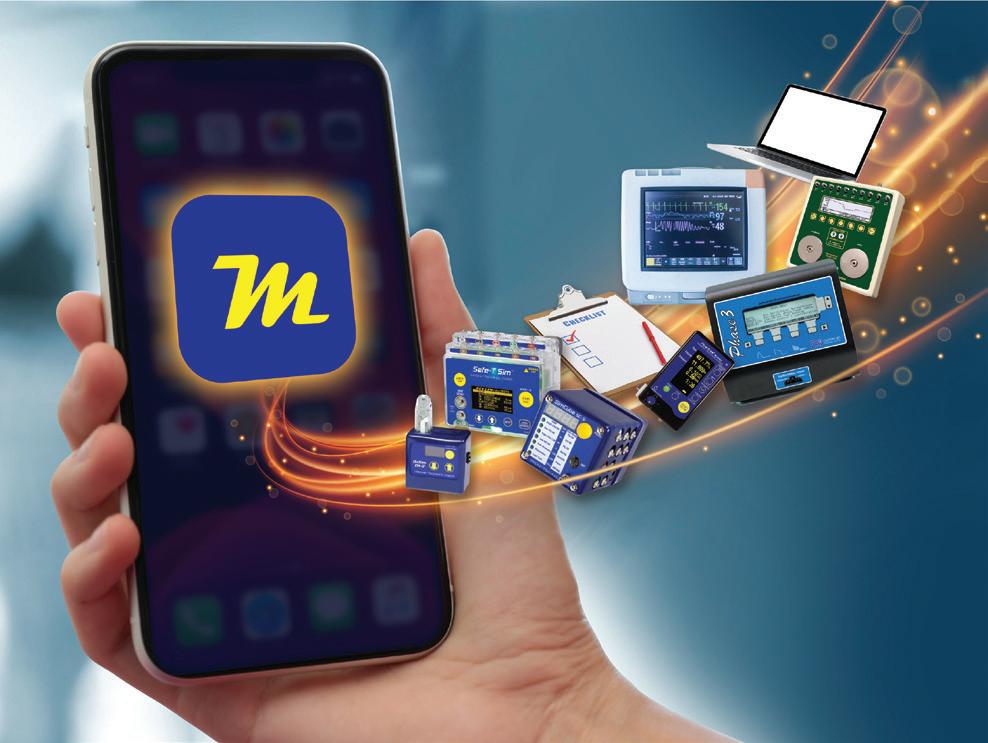

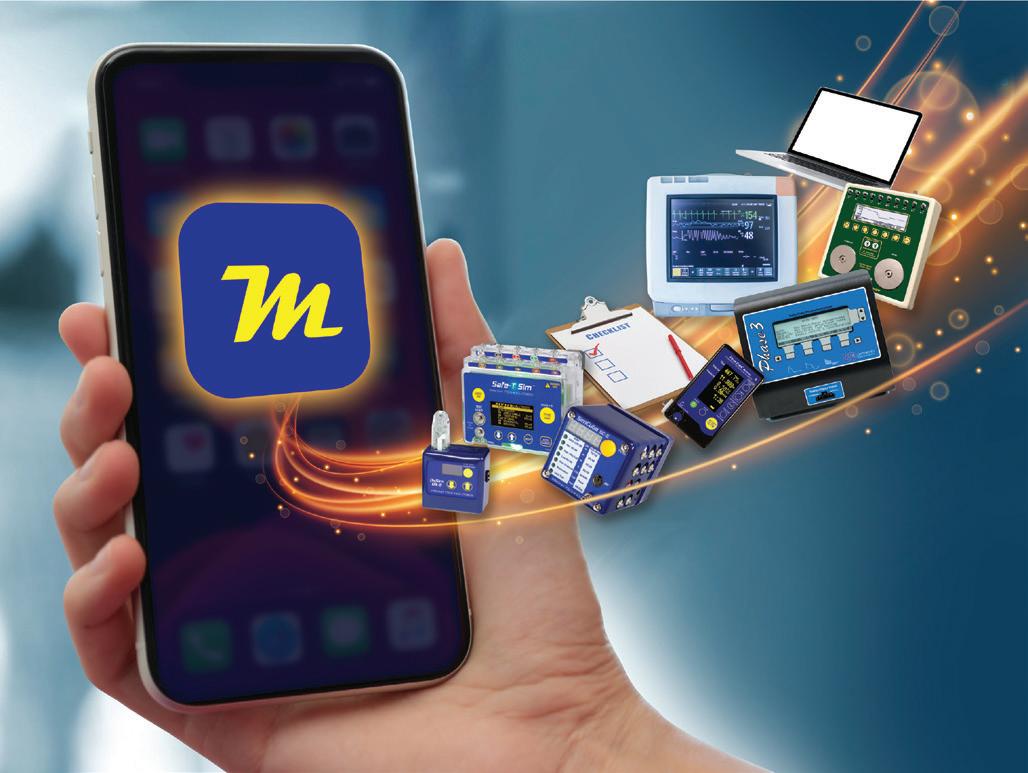





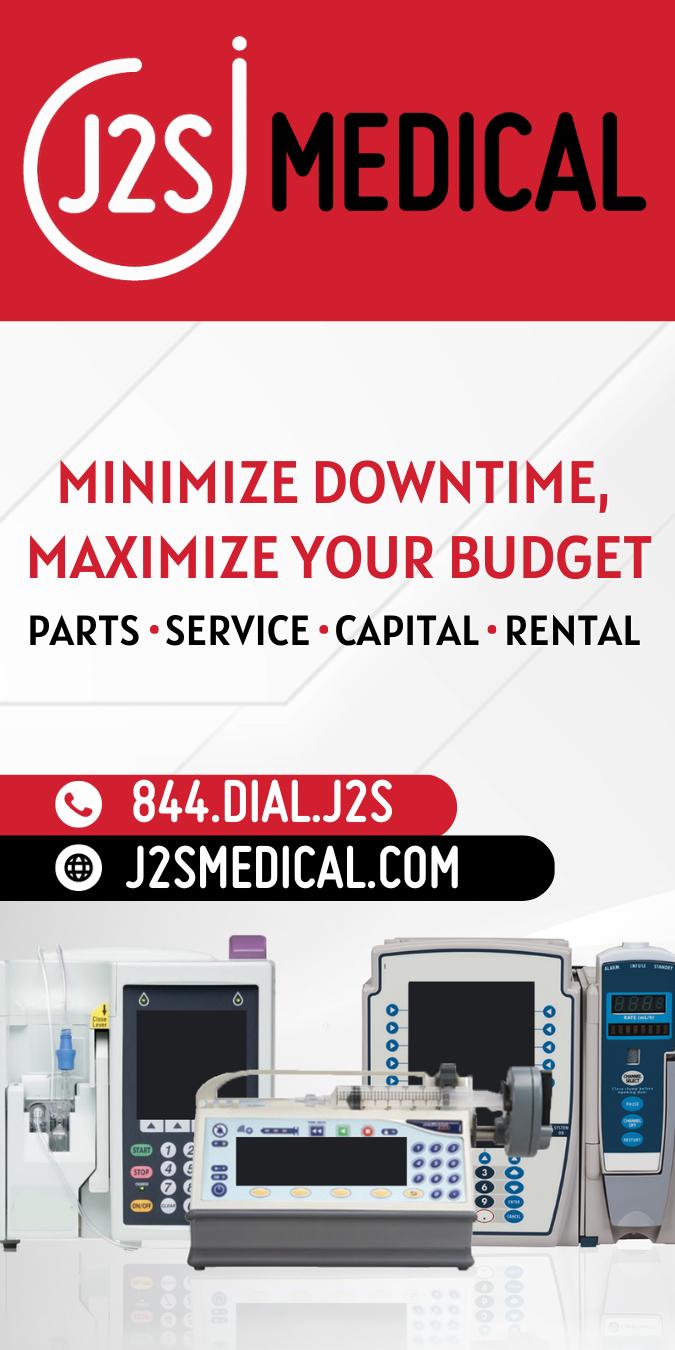
Wireless automation has arrived! Automated Electrical Safety, Simulation & IV Pump Test Sequences P Complete control + data capture P Run user-defined / manufacturers’ checklists P Generates a complete electronic test report Operate Efficiently, Perform Real Time, Simplify Compliance Simplify the PM Process www.truasset.com 214-276-1280 sales@truasset.com PREFERRED VENDOR MARKETPLACE
PREFERRED VENDOR
BECOME A
YOUR AD IS MISSING! CONTACT US AT SALES@MDPUBLISHING.COM YOUR AD IS MISSING! 84 TechNation | May 2024
ALPHABETICAL INDEX
MMS MAGIC

AAMI 34 AIV 71 ALCO Sales & Service Co. ……… 47 BC Group International, Inc 88 CM Parts Plus 79 College of Biomedical Equipment Technology 11 Diagnostic Solutions 69 ECRI Institute …………………… 40 EQ2 23 Healthmark Industries 27, 49 HTM Jobs ……………………… 48 IMT Analytics 66 Innovatus Imaging 8 Integrity Biomedical Services 55 J2S Medical……………………… 84 Jet Medical Electronics Inc 75 KEI Medical Imaging Services 55 Maull Biomedical Training 75 MedWrench 64 MultiMedical Systems 85 MW Imaging 5 NVRT Labs Inc. 66 PM Biomedical 79 Probo Medical 17 Pronk Technologies, Inc. 2, 35, 84 Radcal Corporation 21 Renovo Solutions 77 RSTI ……………………………… 7 RTI Group North America 64 Soma Tech Intl 54 Southeastern Biomedical, Inc 6 Summit Imaging Inc 41 Tenacore LLC 4 Tri-Imaging Solutions 54, 87 TruAsset, LLC 25, 84 USOC Medical 3 Vizzia Technologies 30 May 2024 | TechNation 85 Experience the magic of having skilled HTM professionals ready to walk in your door! Short or long term BMET staffing available. Just reach out and say Hello@multimedicalsystems.com and one of our team members will reach out to you. For more services visit us at www.multimedicalsystems.com EXPERIENCE THE
SHOW US YOUR SH P
The Show Us Your Shop feature is where TechNation will share submitted photos of your biomed/HTM shops. Clean? Messy? We want to see them ALL!

We went in for a routine maintenance visit, got the system all nice and sparkly, making sure to care for those brushes. After buttoning it all up, we ran quality checks and calibration, shut the system down for the final check, and were ready to inform the customer of the completion of the PM... But, while booting the system back up, it decided today was the day to turn this smooth PM into a nightmare. The system started showing Collimator errors, and we immediately got to work to resolve the issue. This turned from a PM into a corrective action real quick. We immediately ordered parts and were able to return the next day, replaced the Collimator, completed calibration and FDA forms, and returned the system to the customer. I’m grateful to work with such amazing people and customers. It’s not always smooth sailing, but nothing surprises me in the field.
Simply post your photo on social media and use the hashtag #ShowUsYourShop. A member of the TechNation team will contact you for approval. A Day in the Life of a Biomedical Technician
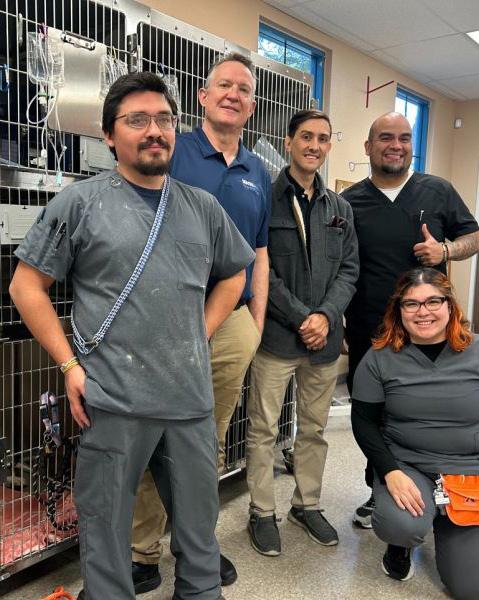

Nationwide Medical Service is happy to serve the veteranarian community. The great team at Pet Time Animal Hospital in Upland, CA keeps all their medical equipment clean and maintained to ensure the highest level of care for our family pets. It was a pleasure to serve you!
Photo by Yousif Elbosiry
Photo by Matt Haley
BREAKROOM
Photo by Daniel Ruiz
86 TechNation | May 2024
THE TOTAL PACKAGE HAS ARRIVED.
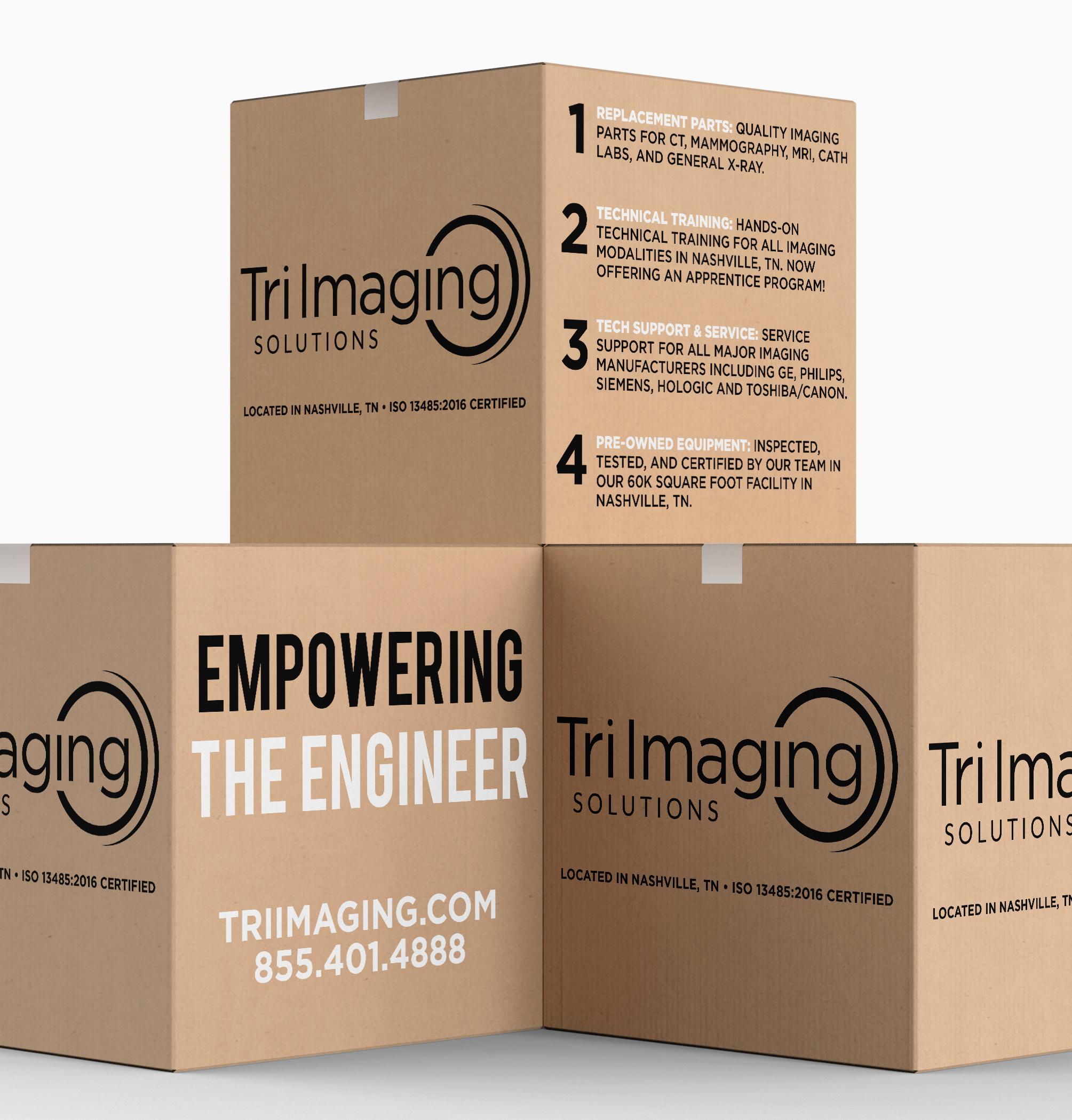








































































































 Webb Clark, Senior Sales Manager
Webb Clark, Senior Sales Manager





































































































































 Matt Tomory, Innovatus Imaging Vice President of Sales and Marketing
Matt Tomory, Innovatus Imaging Vice President of Sales and Marketing


































